










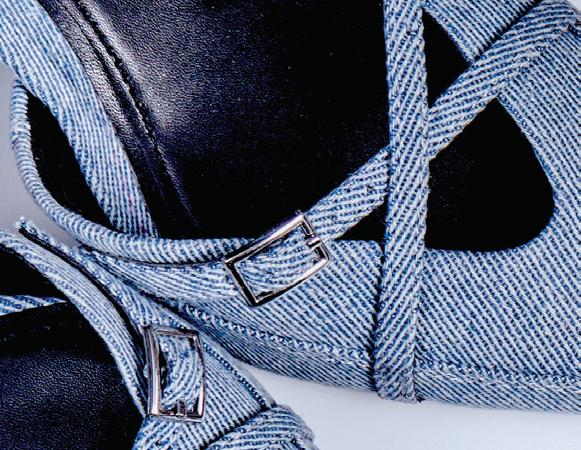










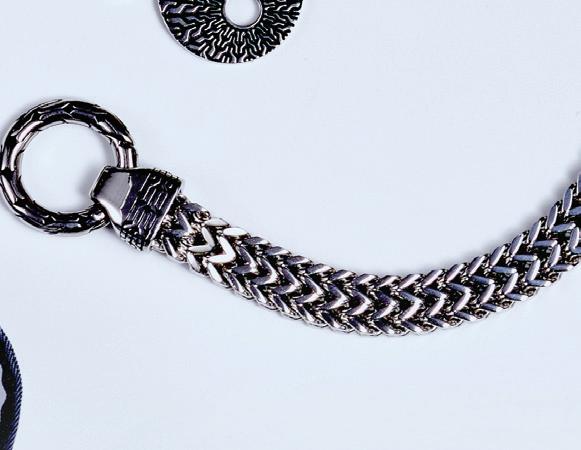


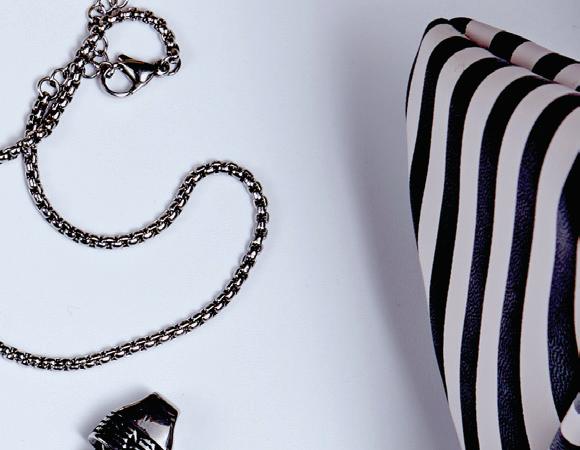
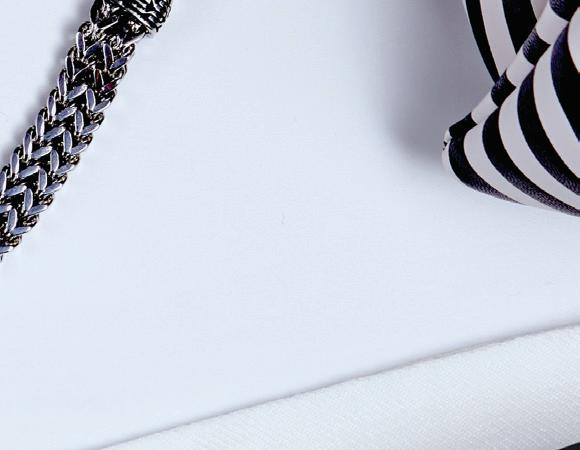



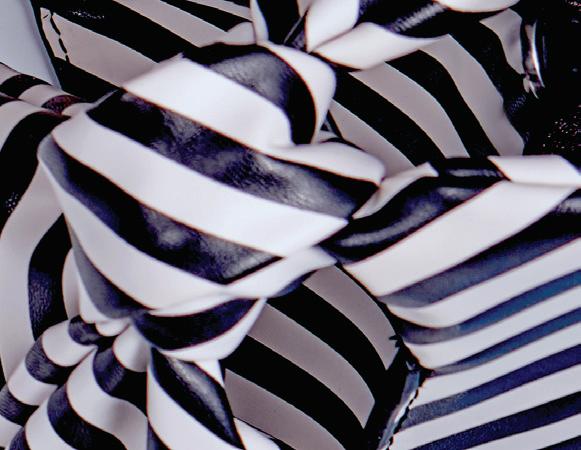






































As one of the nation’s leading providers of factoring and financing, we match our 100-plus years of experience with flexible solutions and actionable insights. Our team has the financial savvy to help companies unlock liquidity and manage credit risk so they can fulfill business demands and keep growing stronger. Let’s explore how we can put our experience to work for you.




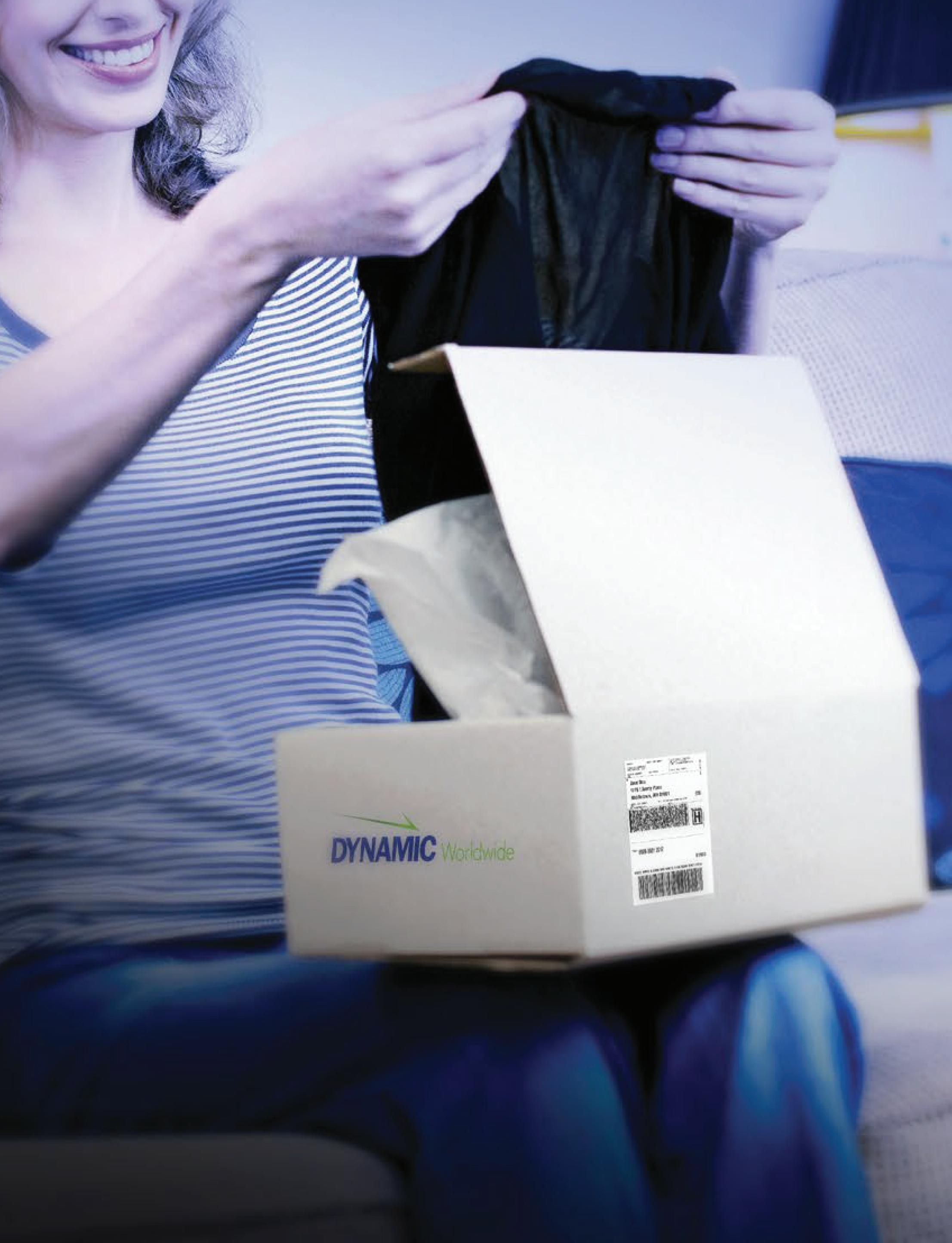


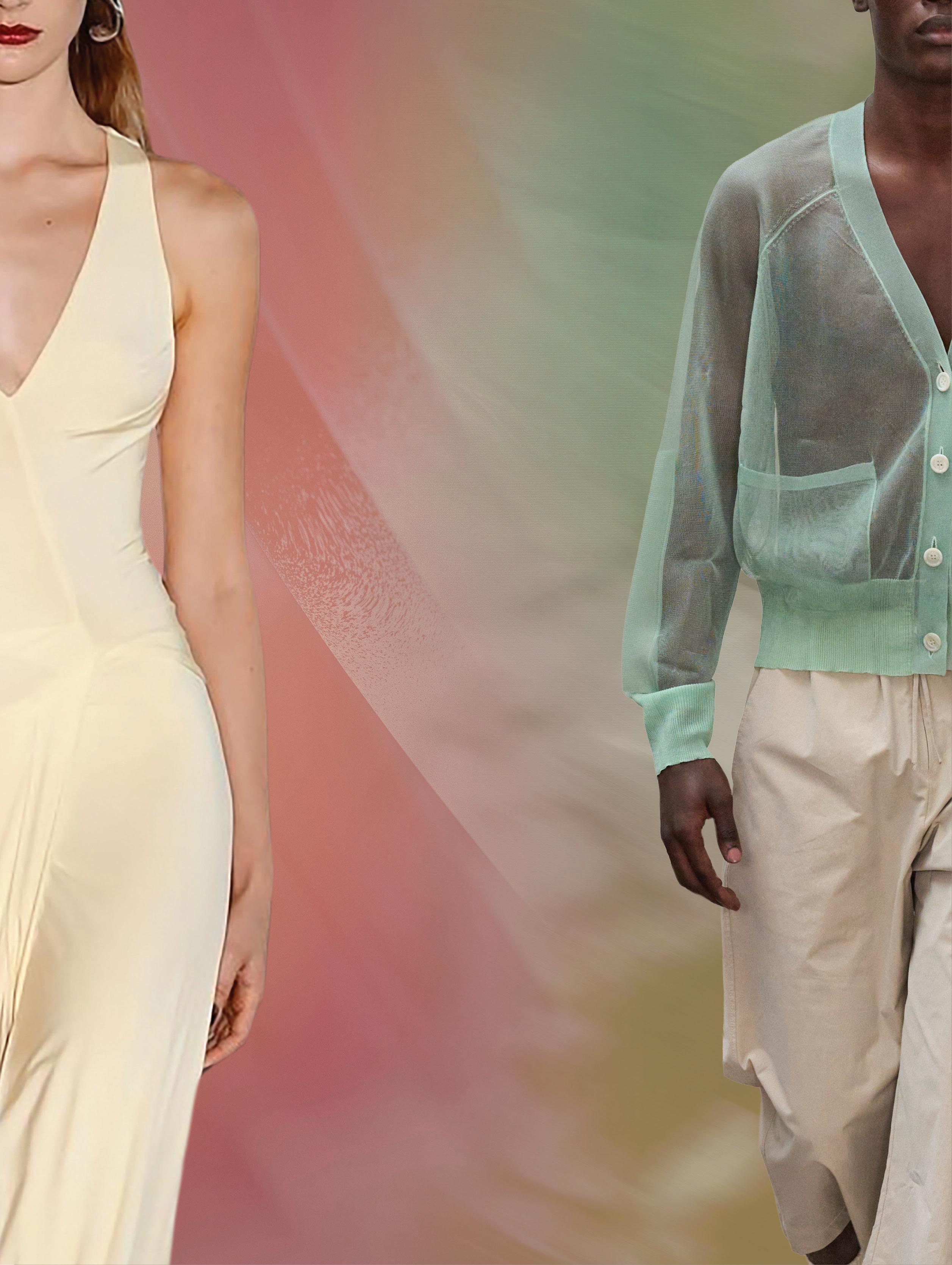




























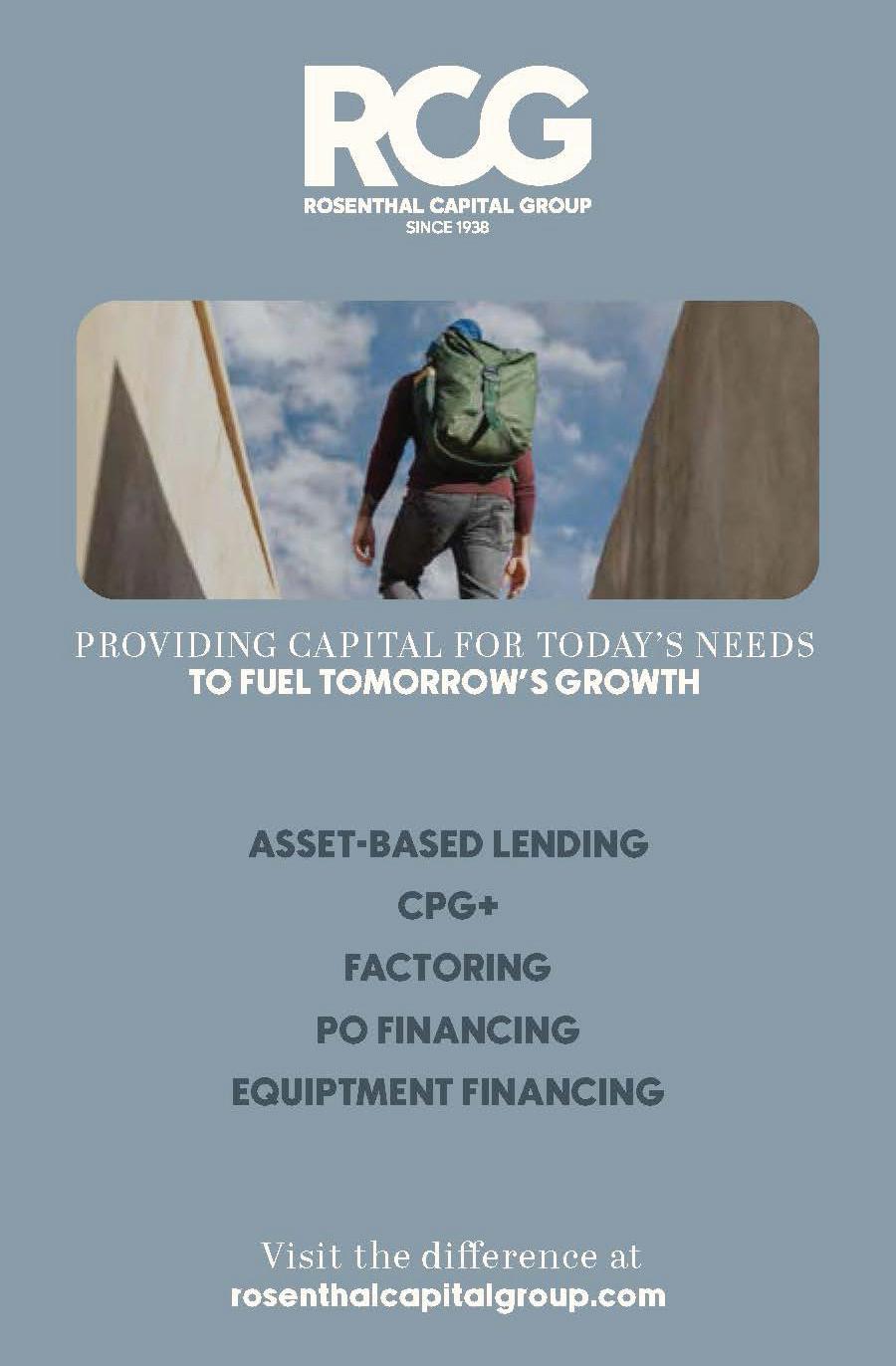






PRESIDENT/CEO
Jeff Mann
EDITORIAL
Editor
Rose Leveen
Editorial Consultant
Debra Hazel
Associate Editor
Penelope Herrera
Southeast Editor
Shanna Forrestall
Director of Communications and Marketing
Penelope Herrera
Graphic Design
Virginia Sanchez
Director of Newsletter Division
Cheri Phillips
West Coast Office: 578 Washington Blvd., Suite 827 Marina Del Rey, CA 90292 866-306-MANN (6266)
ART DIRECTOR
Virginia Sanchez
COVER PHOTOGRAPHY
525 America
CONTRIBUTORS
Charles Klein
David Harouche
Debra Hazel
Dora Lau
Frank DeLucia
Ilisa Wirgin
Krieger Worldwide
Max Ma
Michael Sacco
Paul Magel
Rabbi David Laine
Ron Friedman
Salvatore J. Stile II
BUSINESS
Technology Consultant
Eric Loh
DISTRIBUTION
Mitchell’s Delivery Service
California Distribution
MD Service
West Coast Advisor
Daniella Platt
DIGITAL MEDIA
Virginia Sanchez
Web Developer
CS Designworks
East Coast Office: 450 7th Ave, Suite 2306 New York, NY 10123 212-840-MANN (6266)




Hi, everyone. October was one of my busiest months of the year, with dozens of events, sometimes as many as three in one night. The month started in a special way with the Mann Charitable Foundation’s annual golf outing at the beautiful Fresh Meadow Country Club. Over 150 people joined us for a day of golf, and we enjoyed a lovely dinner for 60 guests in the evening. The event was a heartfelt tribute to the life of Michael Kerr, someone many attendees knew and loved.
I also attended Delivering Good’s 40th anniversary celebration at Gotham Hall, Big Brothers Big Sisters’ jazz night, The Angel Ball and numerous other philanthropic events.
This month was also a blur, as the editors and I were hard at work bringing each magazine together. They each do a great job, and I’m always proud of what we produce for readers. Our contributors, including my good friend Ron Friedman, Michael Sacco and Krieger Worldwide, are at the top of their fields, and we couldn’t publish such a cutting-edge magazine without their contributions. We’re always looking for more contributors who have something new and unique to say, but all our current contributors are really superb.
As I said, this month was a whirlwind. It’s been really exhausting but also so rewarding. Seeing the great magazines fi nally get published and going to such important, meaningful events is all worth it in the end.
Before I go, I want to remind everyone about our Dec. 1 event, “Artificial Intelligence Unplugged,” which I am excited to be hosting in partnership with CBIZ. Artificial intelligence is more than a buzzword these days, so this will be a can’t-miss event for anyone in the industry. I want to shout out our keynote speaker, Rob McGillen, and the event’s cochairs, Michael Sacco and Abe Schlisselfeld, who are three of CBIZ’s fi nest. Please register soon!

“I still find each day too short for all the thoughts I want to think, all the walks I want to take, all the books I want to read, and all the friends I want to see.”
— John Burroughs

Hi there!
I’m thrilled to present the November/December 2025 issue of Fashion Mannuscript, wrapping up this year’s run of the magazine. I joined the Mann Publications team back in late February, which means I’ve edited 9 out of 10 issues from 2025. Cultivating this magazine throughout the year and across the seasons has been so cool, and I look forward to finally publishing my first January edition of FM in the new year!
As the holiday season approaches, I wanted to bring readers as much seasonally relevant content as possible, from logistics insights into holiday shopping to cozy collections for winter. For the cover story, 525 America is celebrating its 40th anniversary, a legacy that started as a family-run business and has since become a major leader in the knitwear market. 525 America’s popularity and longevity come from four decades of prioritizing both quality and innovation—values that continue to shine in the collaborations and capsule collections the brand has brought together for the Fall/Winter 2025 season. With Thanksgiving, Christmas and Chanukah on the horizon, I also wanted to put together a very special holiday gift guide in lieu of my traditional editor’s picks. Check it out at the very end of the magazine!
Before I go, I want to thank the many brands, individuals and organizations who brought each issue of Fashion Mannuscript to life this year. The diverse and collaborative nature of this magazine is what sets it apart from other publications, and I’m grateful for both our new and long-standing contributors.
I hope everyone has a wonderful holiday season!
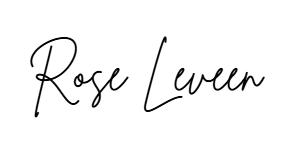































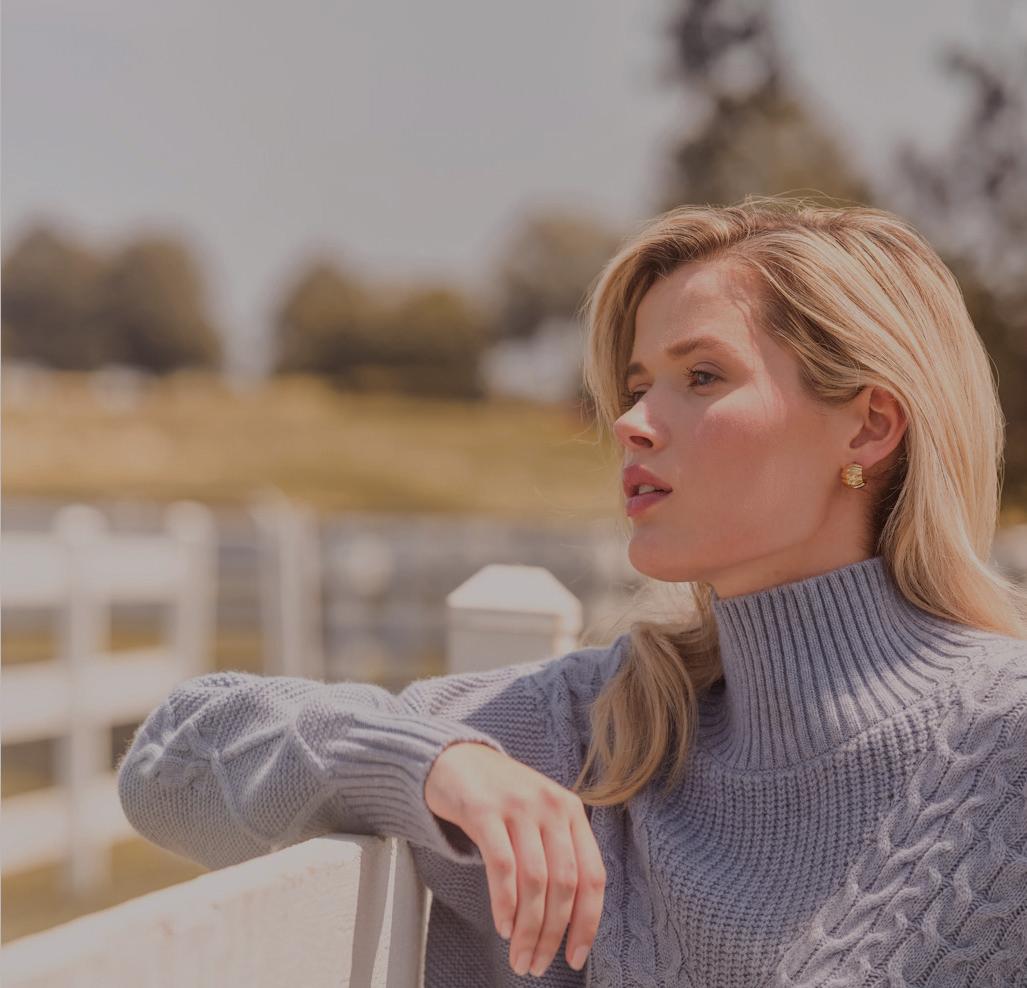


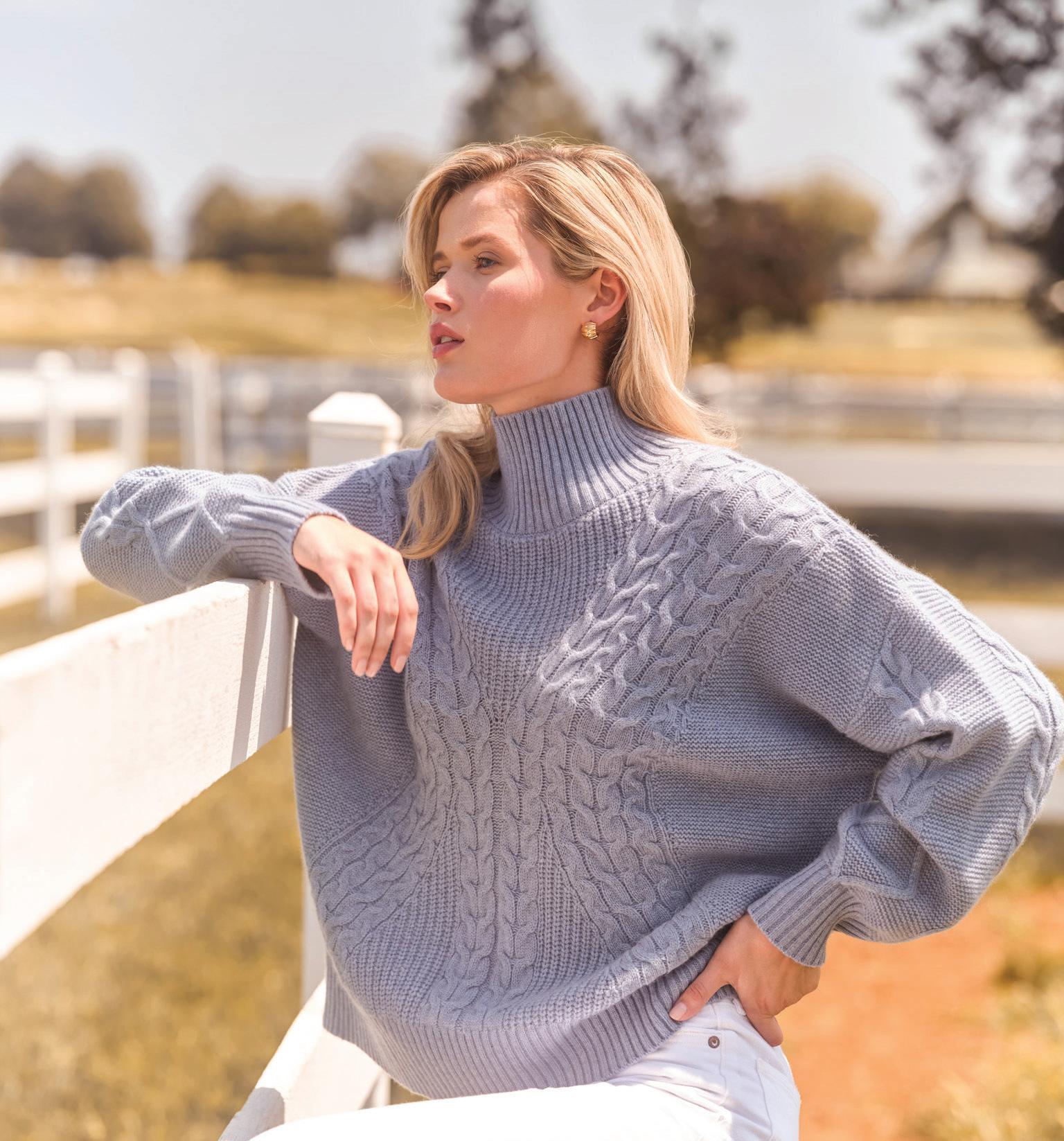
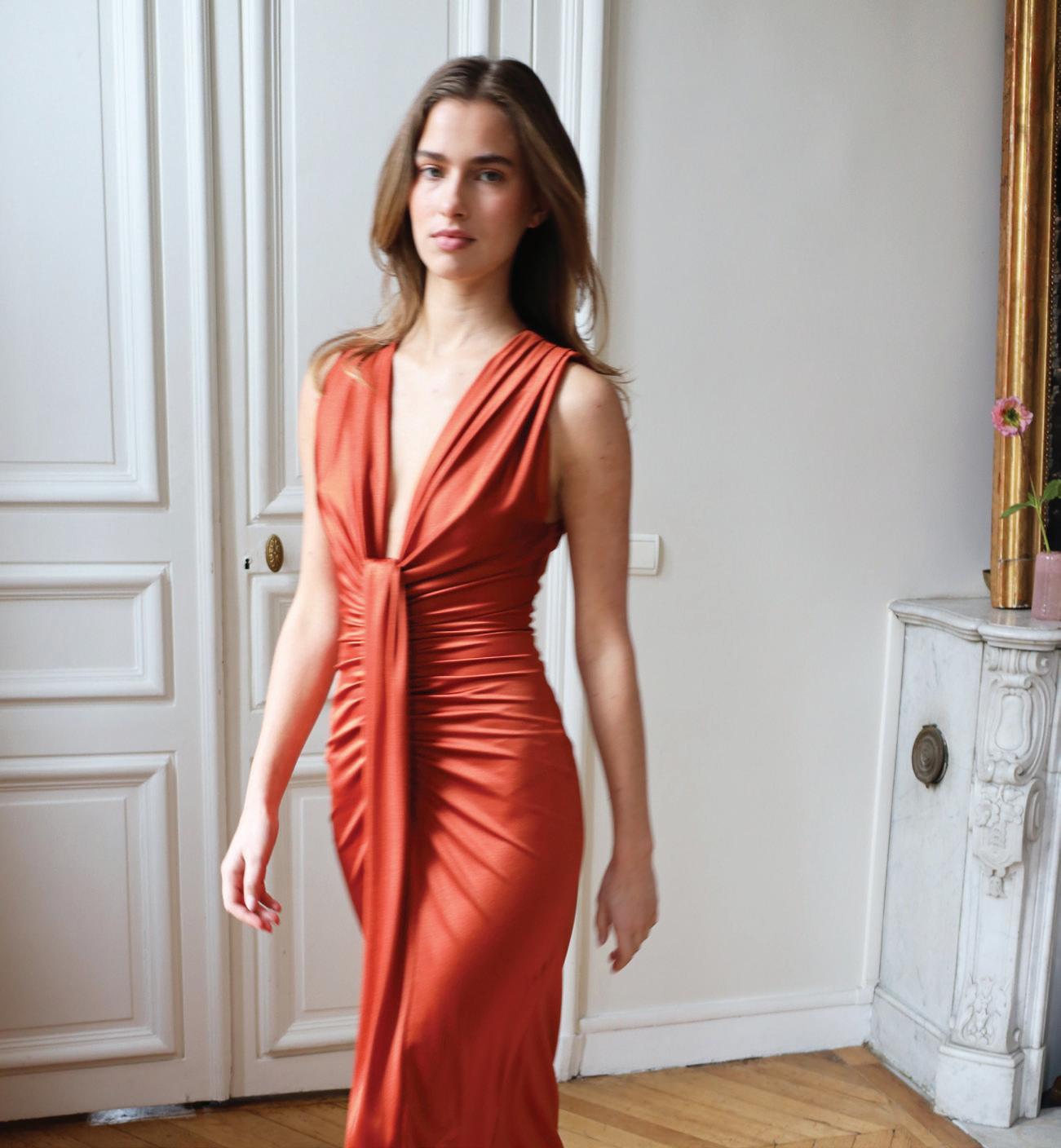
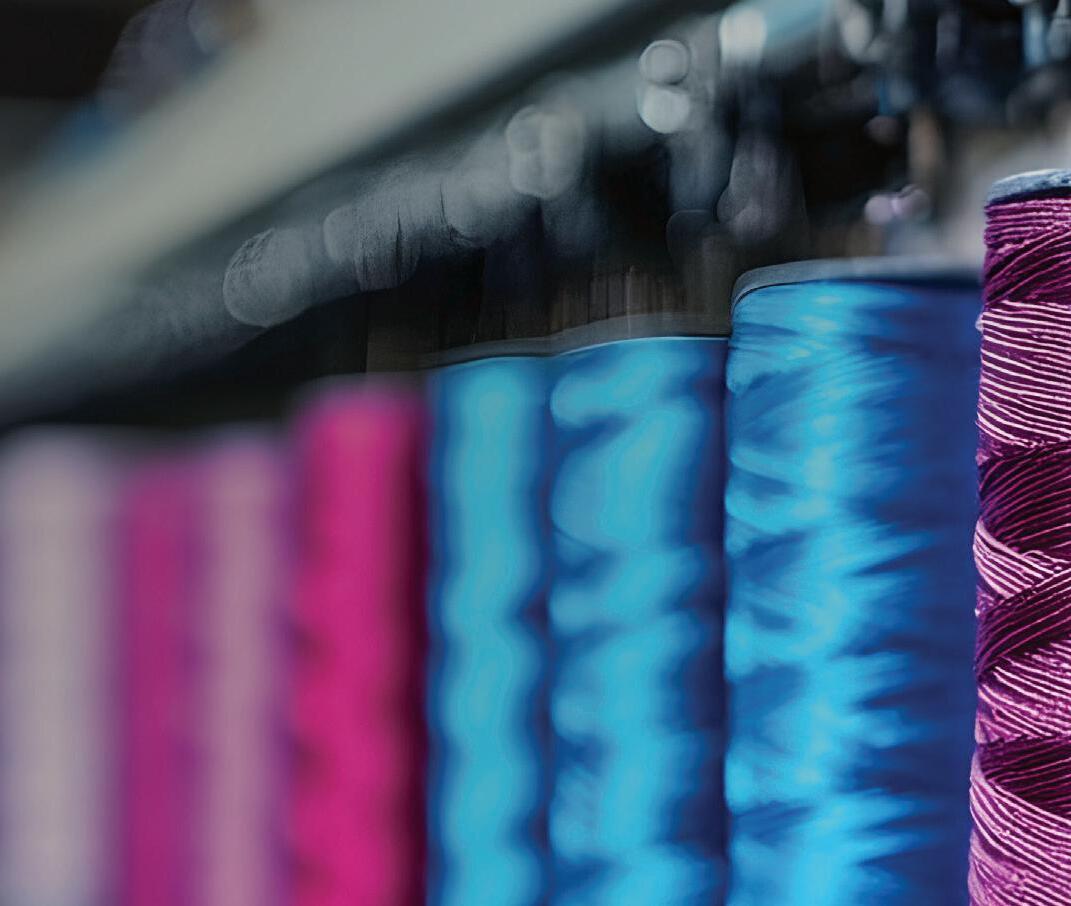
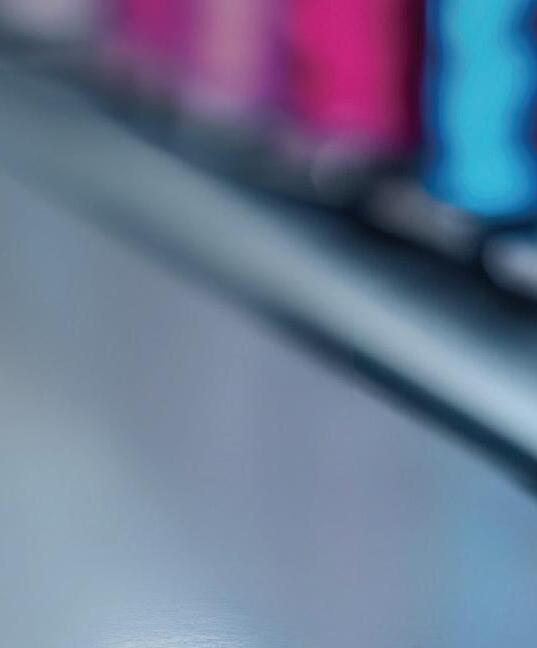
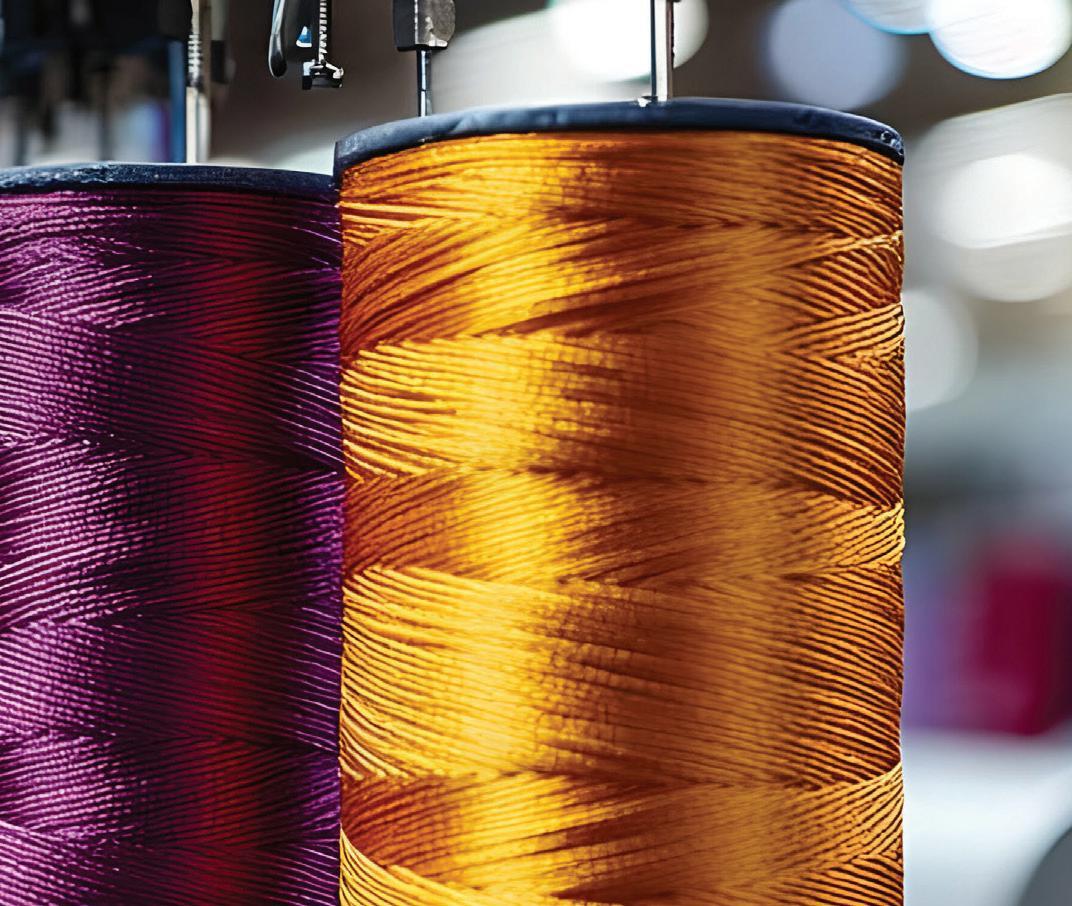
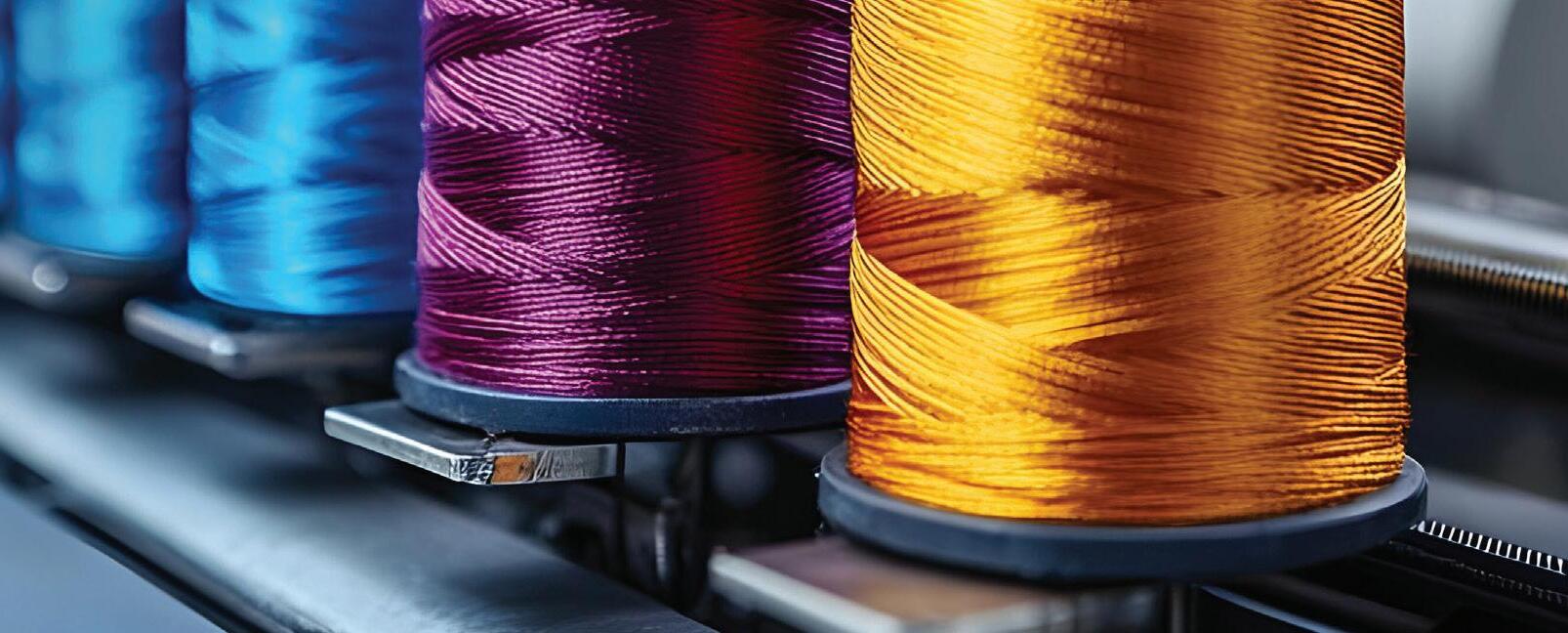
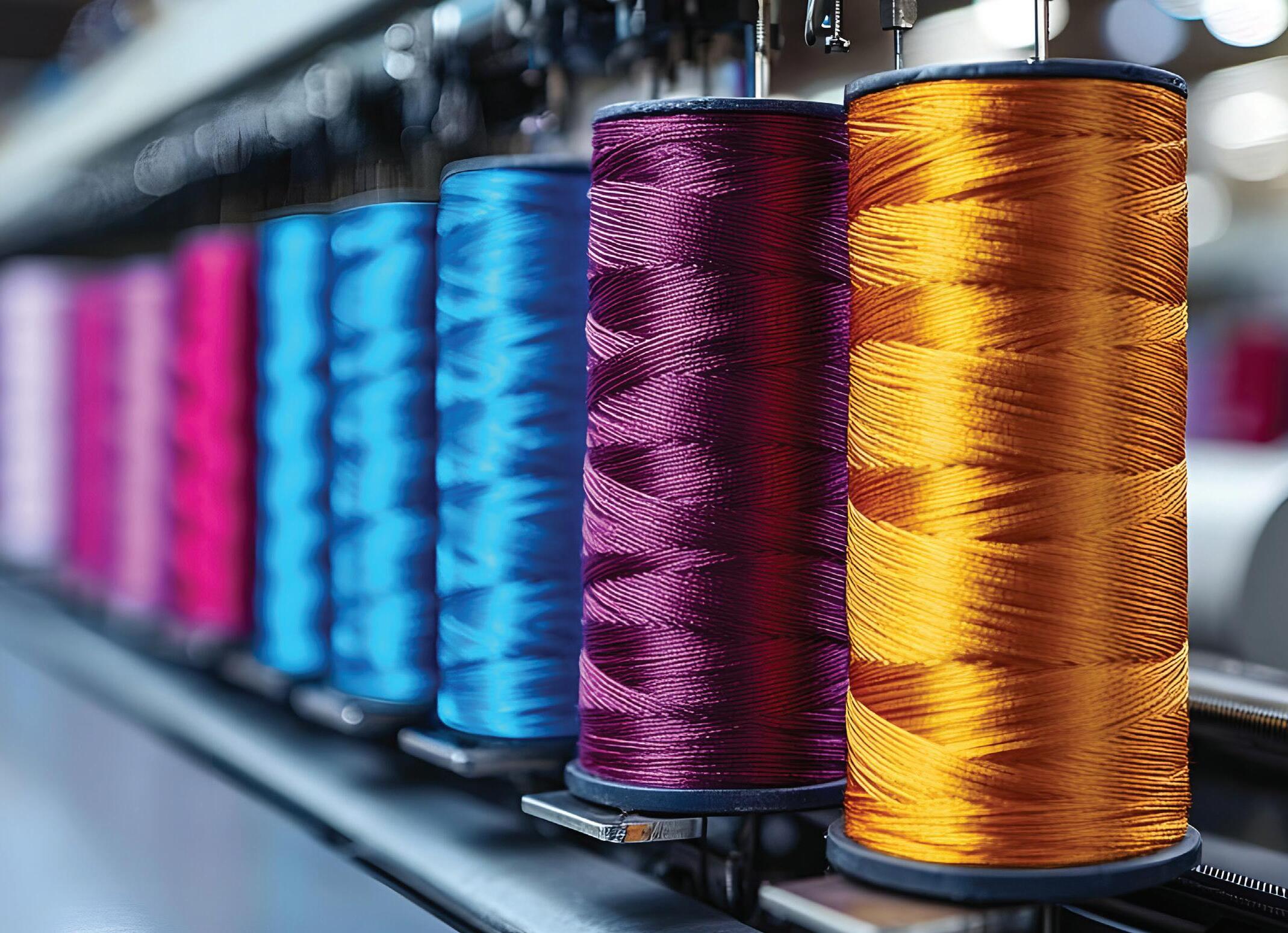
Whether you are an apparel manufacturer or a fashion owner, IDB understands the changing dynamics of the retail environment including the growth of e-commerce and stands ready to assist you with financial solutions tailored to your needs. Our dedicated bankers not only specialize in Apparel & Consumer Products, but also leverage their strong client relationships and extensive global connections to deliver new opportunities, as your preferences, supply channels and fashions evolve. To learn more about









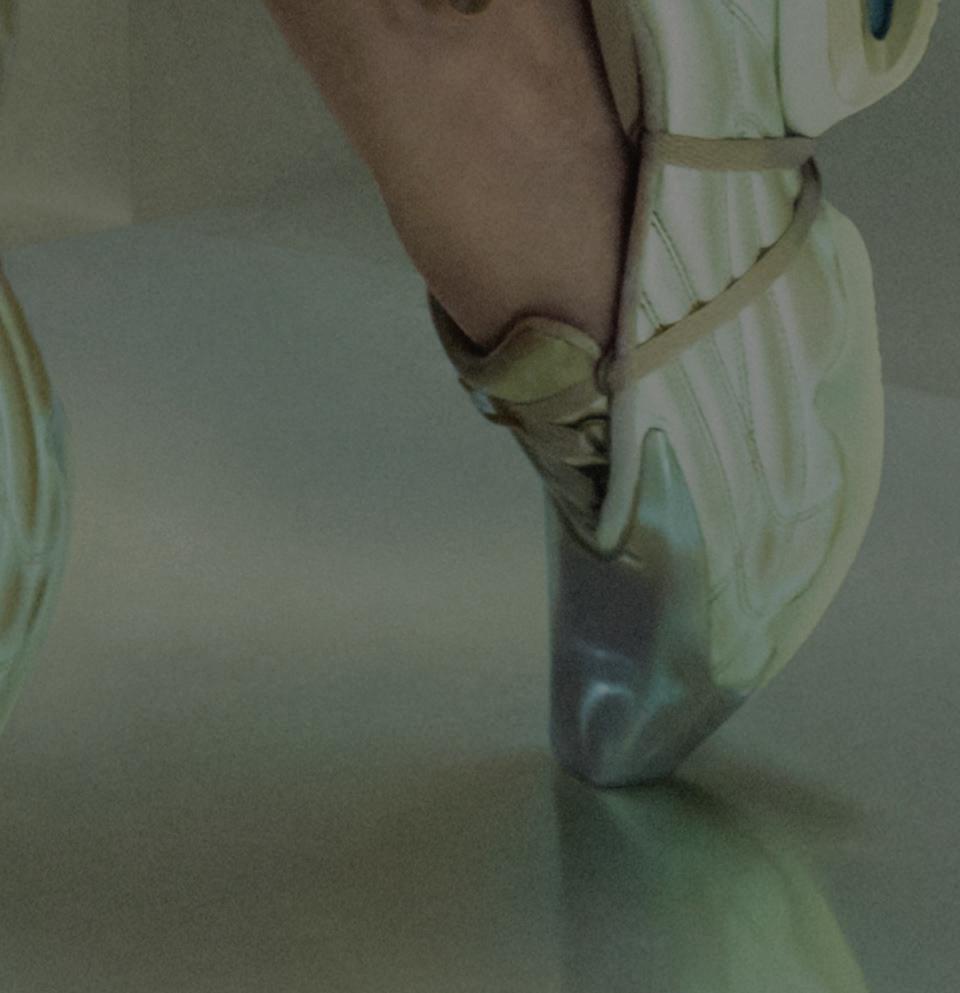


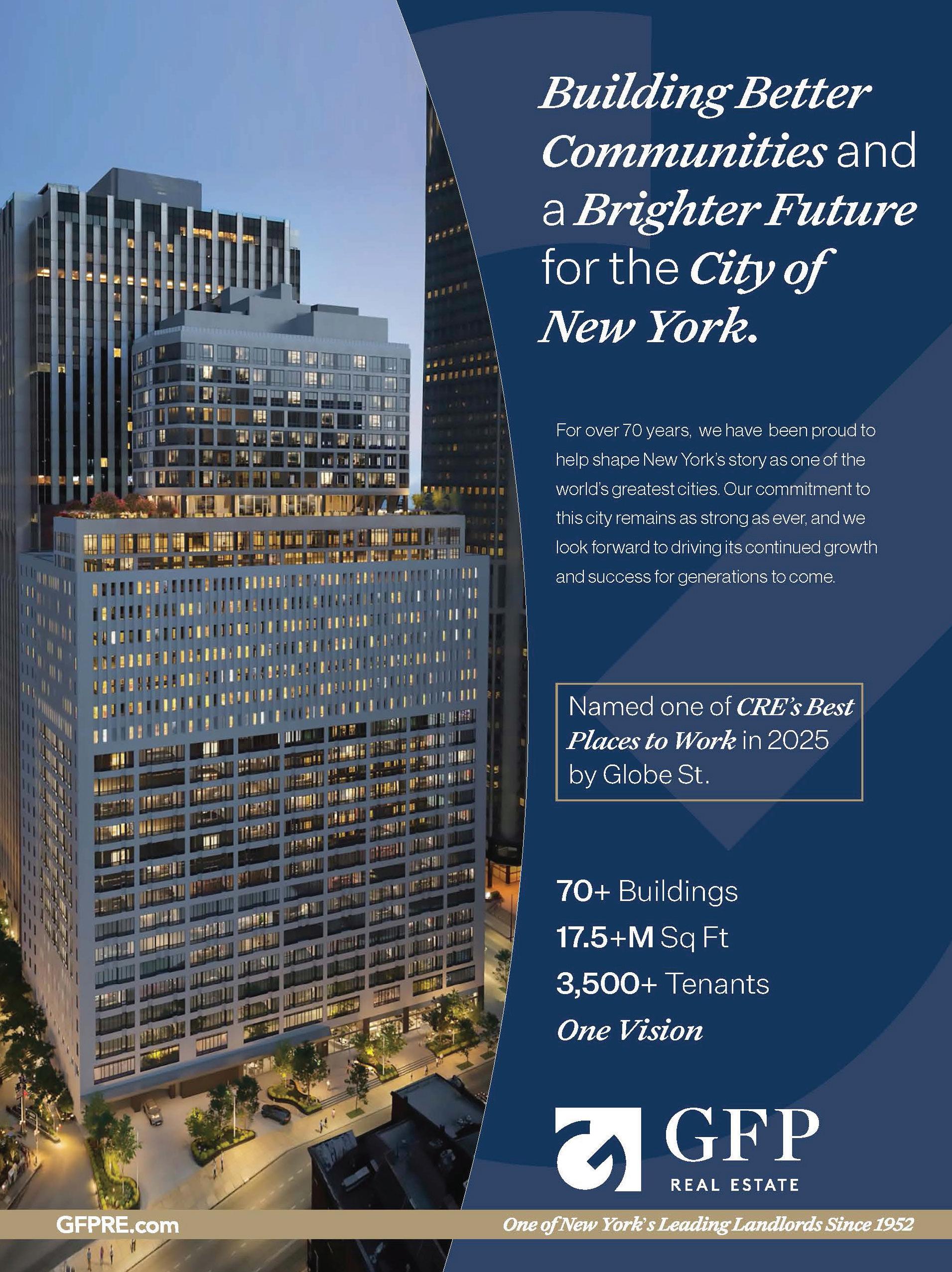
Hosted by Mann Publications, Sponsored by CBIZ
Join us for an insightful evening featuring expert discussions on the latest advancements in Artificial Intelligence! Enjoy cocktails and a buffet as you connect with industry leaders and learn about the future of AI and its impact on consumer goods and real estate. Don’t miss this opportunity to learn about the future of AI and its impact on these industries.

Date: December 1, 2025
Time: 6:00–9:00 p.m.
Location: Versa, 218 W 35th St, 7th Floor, New York, NY 10001
Registration Fee:
$250 (includes speakers, cocktails and buffet)
Keynote Speaker:

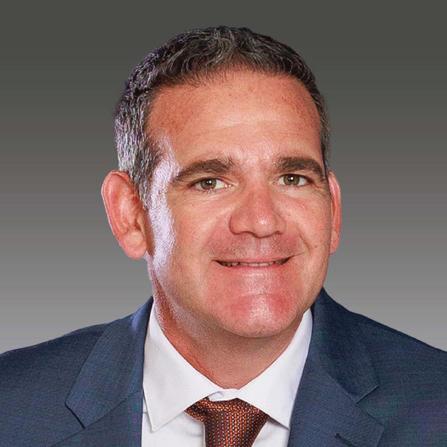
Agenda:
6:00p.m. – Cocktails and Networking
7:00p.m. – Keynote Presentation: Rob McGillen, “Transforming Consumer Goods and Real Estate with AI”
8:00p.m. – Buffet, Audience Q&A and gifts
Sponsorships available upon request

For more information and to RSVP, please contact: Penelope Herrera pherrera@mannpublications.com 212-840-6266 ext.313

Host:

Michael Sacco, CPA Managing Director National Consumer & Industrial Products Industry Leader, CBIZ
Abe Schlisselfeld, CPA, EA Senior Managing Director National Real Estate Industry Leader, CBIZ
Jeff Mann, CEO President/CEO of Mann Publications

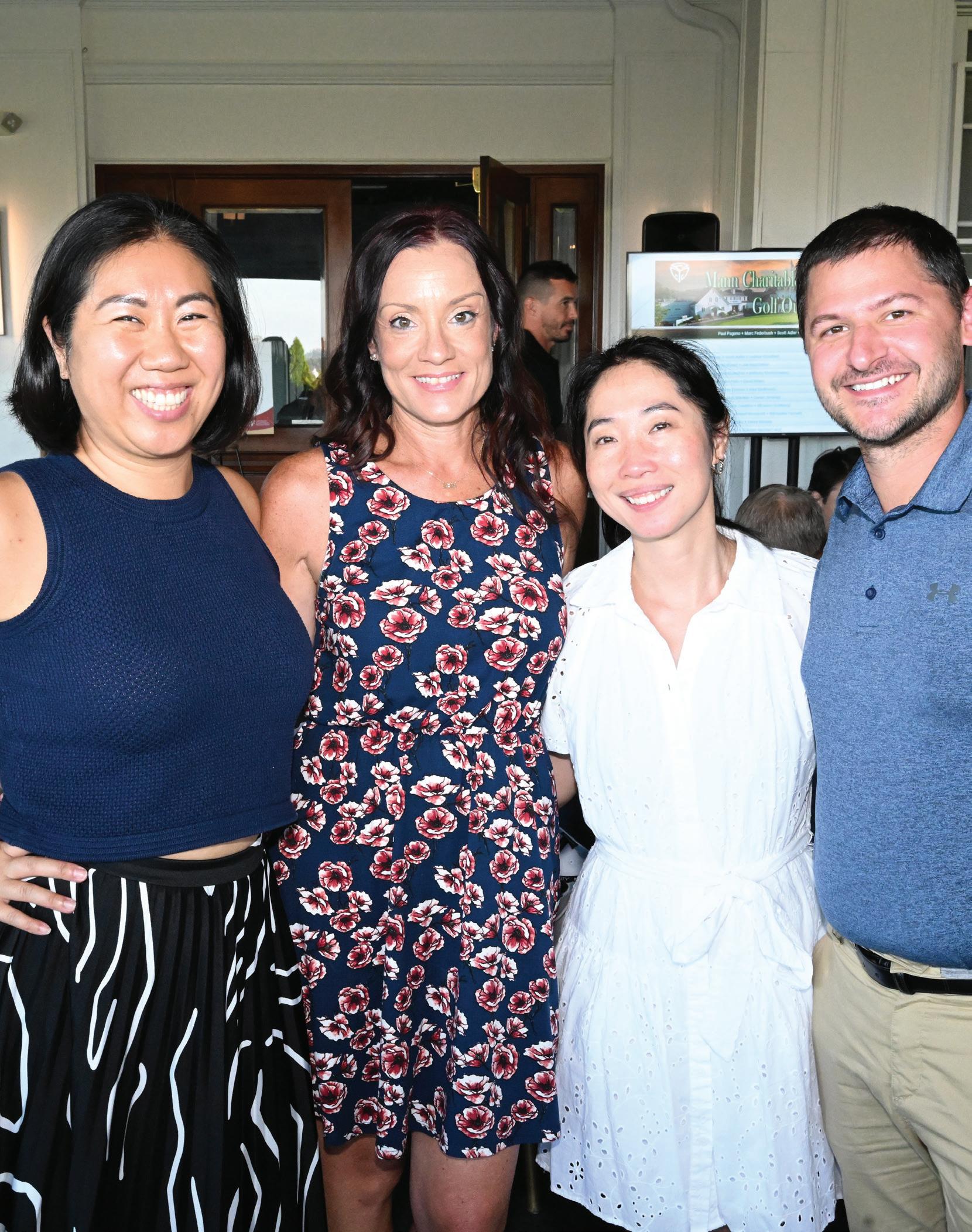



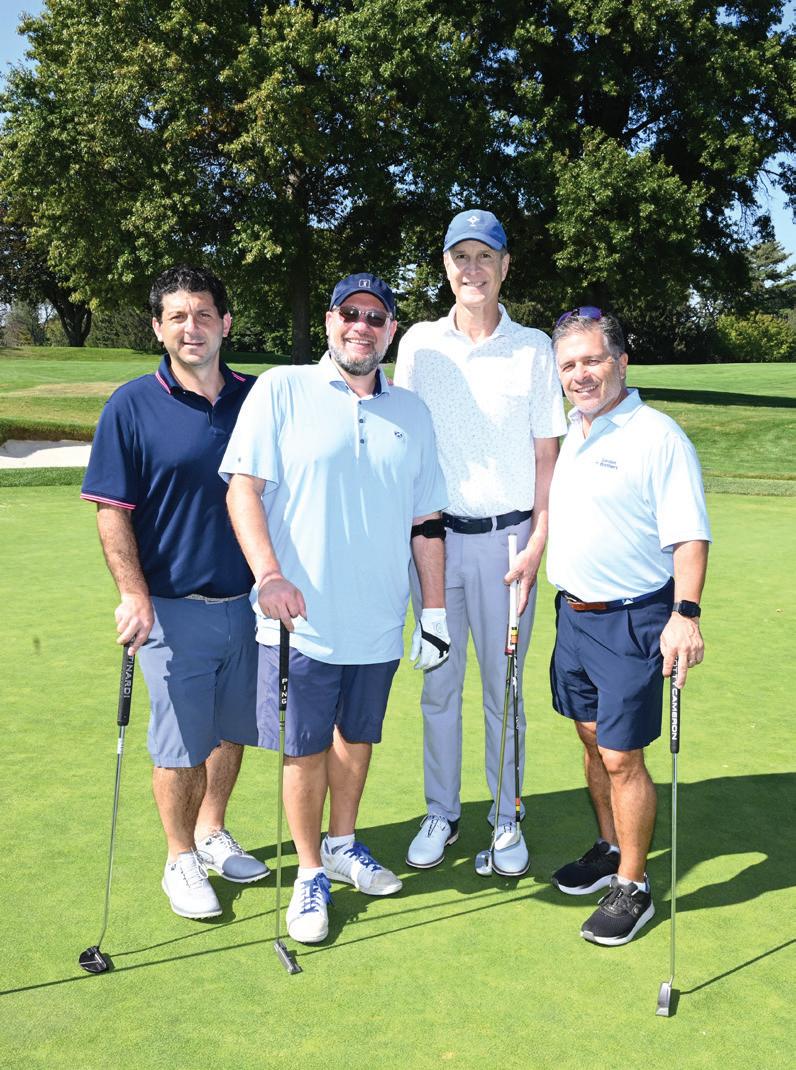

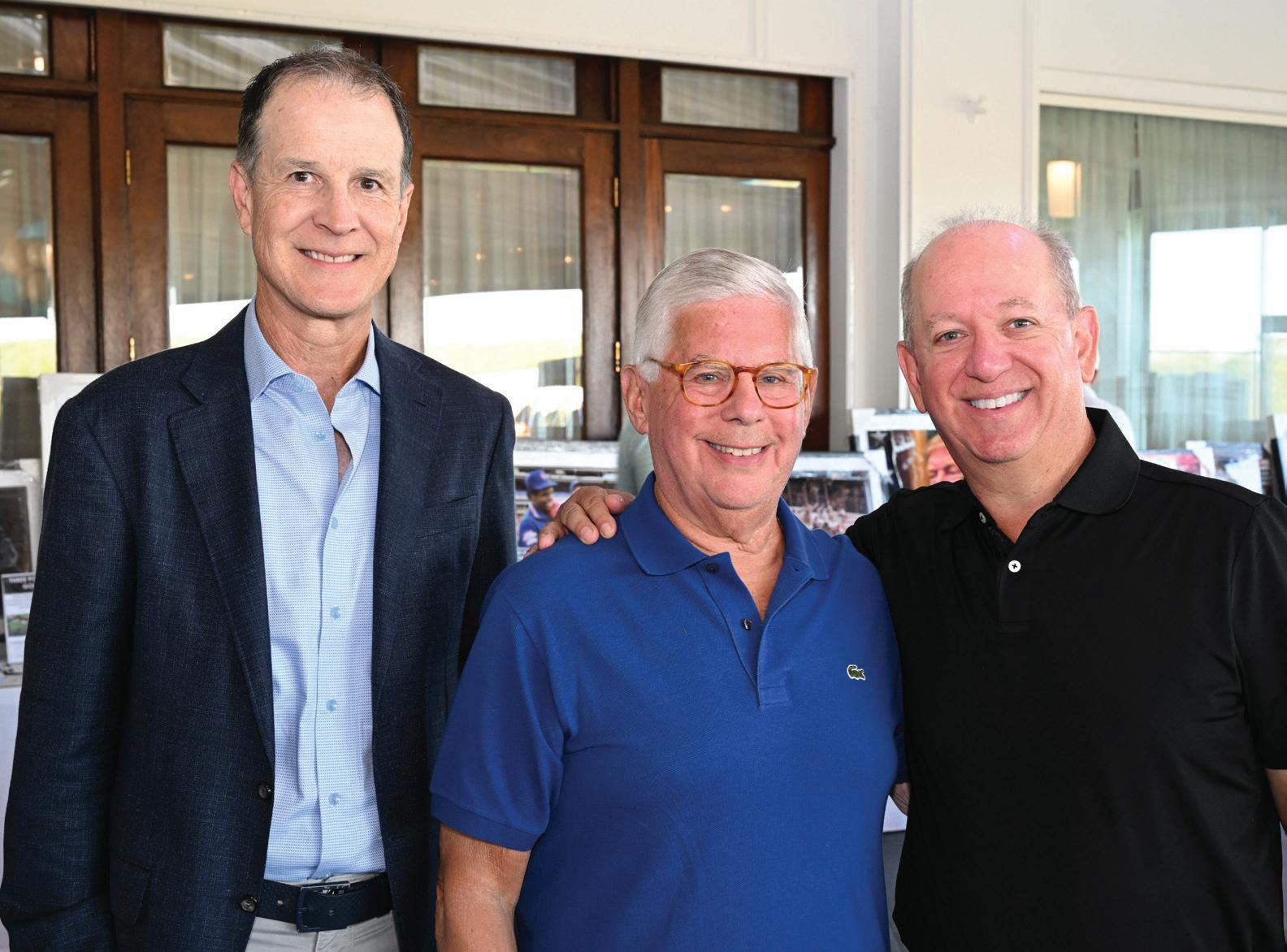

More than 100 golfers enjoyed a day of sport, dining and networking at the first-ever joint annual golf tournament hosted by the Mann Charitable Foundation and National Realty Club Foundation at the Fresh Meadow Country Club in Lake Success, New York.
The event was held in honor of the late Michael Kerr, president of M&R Management and a long-time supporter of both foundations. Also honored were Martin Efron, managing director at White Oak Commercial Finance, and Jaimee L. Nardiello, partner at Zetlin & De Chiara LLP.
“Michael was a dear friend from my childhood, and his loss is a terrible one for our family and our industry,” said Jeffrey Mann, CEO and president of Mann Publications, principal officer of the Mann Charitable Foundation and president of the National Realty Club.
The Mann Charitable Foundation, established in honor of Irving and Marion Mann, supports research to fight life-threatening diseases, including, but not limited to, Alzheimer’s disease, heart disease, Crohn’s disease, ulcerative colitis and breast cancer.
The National Realty Club Foundation, founded in 1947 by leading real estate owners, operators, builders and attorneys, facilitates industry education and networking and supports causes dedicated to improving the lives of all in New York City, including the Bronx Historical Society, Community Mainstreaming, National Jewish Museum and Jewish National Fund.
Fashion Group International (FGI) hosted its 41st annual FGI Night of Stars gala at the legendary Rainbow Room in Manhattan, drawing a dazzling crowd of designers, celebrities, industry executives and cultural tastemakers for an evening celebrating innovation, artistry and leadership across fashion, beauty, society and the arts.
This year’s gala paid tribute to a remarkable roster of honorees whose visionary contributions continue to shape global culture and creativity. The glamorous redcarpet affair featured an elegant cocktail reception, followed by a red-carpet dinner and awards ceremony, convening luminaries to honor the creative forces defining the modern era.
The evening was co-chaired by Alyce Panico and Claudia Poccia, with a host committee featuring Joseph Altuzarra, Linda Fargo,
Nina Garcia, Dee and Tommy Hilfiger, Donna Karan, Nolan Meader and Jason Wu.
As guests dined under the glittering chandeliers of the Rainbow Room, honorees and presenters shared powerful moments of gratitude and inspiration. The event reaffirmed FGI’s legacy of recognizing creativity and fostering community within the global fashion and beauty industries.
Maryanne Grisz, FGI president and CEO, shared, “Each year, FGI Night of Stars celebrates the individuals whose artistry and leadership elevate our industries and inspire future generations. This year’s honorees truly embody the spirit of art and innovation. We are deeply grateful to our honorees, presenters and supporters for helping advance FGI’s mission of mentorship, education and empowerment.”
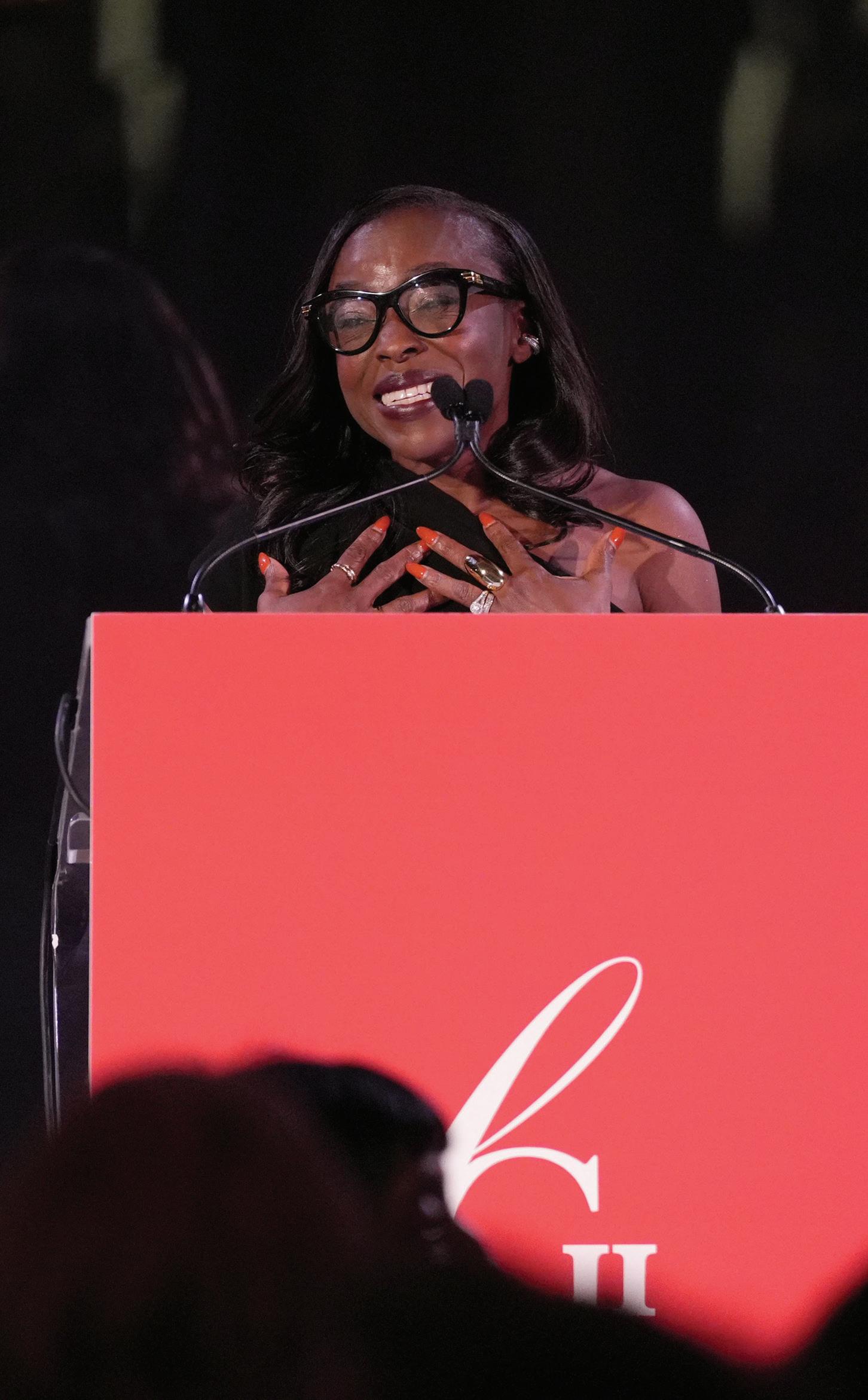
Fashion Visionary Award
Iris Van Herpen, presented by Lauren Amos and Law Roach
Fashion x Art Award
Jordan Roth, presented by Alina Cho
Fashion Visionary Award
Sarah Wetenhall, presented by Martha Stewart
Retail Trailblazer
Jen Rubio, presented by Wes Gordon
FGI Founders’ Award
Kerry O’Brien, presented by Sarah Slutsky
Changemaker Award
Aïda Moudachirou-Rébois, presented by Nicola Formichetti

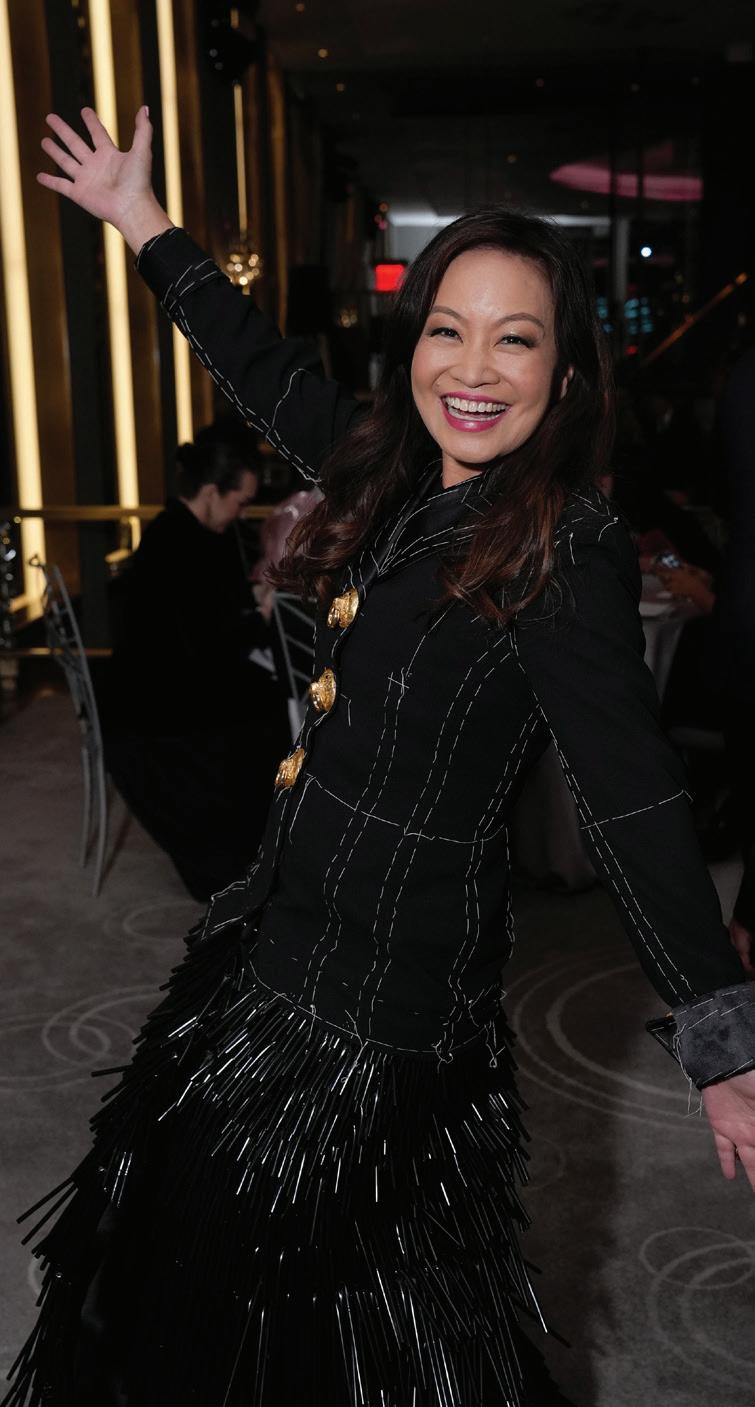
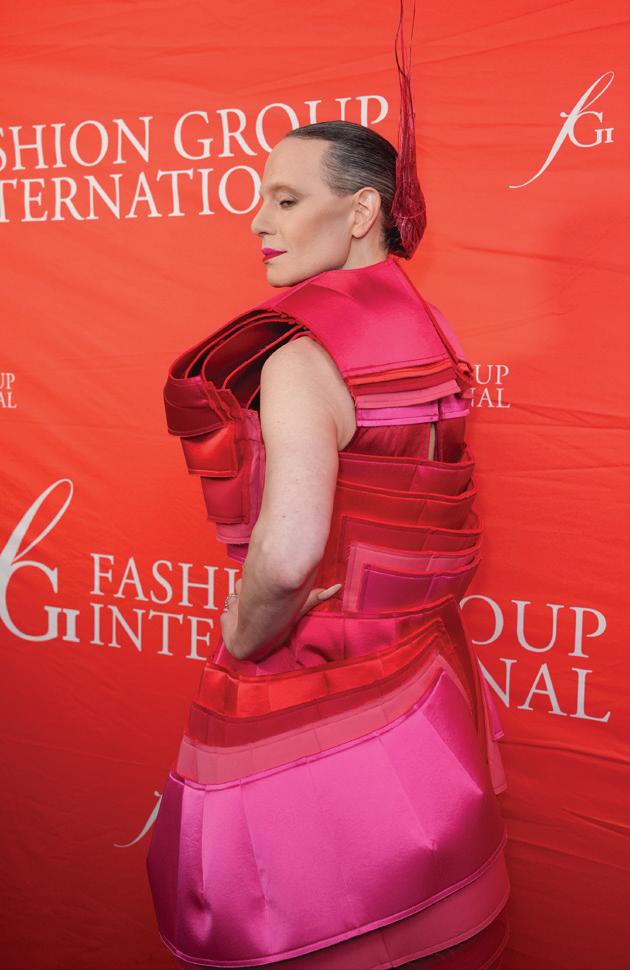


































































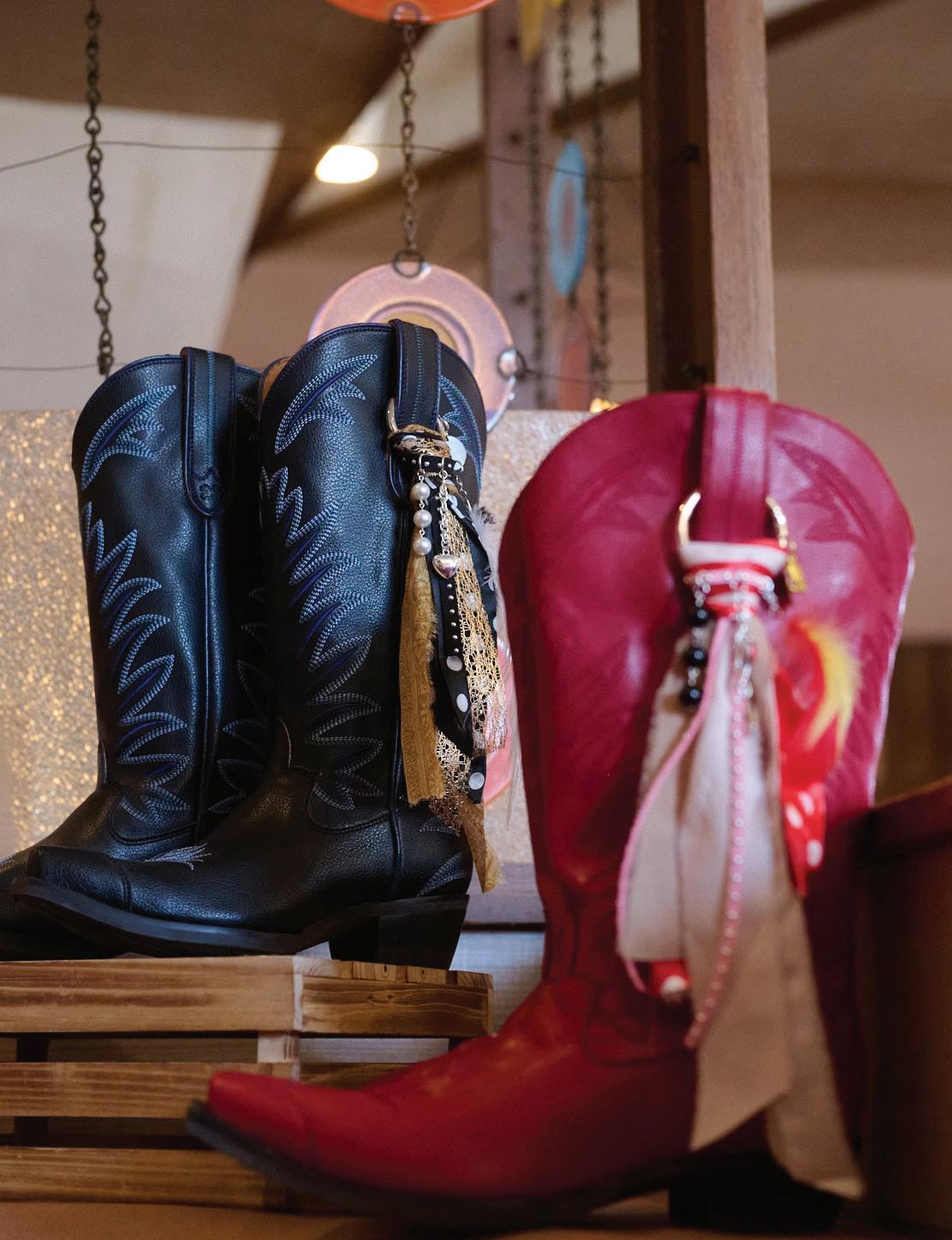

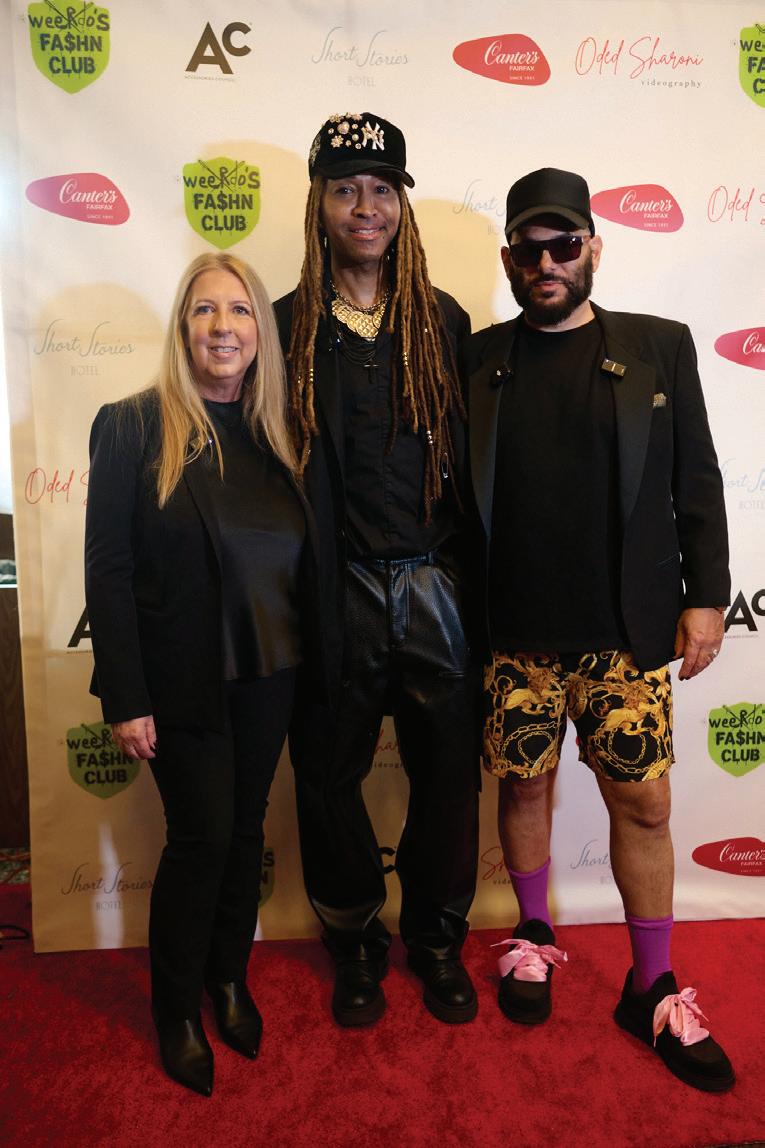


Celebrity stylist Ty Hunter hosted “ Bagels and Looks” at Canter’s Deli, an event presented by Weerdo’s Fa$hn Club in collaboration with the Accessories Council and Ac Magazine. Guests, including students, fans and fashion tastemakers, had the opportunity to engage with the fashion icon during an interactive Q&A session moderated by Irene FitzGerald, EVP of client relations for the Accessories Council. Following the Q&A, Hunter signed autographs,

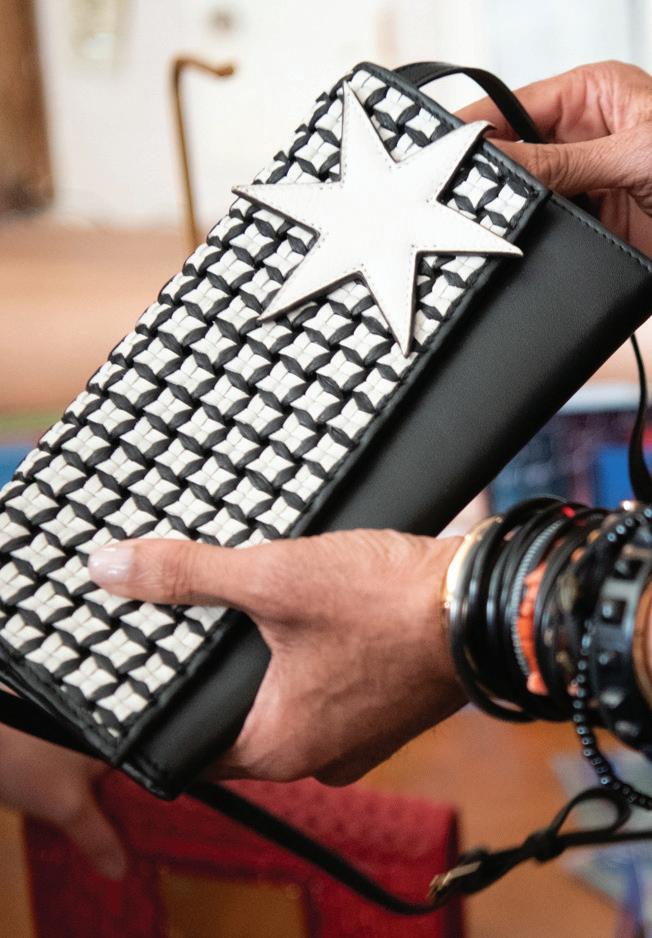

posed for selfies and explored the onsite pop-up boutique featuring several Accessories Council members, including Able, Chalonne, Christopher Belt, Desert Bloom and Vivienne’s Closet.
Other notables in attendance included fashion designer Kevan Hall, Tony Drockton, Connie Shoquist, Deborah Carrington and Danielle Richardson, among others.

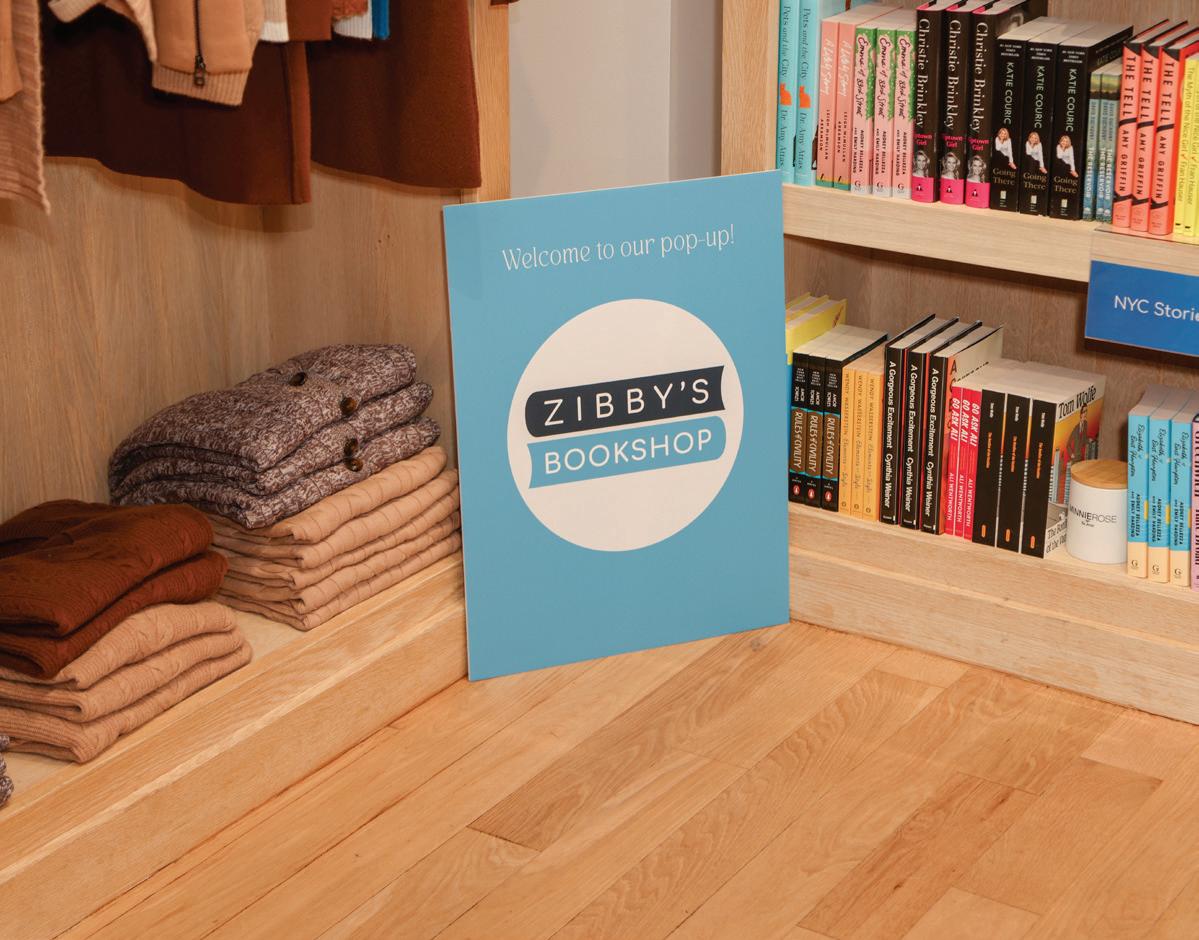


“At a time when loneliness feels like an epidemic, I want this pop-up to be a place where women can shop, sip wine, relax and kibitz—a space of style, stories and belonging.”
—Lisa Shaller-Goldberg


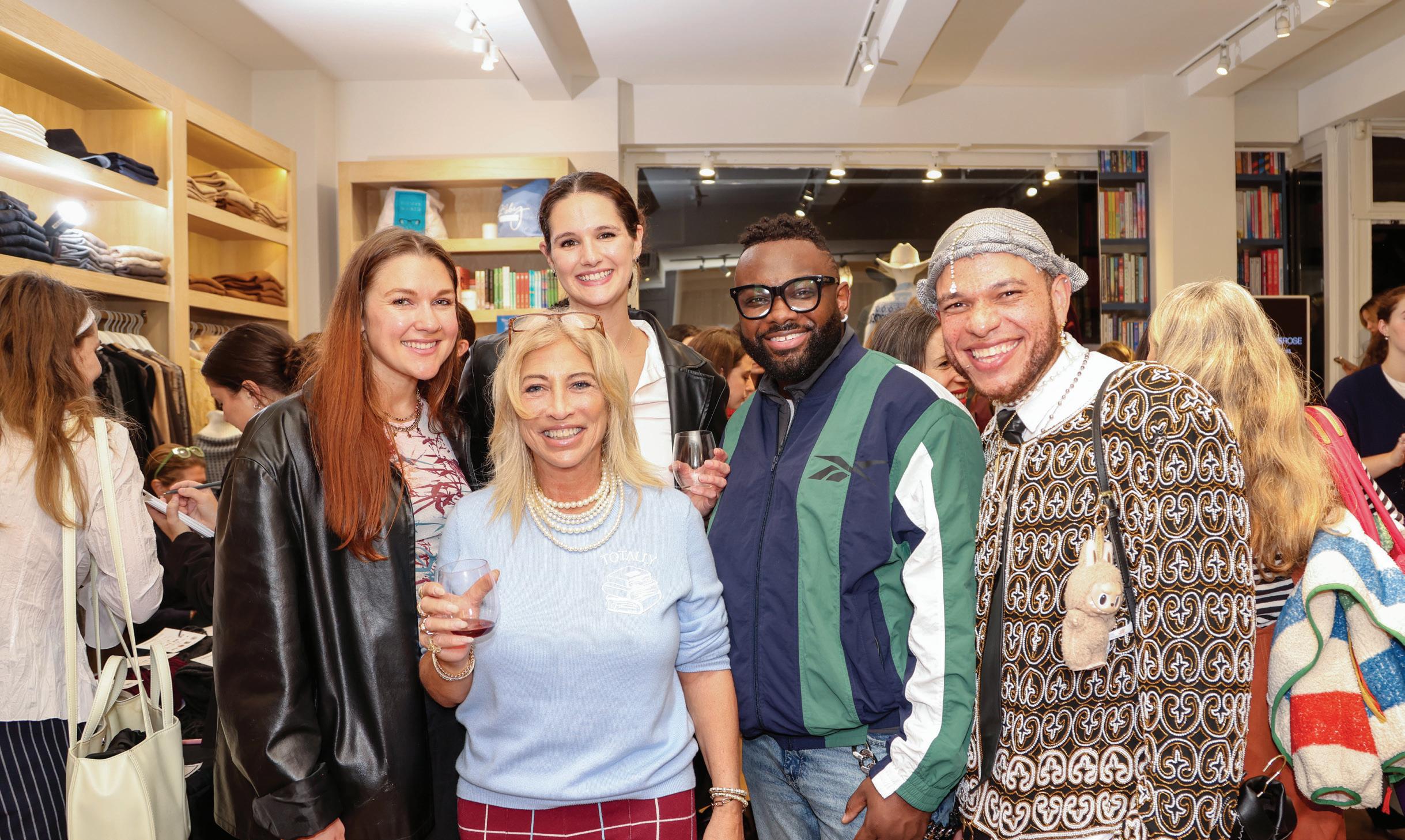





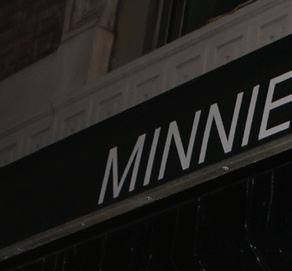
Luxury cashmere brand Minnie Rose launched a holiday collaboration with Zibby Media, opening a pop-up bookstore inside the Minnie Rose flagship store in Manhattan from Oct. 14, 2025, through Jan. 15, 2026.


The boutique was transformed into a festive hub where style meets storytelling, featuring Minnie Rose’s newest collections alongside books curated by Zibby Owens, founder of Zibby Media.



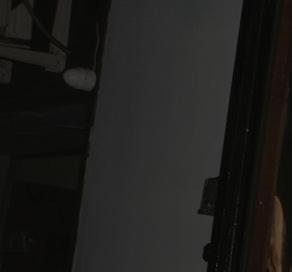
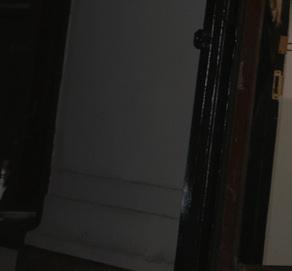



The pop-up kicked off with a lunchtime event on Oct. 14 with New York Times bestselling author duo Penn and Kim Holderness, followed by a celebratory launch party that brought together authors, tastemakers and media for an exclusive evening of books, fashion and conversation. During the event, Minnie Rose debuted its limited-edition Zibby x Minnie Rose sweater—a hand-stitched cotton-cashmere blend featuring “Totally Booked” on the front and a rose motif on the back, as well as Owens’ favorite crew neck in her signature blue. Guests enjoyed on-site, personalized embroidery on select Minnie Rose pieces during the event.

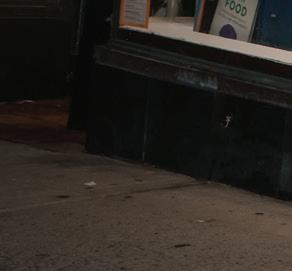
“Fashion and books both tell stories,” said Lisa Shaller-Goldberg, founder of Minnie Rose. “At a time when loneliness feels like an epidemic, I want this pop-up to be a place where women can shop, sip wine, relax and kibitz—a space of style, stories and belonging.”
Throughout the three-month collaboration, Minnie Rose will host book club gatherings, podcast recordings, author signings, literary salons and other events, offering guests a unique cultural experience during the holiday season.
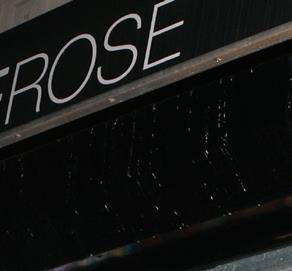





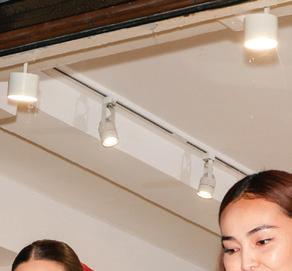



Authors participating in events at the pop-up include Lihi Lapid (Nov. 12), Alyssa Sheinmel (Nov. 19), Jennifer Breheny Wallace (Dec. 4), Tracy Dobmeier and Wendy Katzman (Dec. 9), Marisa Kashino and many more.
“Books create community in the same way fashion does—by sparking joy, conversation and connection,” said Owens. “I’m thrilled to bring our community, including many authors, into Minnie Rose, where people can peruse our creatively curated titles, discover new titles and delight in delicious fabrics and finely made, fashionable items. Our collaboration celebrates our professional and personal commitment to improving people’s lives in ways big and small.”


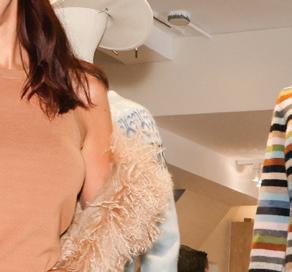

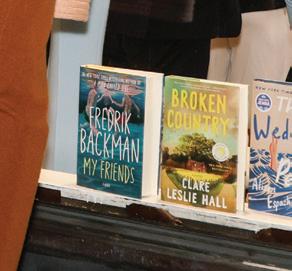

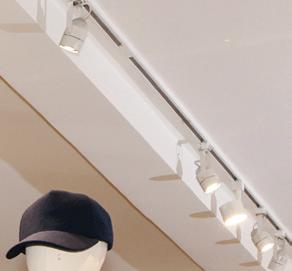
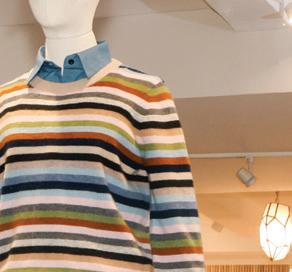
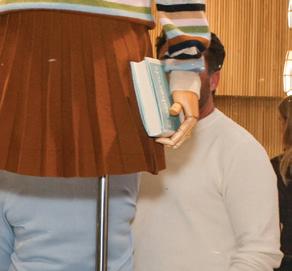



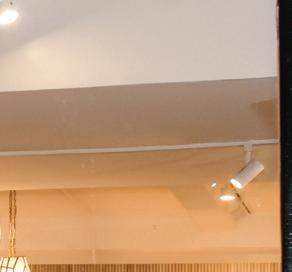


Minnie Rose and Zibby Media’s partnership is rooted in friendship and shared values. When devastating fires struck the Palisades community where Owens owns a bookstore, ShallerGoldberg and the Minnie Rose team stepped in to provide comfort, donating sweaters to families in need. This spirit of generosity and connection continues to guide their collaboration, now expressed through a season of style, stories and shared experiences at the holiday pop-up.
In addition to debuting new holiday knitwear styles, Minnie Rose will spotlight its Shalom Sweater Project. This initiative spreads a message of peace and unity through fashion, with proceeds supporting organizations aligned with Minnie Rose’s philanthropic mission.



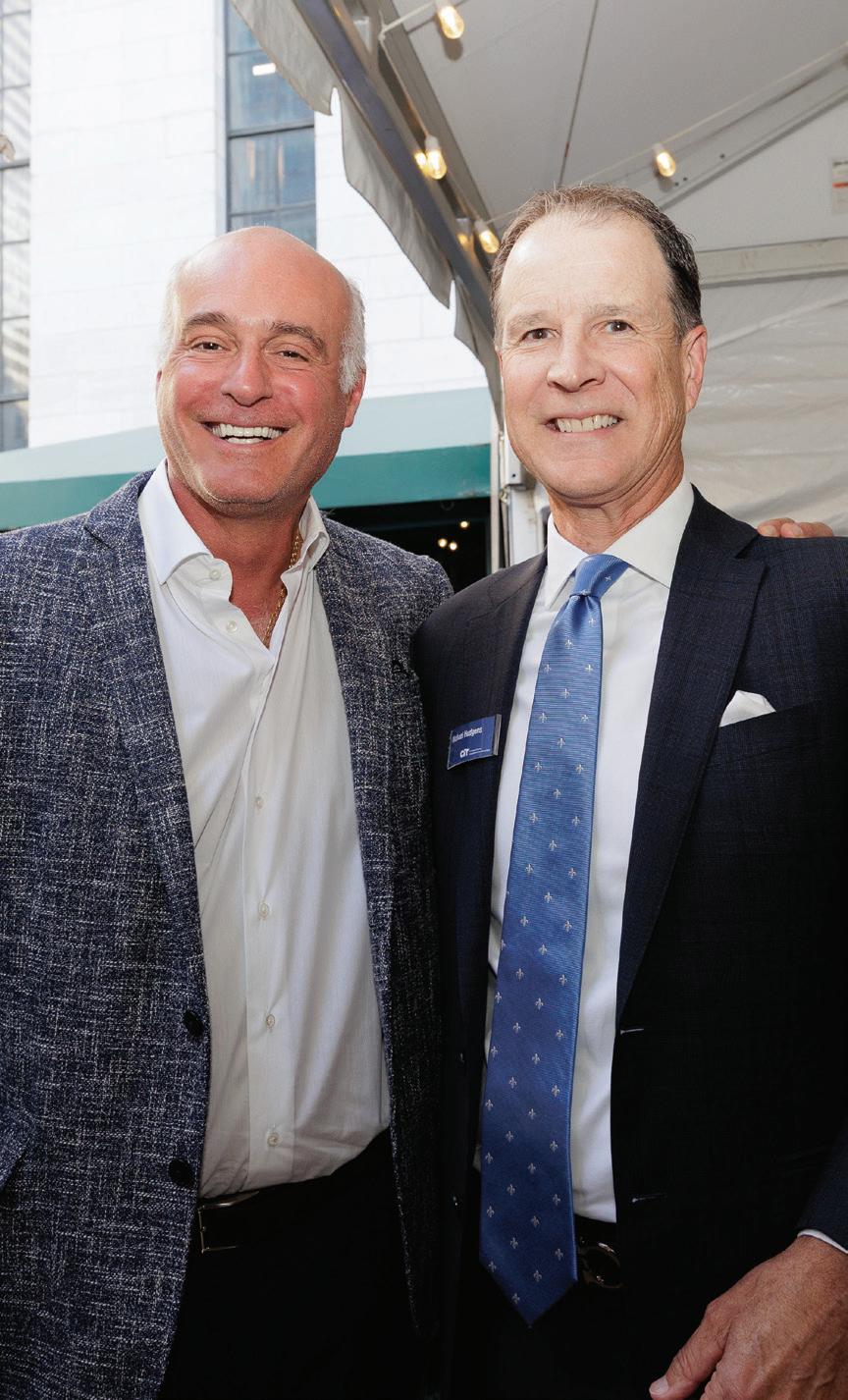

Industry leaders recently attended the annual CIT Commercial Services (CMS) East Reception at Bryant Park Grill. Attendees heard from CMS president, Michael Hudgens, and general regional manager, Amna Mahmood, and joined in engaging conversations while sampling stellar sips and light bites. The CMS team was grateful for the opportunity to celebrate its clients and their successes.









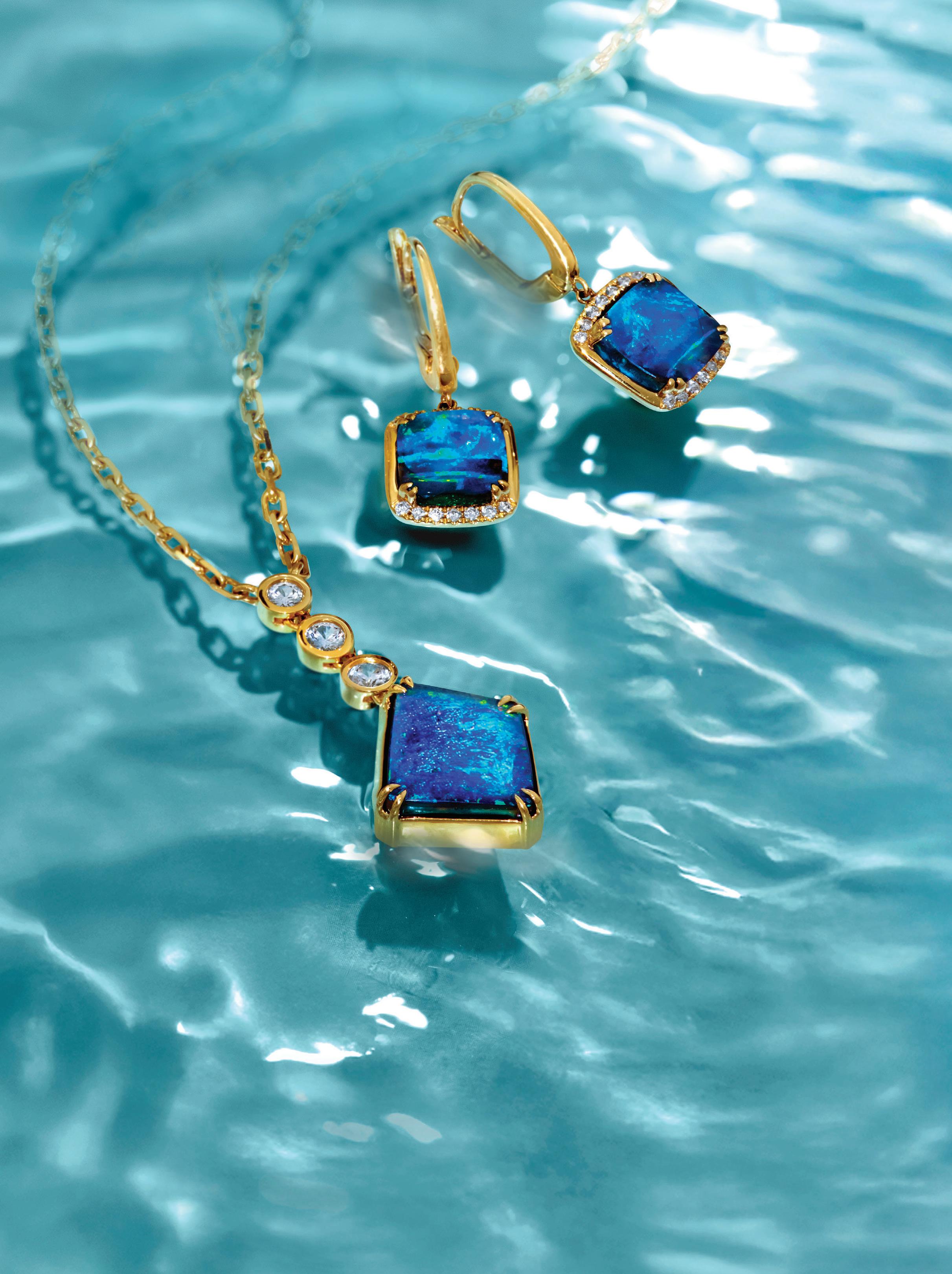




J.Crew Group announced that Gena Smith is joining the company as chief human resources officer. Smith will oversee all aspects of J.Crew Group’s human resources function, including talent acquisition, employee engagement, inclusion and belonging, leadership development and organizational effectiveness.
Smith brings more than two decades of experience in human capital strategy, executive recruitment and organizational development across the fashion and retail industries. She joins J.Crew from LVMH North America, where she served as chief human resources officer and previously held several senior leadership roles, including senior vice president of human resources and head of global executive and creative recruitment.
“The strength of our people and the value they bring to our customers and stakeholders are fundamental to our success,” said Libby Wadle, CEO of J.Crew Group. “I am delighted to welcome Gena to our team. She is a dynamic leader with deep expertise in aligning people strategies with business goals in creative-led organizations. Her proven ability to build high-performing teams and foster inclusive, creative cultures will be a powerful asset as we continue to grow J.Crew Group.”
In addition to her executive leadership experience, Smith is an active contributor to the broader fashion and design community. She currently serves on the board of governors at the Fashion Scholarship Fund and Parsons School of Design and is a member of the board of directors at Gabriela Hearst.
“I’ve long admired J.Crew Group’s distinct voice and enduring influence in American style,” said Smith. “I’m excited to join at such a pivotal time for the company and to partner with the leadership team to continue building a purpose-driven culture that attracts, empowers and retains top talent.”
Prior to her time at LVMH, Smith served as global managing director at Karen Harvey Consulting Group, where she advised global fashion and luxury brands on executive placement and organizational design. She also held leadership roles at Russell Reynolds Associates and Ray Berndtson, where she focused on talent strategy for clients across the consumer and retail sectors.
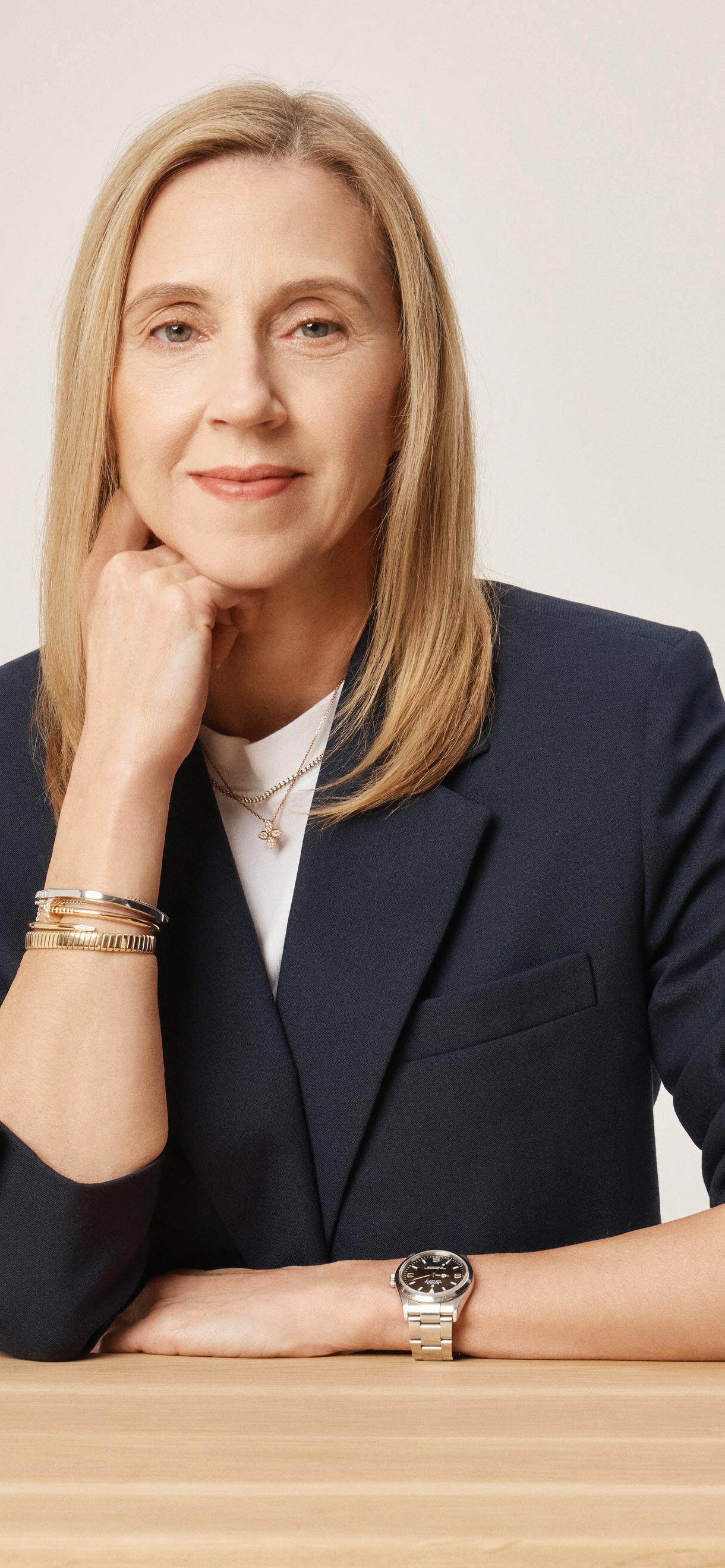
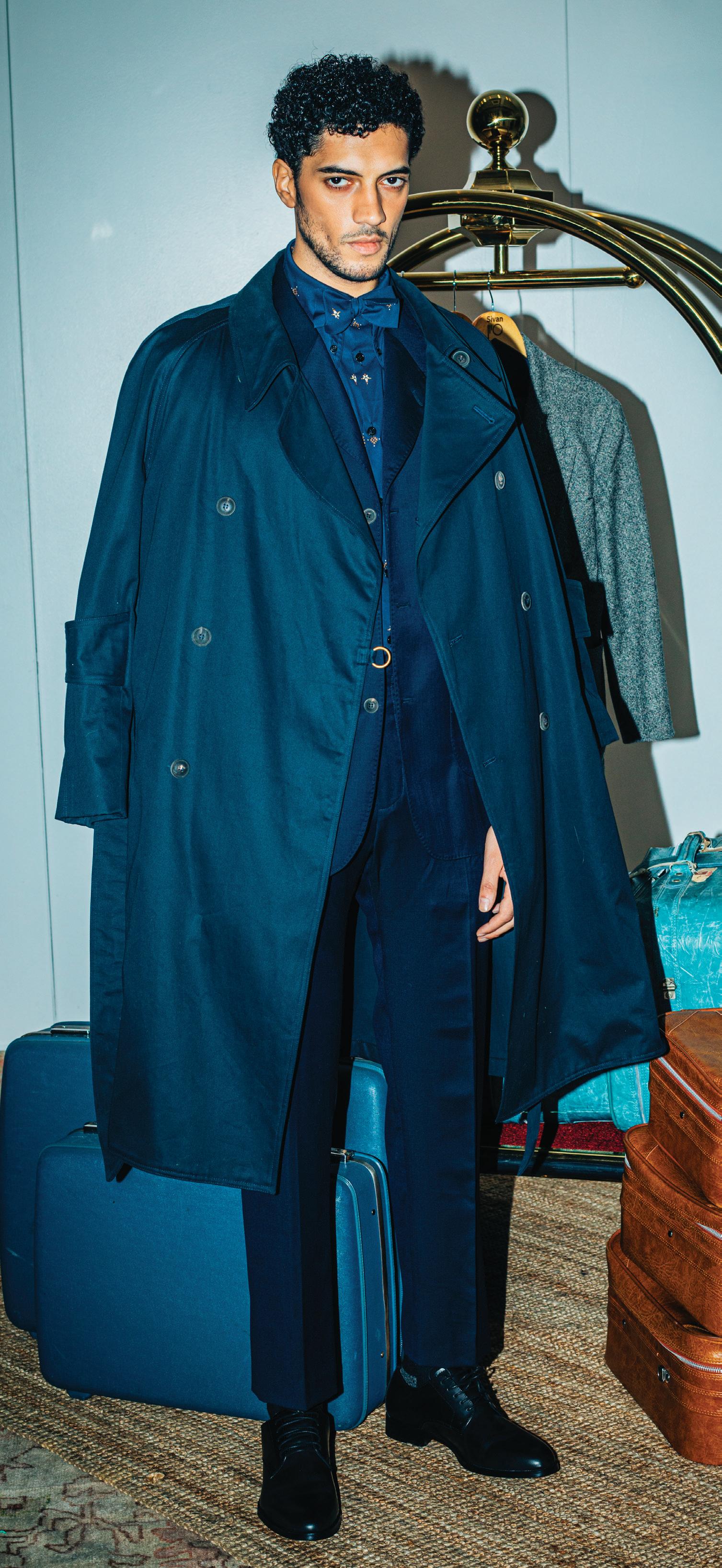
Brooklyn-based fashion label Sivan announced the opening of a limited-time pop-up boutique in the East Village, showcasing the brand’s Fall/ Winter 2025 collection and select one-of-a-kind items from the Sivan archive.
Shoppers will have the opportunity to shop the brand’s latest designs, discover the brand’s signature materials and craftsmanship, and schedule personal consultations for made-tomeasure orders with brand founder and creative director Jack Sivan.
While Sivan’s bespoke business typically operates by private appointment, this pop-up offers a rare opportunity for both returning and new clients alike to experience the collection firsthand and create select styles with Sivan himself, perfectly tailored to their size.
“We have been working to expand our line into ready-to-wear for the past few years,” said Sivan. “We have some great stockists around the country, but as a New York label with a growing audience, it’s important for us to make our collections readily available locally as well. This pop-up is an ideal way for our clients to experience our material quality and design details in person as we continue building toward a permanent space of our own.”
This pop-up underscores Sivan’s commitment to bridging high-end craftsmanship with inclusivity, while deepening the brand’s connection to its local New York community.
In recognition of Election Day on Nov. 4, Sivan will celebrate voter participation by offering a limited-edition neckerchief—made using fabric from the Spring/Summer 2026 collection—to any guest who visits the pop-up wearing an “I Voted” sticker.
The pop-up will be open Nov. 2-9 from 11 a.m. to 8 p.m. at 616 E. Ninth St.
The Fashion Institute of Technology (FIT) announced the opening of the Joyce F. Brown Academic Building, named in honor of the president’s 27 years of service and transformative leadership. Located on W. 28th St. between Seventh and Eighth avenues, the new building will be a destination for advancing creativity, innovation and opportunity while also providing students with the resources to excel in art and design, fashion, business and technology.
“This building was designed to bring students, faculty and the industry together,” said President Joyce F. Brown. “My hope is that future generations of leaders will use this space to foster a creative community and to explore, innovate and make a lasting impact on the global economy and the world.”
Designed by SHoP Architects, the 10-story, 100,000-plus-square-foot building brings Brown’s vision to life. A striking glass façade creates a new kind of campus destination—one where the energy of FIT is visible to the outside, reflecting the college’s vital role at the heart of the city’s creative community.
The building’s features include 26 energy-efficient classrooms and studios, administrative offices and the largest campus knitting lab in the U.S. The space also houses FIT’s first interior space designed specifically for interpersonal connection outside the classroom—a full-floor student commons under a 20-foot-high ceiling, accessible via an express escalator.
“Dr. Brown truly transformed FIT,” said Robin Burns-McNeill, FIT board of trustees’ chair. “This new building will be a lasting tribute to her vision, dedication and decades of leadership that have established FIT as a global leader in creative education.”
The opening of the Joyce F. Brown Academic Building marks a major milestone in FIT’s history and a celebration of Brown’s transformative leadership. An embodiment of her vision, the building gives students and faculty access to the tools, resources and collaborative spaces they need to thrive, thereby helping to shape the next generation of creative leaders who will define the future of their industries.


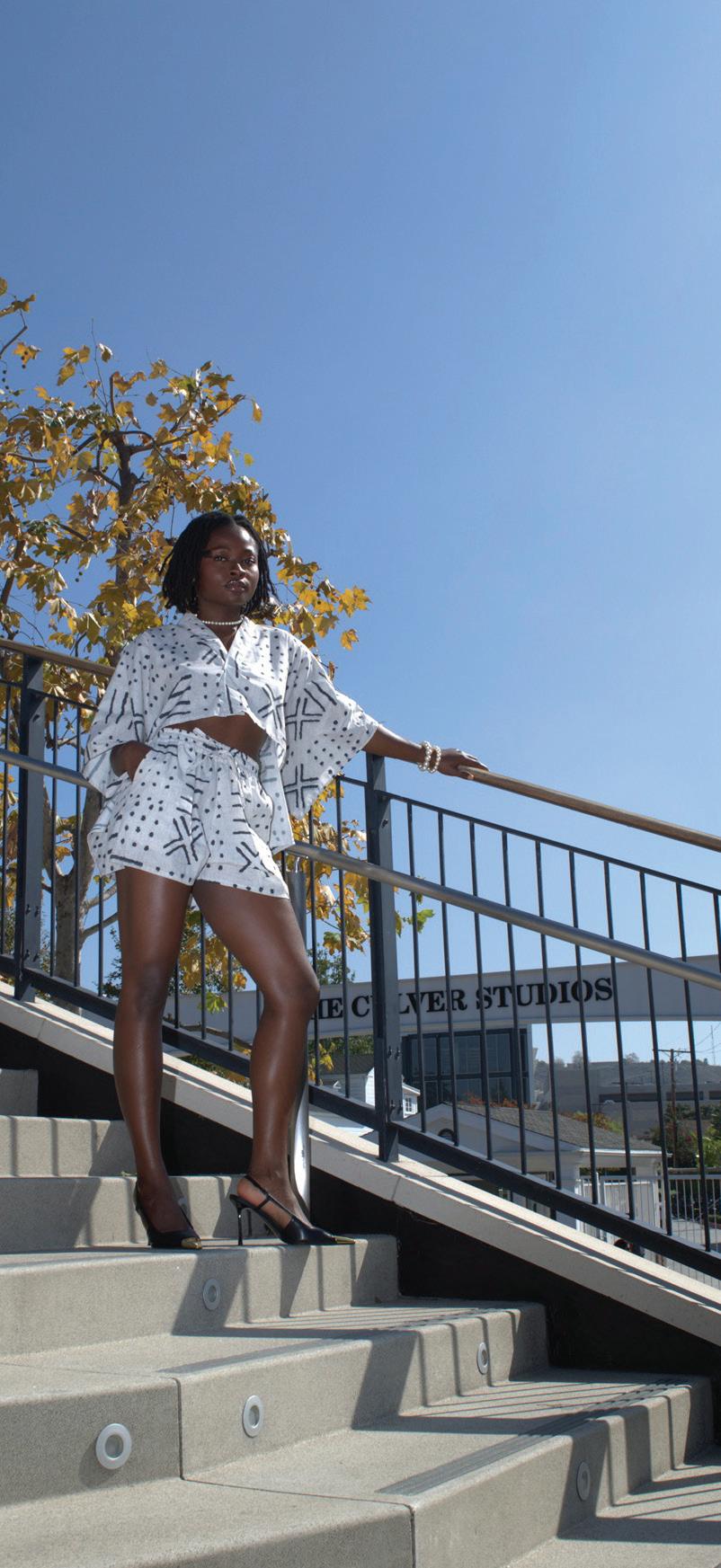
Diasporan-made fashion brand Bogolonfi ni has launched its mid-season line—the Assinie travel collection—featuring lightweight linens, ecofriendly fabrics, signature prints and relaxed silhouettes designed for warm climates, global adventures and cultural reconnection.
Inspired by the quiet luxury of the West African coast, the Assinie travel collection redefi nes vacation style or leisure wear through a diasporic lens. From tailored two-piece sets to bold patterns, each piece is a statement—crafted not only for style but for cultural storytelling.
“Luxury isn’t exclusivity. It’s about purpose, story and connection,” said Bambadjan Bamba, founder of Bogolonfi ni, award-winning actor and cultural advocate. “This collection is about reclaiming our heritage and showing up with pride, wherever we go. Whether you’re walking the shores of Zanzibar, sailing through the Caribbean or poolside in Palm Springs, these pieces are made for those who travel with culture in their carry-on.”
The Assinie travel collection includes:
• Sérénité Women’s Two-Piece Set: Featuring a flowing kimono-style top and high-waisted shorts with a gathered waistband, this versatile ensemble is designed for effortless movement and all-day comfort.
• Kori Noir Men’s Two-Piece Set: Adorned in a striking monochrome earth cloth motif, this set pays homage to ancestral artistry while offering a modern, structured silhouette.
• Abidjan Earth Cloth Shirt: Perfectly capturing the free-spirited aesthetic of modern boho fashion, this tribal-inspired shirt features an intricate geometric pattern of chevrons, dots and vertical stripes that creates a captivating visual story on soft, breathable fabric.
• White Earth Cloth Gown: Made in Africa (Mali and Côte d’Ivoire) from breathable 100% cotton, this striking black-and-white mud cloth gown features sustainable materials and hand-painted patterns that celebrate tradition and modern elegance.
As the global conversation around identity, heritage and intentional consumption continues to evolve, Bogolonfi ni is fi lling a cultural gap in fashion.


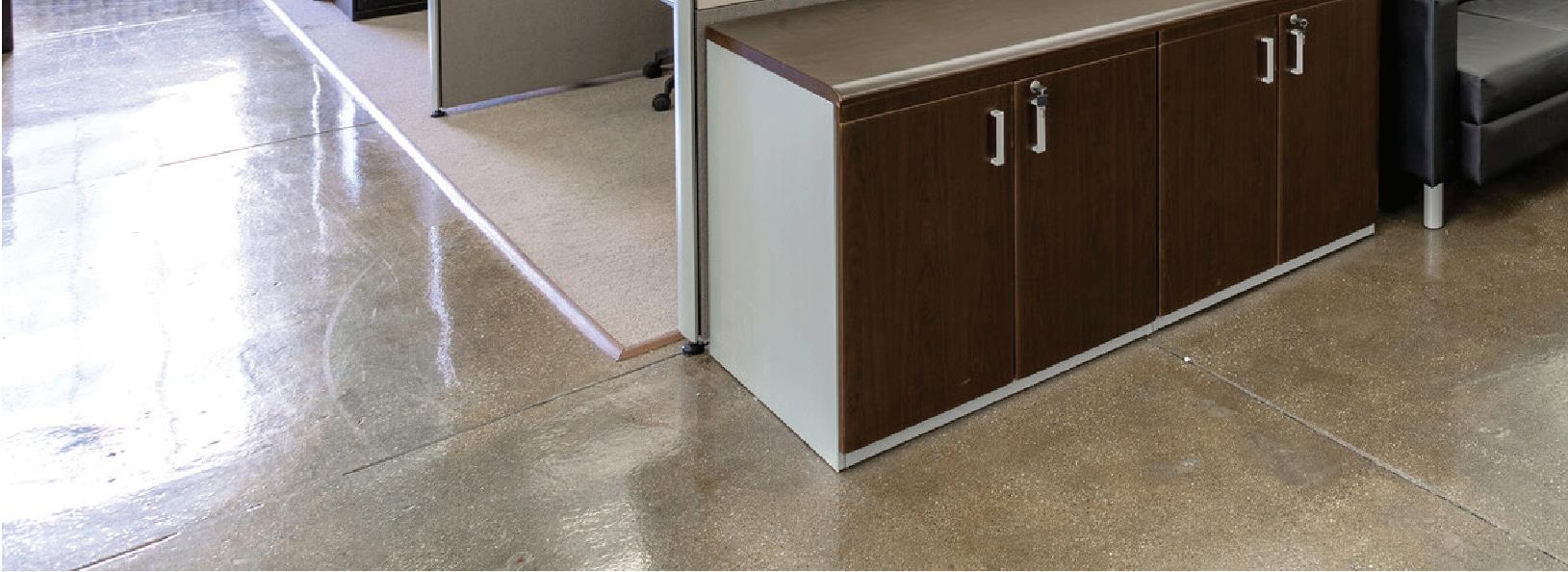



















Fashion Mannuscript is a monthly business-tobusiness magazine that delivers photo coverage of top fashion industry events, columns by experts in the community, and profiles of the people and companies behind some of the biggest deals in fashion. @Mann_pub @Mannpublications | @Fashion_mannuscript Mann Publications




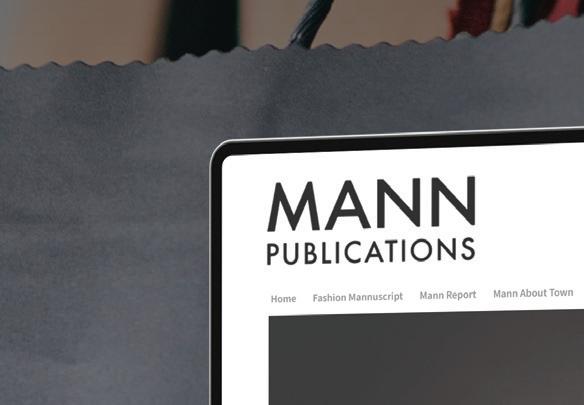

View our website mannpublications.com to check out our digital magazines


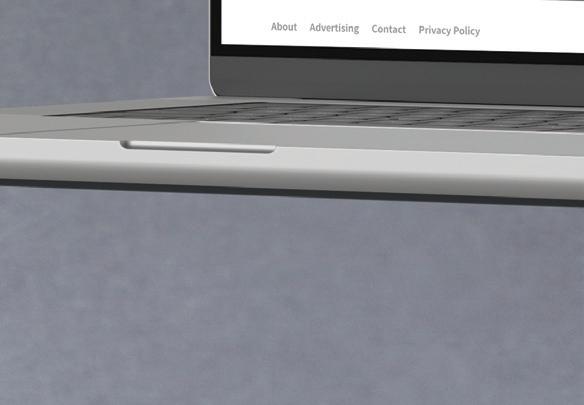
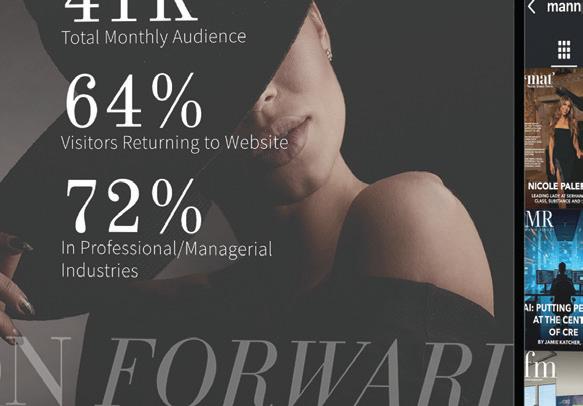

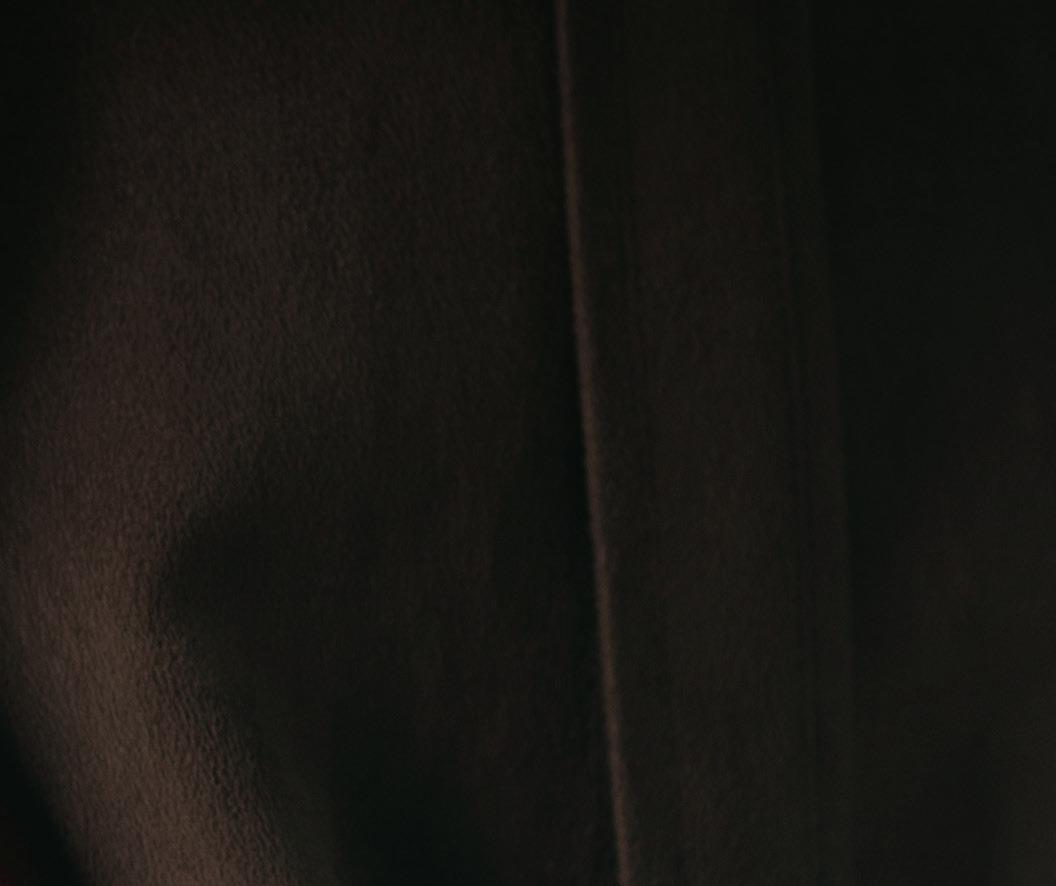
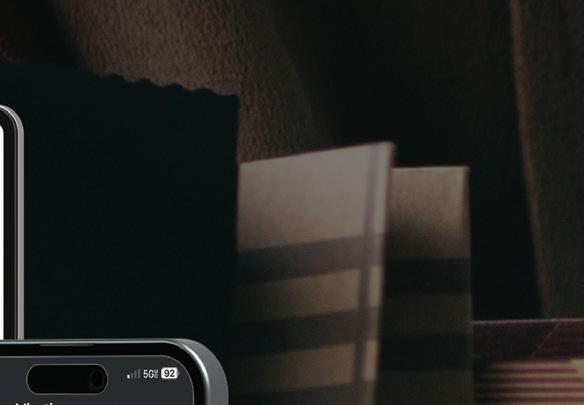

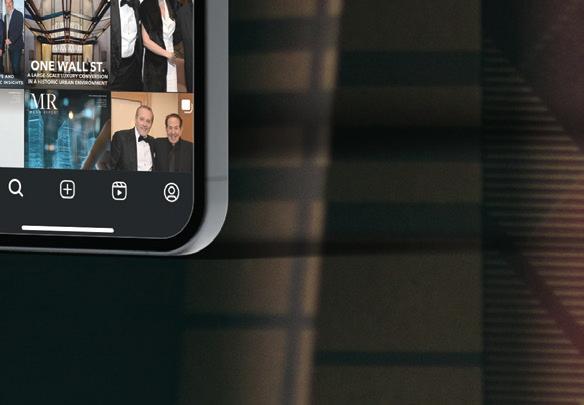



By Michael Sacco, CPA Managing Director, National Consumer and Industrial Products Industry Leader, CBIZ
In the ever-evolving world of fashion, companies often find themselves at a crossroads where growth and sustainability demand significant capital investment. One potential route to secure this funding is through private equity (PE) investment. While this path can provide the necessary resources for expansion, it also presents unique challenges and considerations. Yet, attracting and successfully partnering with private equity is a process that requires forethought, preparation and alignment with the right partners. Below, we outline the crucial steps a fashion brand should take when contemplating private equity investment, from internal assessment to closing a deal.
In the fashion industry, private equity investments can take various forms, including minority stakes, majority buyouts or growth equity. Each type has different implications for control, operational influence and strategic direction.
Before engaging in discussions with private equity firms, it’s essential for fashion brands to clarify their strategic objectives.
The first step for any fashion company considering private equity is to evaluate its financial needs and growth objectives. Questions to consider include:
• What are our short- and long-term growth objectives?
• Do we need capital for innovation, inventory, technology/e-commerce innovation, or marketing and retail expansion?
• Are we seeking operational guidance in addition to capital?
• What does success look like for founders, management and existing shareholders?


Once the need for investment is established, the next step is to prepare the business for potential investors. This involves a series of strategic initiatives:

• Streamlining financials: Ensure your financials are accurate, up-to-date and compliant with recognized accounting standards. Consider an external audit to build credibility. A clean financial history will instill confidence in potential investors.


• Developing a robust business plan: Create a comprehensive business plan that outlines the company’s vision, mission, competitive advantages and market positioning. This plan should also detail how the investment will be utilized to achieve growth.
• Identifying unique selling propositions (USPs): Highlight what sets your fashion brand apart from competitors. This could be sustainability practices, innovative designs or a strong brand narrative that resonates with consumers.


• Legal structure and ownership: Review corporate structure, shareholder agreements and intellectual property registrations (trademarks, patents, copyrights).
• Tax compliance: Make sure all tax filings (income taxes, sales taxes, etc.) are current and any potential exposures are identified.

• Operational metrics: Document key performance indicators (KPIs) such as gross margin, inventory turnover, customer acquisition cost and lifetime value.





Private equity firms look for brands with growth potential. Articulating a compelling narrative— supported by data—can make your fashion brand stand out.
Elements of a strong story:
• Demonstrated performance and growth in current markets
• Clear vision for future expansion (e.g., new product categories, regions, digital channels)
• Unique value proposition, brand differentiation and a loyal customer base
• Management team with industry expertise and a history of execution
• Support for your story with market research, consumer trends, competitive analysis and realistic financial forecasts




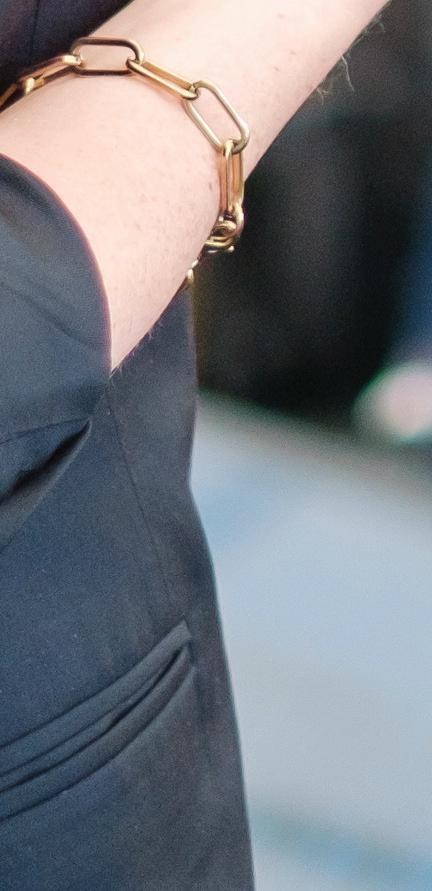

Navigating a private equity transaction is complex. Surround yourself with experienced advisors to guide you through financial, legal, tax and operational matters. These experts can help anticipate challenges, facilitate negotiations and maximize value. Recommended advisors include:
• Investment banker or mergers and acquisitions (M&A) advisor (to identify the right PE partners and negotiate terms)
• Corporate attorney (with deal experience in the fashion and consumer sector)
• CPA or financial advisor (to prepare for due diligence and optimize deal structure)
• Industry consultants (to assess operational improvements and synergy opportunities)
With the groundwork laid, the next step is to identify suitable private equity firms for investment. This requires research and networking.

Not all private equity firms are created equal. Some specialize in consumer brands or fashion, while others may not offer industry expertise. Target those with a track record of scaling brands like yours. Steps to take include:
• Research PE firms’ portfolio companies, reputations and investment philosophies.
• Solicit introductions through your network, advisors and industry events.
• Assess cultural fit, values and willingness to collaborate with your existing team.
• Evaluate their approach to governance, reporting and involvement in day-to-day operations.
Once potential investors have been identified, it’s time to craft a compelling pitch. This presentation should be concise yet informative, focusing on:
• The investment opportunity: Clearly articulate what the investment will be used for, the expected returns and the timeline for growth.
• Market insights: Provide data and insights into market trends, consumer behavior and competitive analysis to support the investment thesis.
If due diligence is successful, the next step is negotiating the terms of the investment. Key considerations include:
• Valuation: Agree on a fair company valuation that reflects its potential while satisfying investor expectations.
• Equity stake: Determine what percentage of equity the investor will receive and how this impacts existing shareholders.
• Control and governance: Discuss the level of control the investor will have, including board representation and decision-making authority.
Once terms are agreed upon, the final step is to close the deal. This involves:
• Legal review: Engage legal counsel to review all contracts and agreements to ensure compliance and protect the company’s interests.
• Finalizing financing: Ensure that all financial arrangements are in place, including any conditions precedent that must be met before funds are released.

• Exit strategy: Outline potential exit strategies for the investors, whether through public offerings, sales to other companies or secondary buyouts.
If an investor shows interest, they will conduct due diligence to assess the viability of the investment. Fashion companies should be prepared for this process by:
• Providing comprehensive documentation: Ensure that all relevant documents, including financial, operational processes and legal agreements, are organized and readily available.
• Being transparent: Honesty during the due diligence process builds trust. Address any potential concerns head-on and provide clear explanations.

Finally, after securing private equity investment, it’s crucial to have a post-investment strategy in place. This includes:
• Regular reporting: Keep investors informed about the company’s performance and progress toward goals set during negotiations.
• Leveraging investor expertise: Utilize the resources and expertise of the private equity firm to enhance operational efficiencies and drive growth.
Securing private equity investment can be a transformative step for fashion companies seeking to expand and innovate. By understanding the process, preparing adequately and engaging with the right investors, fashion brands can navigate this complex landscape successfully. With strategic foresight and careful planning, private equity can provide the financial boost necessary to thrive in a competitive industry.


Michael Sacco, CPA, is the national consumer and industrial products industry leader at CBIZ, where, along with his teams throughout the country, he helps companies achieve financial excellence through tailored consulting, advisory and outsourced services. To learn more about how CBIZ can help your business thrive, visit cbiz.com.








By Ron Friedman


Hello again! The Dodgers and Blue Jays played one of the greatest World Series of all time, and the Dodgers have now won two in a row. Only 14 teams have won two in a row; that is quite a feat. Only two teams have won three in a row, the New York Yankees and the Oakland A’s. I hope the Dodgers are the third team to win three in a row, but that is for next year. The way the Dodgers won game seven will be remembered as a great come-from-behind victory. GO DODGERS!
Now that the series is over, we can turn our attention to football and basketball. Jeff Mann and I love to talk sports when we can find the time.
I like to look back at the history of the apparel industry in Los Angeles from the 1970s to the present, and in this article, I would like to remember two icons of the swimwear industry, Marvin Goodman and Milt Bronson.
Goodman founded High Tide Swimwear in the 1960s, and Bronson joined them as a salesman. High Tide Swimwear became known for its innovative designs and highquality production, and it was part of the wave of family-run swimwear businesses that



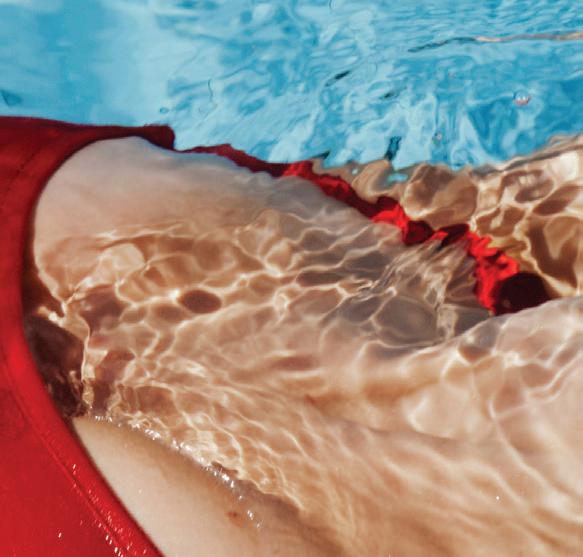

helped establish L.A. as a swimwear hub. The brothers sold the company in the late 1960s, and in the mid-1970s, Goodman founded Apparel Ventures, which launched several labels and grew to become one of the largest swimwear manufacturers in the United States. Apparel Ventures specialized in designing, manufacturing and distributing women’s swimwear and cover-ups, providing private label production for major retailers and creating branded collections under names such as Sassafras, La Blanca, Island Soul and others. The company was recognized for its innovation in fabric development, fit and design, as well as for high-quality manufacturing—much of which was done locally in L.A. for decades.
Goodman’s leadership and business savvy helped shape modern swimwear merchandising, distribution and trend forecasting. He was an industry mentor and role model for many designers and executives in Southern California. He was a real gentleman. His commitment to both creative design and scalable, efficient production transformed the landscape for U.S. swimwear, especially in Los Angeles, where local manufacturing was abundant. Yes, there once was cutting and sewing in Los Angeles.
Milt Bronson was another highly respected
leader in the Los Angeles swimwear industry. Bronson founded On the Beach, a swimwear brand that gained a strong following through the 1980s and 1990s. The company was known for contemporary swim styles, lively prints and high-quality construction, reflecting Bronson’s taste and expertise in both design and garment manufacturing. On the Beach became a wellestablished label in department stores and specialty boutiques, helping to popularize West Coast swimwear aesthetics across the U.S.
Bronson was admired for his hands-on leadership and mentorship, influencing numerous swimwear designers and business professionals. His work contributed to Los Angeles’ status as a center of swimwear innovation and manufacturing throughout the late 20th century. Bronson also had another passion: owning and racing horses. You knew that if he was not in his swimwear offices, you could find him at the track. He owned many horses throughout his life, but I will always remember his best horse, Sweet Diane. This horse became a real winner and was on its way to becoming a champion racehorse until, one day at the track, it fell and broke its leg.
Both Goodman and Bronson are remembered as visionary founders and mentors whose companies helped define the direction of







American swimwear fashion and business. Their commitment to local manufacturing, quality and forward-thinking design left a lasting mark on the L.A. apparel industry.
As of today, Los Angeles is home to several hot and influential swimwear brands that have gained national and international recognition for their style, marketing, and trendsetting appeal. Here are some of the most prominent contemporary L.A.-based swimwear brands:
1. Frankies Bikinis: Founded by Francesca Aiello, this brand is celebrated for its youthful, trendy designs, frequent collaborations (including with celebrities) and strong influencer presence. It is known for bold prints, unique cuts and a direct-to-consumer model.
2. Vitamin A Swim: Pioneers in ecoconscious swimwear, Vitamin A focuses on sustainable fabrics (like recycled nylon) and a chic, minimalist California style. It is widely respected for its commitment to ethical manufacturing.
3. Beach Bunny: Renowned for glamorous, sexy designs often worn by celebrities and seen in Sports Illustrated Swimsuit issues, Beach Bunny produces in California and is famous for intricate detailing and luxury appeal.
4. L*Space: A contemporary label with a focus on versatile, mix-and-match pieces



and a laid-back SoCal vibe, L*Space is popular for both swimwear and beach lifestyle accessories.
5. Solid & Striped: Originally based in New York, the brand has a strong presence in L.A. and is known for retroinspired styles, bold color-blocking and influencer collaborations.
6. Marysia: Known for its signature scalloped-edge designs, Marysia maintains a chic, minimalist aesthetic with luxury materials. While not exclusively L.A.based, it has deep roots in the local market and a strong celebrity following.
7. BoutineLA: A direct-to-consumer sensation, BoutineLA is famous for minimal, sporty swim styles and highprofile social media campaigns.
8. Monday Swimwear: Founded by influencers Natasha Oakley and Devin Brugman, this brand is loved for figureflattering cuts, quality materials and its “body positivity” ethos.
9. Taj: Taj is a smaller, luxury label emphasizing bohemian prints, artisanal details and sustainable practices.
Why these brands stand out:
• Strong Instagram and influencer marketing
• Trend toward sustainability and ethical production
• Designs that cater to both luxury and accessible price points
• Local “Made in L.A.” manufacturing or design teams
In summary, Frankies Bikinis, Vitamin A, Beach Bunny, L*Space, BoutineLA, Monday Swimwear and a handful of boutique brands are the hottest and most relevant in the Los Angeles swimwear scene today. These brands have capitalized on digital marketing, sustainability and local design to shape national swimwear trends.
As you can see, Marvin Goodman and Milt Bronson were the icons of the past, and now we have new swimwear leaders who will possibly become the icons of the future. Fashion changes, and industry leaders may change, but we can always know that baseball is a great game, and the World Series showcases the best of it. Go Dodgers.
Until next time, remember what I always conclude with—if you are not having fun, then do something else!
Ronald S. Friedman, CPA, is an advisory and assurance partner in the Los Angeles office of CBIZ (formerly Marcum LLP) and a retail practice leader in the fi rm’s consumer and industrial products group. Contact him at ron.friedman@cbiz.com




By Salvatore J. Stile II, Chairman, Alba Wheels Up International LLC

The fashion business survives on margins. Misapplied digits in the Harmonized Tariff Schedule (HTS) can swing duty exposure and wipe out a hot style’s edge. Apparel and accessory brands must have professional and defensible “tariff controls” in place— especially now. U.S. law puts the burden squarely on the importer to exercise “reasonable care” and file accurate entries, including correct classifications and duty payments. If your customs broker makes an error, it’s your responsibility as importer of record, not theirs.
At Alba Wheels Up, we’ve been focusing on classification protocols. We have substantially saved importers’ time and money by using AI to pre-review potential clients’ tariff numbers and then having licensed experts validate or correct those results. This hybrid approach does not replace human judgment; it systematizes it—so merchandising, sourcing and finance can price with confidence while compliance sleeps at night. What “reasonable care” looks like in fashion according to Customs and Border Protection’s (CBP’s) own guidance is clear: importers must maintain procedures that support accurate classification, valuation and origin—backed by documentation you can hand to an auditor.
In apparel and accessories, that means every at-risk stock keeping unit (SKU) should have an audit-ready packet containing:
• The final HTS code and duty rate
• A short General Rules of Interpretation (GRI) path explaining why
• Chapter and subheading notes (often chapters 42, 61, 62 or 63)
• One or more supporting Custom Rulings Online Search System (CROSS) rulings
• A plain-English materials-and-construction summary that matches your invoice, tech pack and images
Get these right and you’ve moved classification from “opinion” to “evidence.”





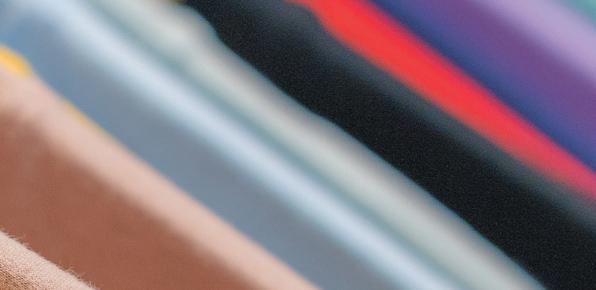


Based on observed patterns, large language models are excellent at first-pass issue spotting across long specs, invoices and image sets: fiber blends, knit vs. woven, coatings, ornamentation, essential character questions for mixed-material accessories, and whether a retail “set” should be classified as a set or by the character item. But models are not the final word, and they can miss context. AI drafts the general rate increase (GRI) logic and highlights edge cases; licensed brokers decide and sign off. That human validation is what turns a draft into a defensible record.
AI tariff tools can also help before production. They can give the design team tariff-engineering ideas—like fabric choices, coatings, pocket counts or set packaging—that may lawfully lower a style’s duty rate, with notes that tie back to the HTS rules. Based on observed patterns, these tools can push updates to your enterprise resource planning (ERP) in near real time, so the working HTS code, duty rate and flags (e.g., knit vs. woven, coated vs. uncoated) flow straight into costing, pricing and purchase order (PO) approvals. Teams get simple alerts when a spec change could shift the code or when a published rate changes, and compliance gets an audit trail showing who reviewed and approved the update.
In our experience, most “savings” are not magic rates—they’re corrections backed by the GRI logic you should have had in the first place. We frequently find: (a) misapplied men’s/women’s or knit/woven distinctions, (b) outdated carryover codes despite spec changes, (c) accessories classified by the wrong material, and (d) sets treated incorrectly. Fixing these ahead of entry avoids rework, demurrage and post-entry bills. It also prevents the much costlier scenario: CBP alleging systemic negligence under section 1592 because you lacked reasonable care.















By Krieger Worldwide

Global supply chains have always been complex, but recent disruptions—ranging from pandemics to geopolitical tensions— have led many businesses to reconsider where they source and produce their goods. One strategy gaining significant attention is nearshoring. Unlike offshoring, which involves relocating production to distant countries, nearshoring brings manufacturing and sourcing closer to your primary markets. While it may not be the perfect solution for every business, understanding the potential benefits— and challenges—can help you make more informed decisions.
At its core, nearshoring is about proximity. By moving production closer to your end customers, you can reduce transit times, lower shipping costs and improve responsiveness. Consider a company in the United States that previously imported consumer electronics from Southeast Asia. Shipping by ocean might take several weeks, and any unexpected delay could disrupt inventory and sales. By nearshoring production to Mexico or Central America, the company can receive products faster, adapt to changing demand and reduce the uncertainty associated with long-haul logistics.
Another significant advantage is supply chain resilience. Long-distance supply chains are vulnerable to disruptions—port closures, labor strikes, extreme weather or regulatory changes can all cause delays. Nearshoring reduces the number of steps and variables in your supply chain, making it easier to manage and less susceptible to shocks. This doesn’t eliminate risk entirely, but it can make your operations more predictable.








Cost is often the first consideration for businesses exploring nearshoring. While labor costs may be higher in nearby countries compared to traditional offshoring destinations, savings on shipping, inventory and risk mitigation can offset these differences. For example, a U.S.-based apparel company moving part of its production to Mexico found that reduced transit times allowed it to maintain lower inventory levels, which freed up working capital. In some cases, nearshoring can even improve cash flow despite slightly higher production costs.
Speed and responsiveness are other key benefits. Nearshoring allows for shorter lead times, which means businesses can respond more quickly to market trends, seasonal demand or customer feedback. This agility is particularly valuable in industries like fashion, electronics or consumer goods, where trends shift rapidly.
A business that can pivot faster than its competitors often gains a significant competitive advantage. Quality control is another consideration. When production is closer, companies can more easily monitor processes, address defects and enforce standards. While remote management is possible, it is inherently more challenging when operations are thousands of miles away.
It’s also worth mentioning that nearshoring can support sustainability goals. Shorter shipping distances mean lower carbon emissions, which contributes to environmental responsibility. For companies increasingly focused on environmental, social and governance (ESG) metrics, nearshoring can align operational efficiency with sustainability







objectives. It’s a win-win, though, of course, it requires careful planning to avoid unintended consequences.
That said, nearshoring is not without challenges. Local infrastructure, regulatory environments, labor availability and political stability all play a role in determining feasibility. It requires careful assessment and, often, collaboration with experienced logistics and supply chain partners. Freight forwarders like Krieger Worldwide can provide critical guidance, helping businesses navigate regulatory requirements, plan transport routes and optimize operations when nearshoring.
In practice, nearshoring is about balance. It’s not always cheaper, and it may require up-front investment, but it often offers benefits in speed, flexibility and risk reduction that distant offshoring cannot match. Many companies adopt a hybrid approach, combining nearshoring for critical or time-sensitive products with strategic offshoring for other goods, creating a diversified and resilient supply chain.
Ultimately, exploring nearshoring is about strategic foresight. It’s about understanding your business needs, customer expectations and the broader dynamics of global trade. For many U.S. companies, bringing production closer to home can improve responsiveness, reduce risk and even enhance sustainability—all while supporting long-term growth. The key is careful planning, collaboration with experienced partners and ongoing evaluation to ensure the approach continues to meet business objectives.
By Paul F. Magel, President, Computer Generated Solutions Inc. (CGS)
For years, fashion brands have chased speed and cost efficiency as the ultimate measures of success. But as we enter 2026, the real status symbol isn’t fast or cheap—it’s resilient.
Resiliency has become fashion’s most valuable currency—it determines who can keep shelves stocked, production running and promises kept when the next disruption hits. And make no mistake—more are coming. Tariff shifts, material shortages, political instability, labor gaps and weather-related shocks are all reshaping the global sourcing map.
According to the World Economic Forum’s “Global Risks Report 2025,” disruptions to systemically important supply chains are now ranked among the world’s top 20 short-term global risks— underscoring how trade tensions, climate shocks and geopolitical conflicts are converging to test supply chain resilience on a global scale. The takeaway: resiliency isn’t a buzzword; it’s a survival skill.
Many brands spent the last decade building far-flung sourcing networks designed for low cost. In 2026, that’s no longer sustainable. Nearshoring and regional diversification are back in focus—not just for speed, but for stability.
Forward-thinking brands are mapping supplier risk down to the fiber level, using digital tools to assess everything from lead-time variability to carbon exposure. The new mandate is optionality—balancing lowcost regions with nearshore partners who can pivot quickly when trade conditions shift, or ports slow to a crawl.
We’re also seeing deeper collaboration between sourcing and planning teams, who now share unified visibility platforms. That connection allows them to anticipate disruption, model alternate supplier scenarios and make data-backed decisions that protect both profit and brand equity.
True resilience also depends on strong, collaborative partnerships with suppliers—built on shared visibility, open data and mutual accountability. When both sides are aligned around the same goals,
brands gain not just flexibility but a true extension of their own supply chain intelligence.
These partnerships, combined with connected data, form the foundation of a resilient supply chain—one that sees risk before it strikes.
The brands thriving in 2026 are the ones treating data as strategically as they treat design. By connecting enterprise resource planning (ERP), product life-cycle management (PLM) and AI planning tools, they’re not just seeing what’s happening—they’re predicting what’s next.
AI-driven planning is helping teams anticipate demand swings, adjust production in real time and manage inventory across multiple regions with confidence—setting a new standard for how decisions get made across the fashion value chain. Rather than relying on backwardlooking reports, these systems analyze external signals—from economic trends to weather patterns—to create a living, learning supply chain.
It’s less about having the perfect forecast and more about having the agility to course-correct fast. That’s where integrated systems like those we’ve built at BlueCherry play a vital role: connecting every stage of the value chain, from concept to consumer, so decision-makers can act quickly and decisively—armed with the right insights at the right time.
Technology is only half the equation; the other half is people. Resilience is a mindset as much as a model. Leaders need teams trained to adapt, collaborate and make decisions fast when the unexpected happens.
That starts with a culture that rewards agility over hierarchy. The most resilient organizations are those where design, sourcing and supply chain teams work in lockstep—communicating quickly, sharing insights and understanding how every decision ripples through the business.
Investment in upskilling will also be critical. As technology accelerates, human judgment will matter even more—interpreting AI insights, managing supplier relationships and steering the business when data alone can’t.
The next wave of disruption is already forming. But the brands that win won’t be the ones with the lowest costs or fastest lead times—they’ll be the ones that can bend without breaking.
In 2026, resiliency is the “new black”—not a passing trend, but the defining trait of the modern supply chain: connected, transparent and strong enough to withstand whatever comes next.
The future won’t belong to those who predict every storm, but to those who’ve built the strength to stand through it.

WELLS FARGO CAPITAL FINANCE FACTORING
ASSET-BASED FINANCING
ACCOUNTS RECEIVABLE MANAGEMENT
ACQUISITION FINANCING
INVENTORY FINANCING
IMPORT AND EXPORT FINANCING
LETTERS OF CREDIT

In an industry that endlessly strives for the next big thing, having the flexibility to adapt at a moment’s notice is key to success. With Wells Fargo, you get the strength and stability you need, along with the nimbleness you want. Our flexible financing may support your growth, and our proven track record in factoring and receivables management helps make sure you’re ready for whatever’s next.
Tap into our knowledge, experience, and broad o ering of products so that your business’ success never goes out of style. Learn more at wellsfargocapitalfinance.com/apparel.
Peter Pugliese
Senior Vice President, Regional Sales Manager 212-703-3551
peter.pugliese@wellsfargo.com
Crafting Timeless Fashion With









































































































































































































































































































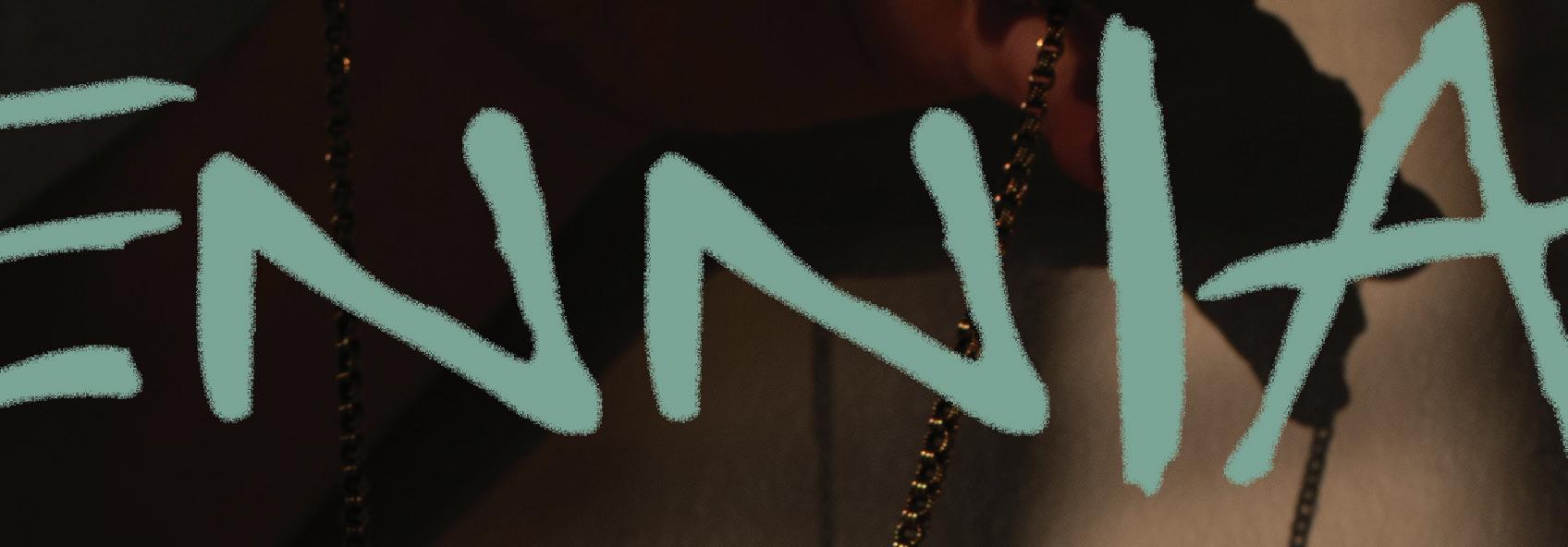
Rebecca Rau’s Then & Now Collection Reimagines History


In an age where trends flicker and fade at the speed of a scroll, designer Rebecca Rau offers something rare: permanence. Her debut collection, Then & Now, is not merely jewelry; it is a dialogue between centuries. Drawing upon genuine historical artifacts that span from 1200 BC to 1880 AD, Rau fuses antiquity and modernity into singular works of art that reframe our relationship with time, beauty and craft.
The collection made its first appearance at M.S. Rau in New Orleans, the world-renowned gallery owned by Rau’s family for generations, before traveling to New York City Jewelry Week for its East Coast debut. Within these jewels lies a quiet reverence for history, a recognition that every artifact carries a story waiting to be retold.
“I’m drawn to the tension between resilience and permanence,” Rau explained. “Then & Now bridges centuries through shared human impulses: creation, adornment and ritual. These pieces remind us that the concept of beauty is everevolving, but handmade objects continue to possess a kind of gravitas, especially when they’ve survived hundreds of years.”
It’s easy to see that philosophy in practice. A Renaissanceinspired necklace centers on a first- to second-century cut of brown jasper, its ancient fragment now framed by the fiery glow of unheated orange zircons, umbalite garnets and a strand of Tahitian pearls, suspended from a 19th-century French chain. In another piece, a rare Gothic glass pendant radiates softly against the gleam of high-karat gold, its medieval light renewed through a contemporary paperclip chain that transforms the relic into a statement of modern grace.
Elsewhere, Rau draws upon even deeper history: a Bactrian amulet dating back to 1200 BC or a 13th-century Spanish gilt-bronze harness, once part of ceremonial armor. Rau’s sensitivity to materials is instinctive, shaped by a lifetime spent among relics of the past. As a fourth-generation antique dealer and daughter of M.S. Rau’s storied New Orleans legacy, she grew up surrounded by world-class art and artifacts. After earning a master’s degree from Sotheby’s Institute of Art in London, she traveled extensively across Europe and Asia, acquiring rare jewels and objets d’art while refining her eye as both scholar and artist. With Then & Now, she merges these two worlds, the academic and the aesthetic, into something deeply personal.
Each one-of-a-kind piece in the collection carries a conversation between what was and what might be, between the craftsman of another age and the artist of today. In Rau’s hands, history is not static; it becomes intimate. Her jewels are not replicas of the past but living vessels of memory, transformed through her vision into adornments that speak to endurance, reinvention and timelessness.


For more than four decades, 525 America has defined what it means to make knitwear modern. Founded in 1983 with a single cotton sweater and a belief that simplicity, quality and comfort could live in perfect harmony, the New York-based brand has since become an enduring fixture in American fashion. Through every trend cycle, every era of minimalism or maximalism, one thing has remained constant: 525 America’s ability to make women feel effortlessly themselves through timeless, tactile design.
From its humble origins as a familyrun business in New York to its presentday position as a leader in contemporary knitwear, 525 America has built a legacy not on spectacle, but on substance. The brand’s success lies in its deep understanding of what women actually want to wear—pieces that bridge the line between trend and tradition, that feel just as good at home as they do on the street, and that remain relevant no matter how the industry shifts.
trust of those who have loved the brand for decades.
Over the years, 525 has expanded its offering to include cashmere, merino wool and innovative blended yarns that bring new depth to its signature textures. But even as materials and techniques evolve, the guiding principles remain the same: quality craftsmanship, timeless versatility and design that centers around how people truly live.
The Fall/Winter 2025 collection perfectly embodies that balance of continuity and evolution. This season, the brand revisits the theme of texture as storytelling, crafting a lineup of pieces that feel both nostalgic and distinctly modern.

“Knits have always been our
language.”
—Bari Schorr, Chief Merchandising Officer






“Knits have always been our language,” said Bari Schorr, chief merchandising officer. “Our goal has never been to chase what’s next, but to continue evolving what we do best: creating pieces that embody comfort, confidence and connection. For us, the sweater is a canvas for emotion as much as style.”




Each design explores the emotional power of touch—from the sculptural cables and soft ribs that define 525 America’s core aesthetic to fresh proportions and unexpected materials that bring new dimension to classic silhouettes. Cozy fisherman pullovers, cocooning wrap cardigans and ribbed sets transition seamlessly from morning to evening, while statement sweater dresses and half-zip knits nod to the athletic elegance shaping modern dressing.

That philosophy has made 525 America a quiet yet powerful force for over 40 years. It is a brand that continually redefines how knitwear can make people feel.









The color palette speaks to subtlety and sophistication: winter whites, golden oat, deep forest and a warm chestnut that mirrors autumn light. Together, the tones and textures create a collection that feels rooted in real life; familiar yet elevated, tactile yet refined.
from its original address in Manhattan’s Fashion District) is a nod to its roots in


At its core, 525 America is about more than just sweaters. It’s about craft, care and connection. The brand’s name itself (derived from its original address in Manhattan’s Fashion District) is a nod to its roots in American craftsmanship. Every stitch and silhouette reflects an ongoing dialogue between form and feeling, between texture and touch.

“We wanted to celebrate the intimacy of knitwear,” said Schorr. “There’s something incredibly personal about your favorite sweater—the way it moves with you, the way it holds memories. This collection captures that feeling, but through a modern lens. It’s about creating pieces that comfort and empower at the same time.”






has always been tactility—the idea that a great sweater isn’t just worn; it’s experienced. That tactile philosophy has resonated across

From the iconic cotton crewneck that launched the brand to its expansive lineup of contemporary fashion knits, the throughline has always been tactility—the idea that a great sweater isn’t just worn; it’s experienced. That tactile philosophy has resonated across generations, as 525 America continues to win over new audiences without losing the
The result is a collection that invites connection, not only to the garments themselves, but to the moments they accompany. And this season, that spirit of connection extends even further, as 525 America introduces two joyful, conversationworthy capsule launches that bring warmth and whimsy to its world of knits.
Fufusoul x 525 America: A Whimsical Collaboration in Color, Comfort and Scent
In October, 525 America unveiled one of its most unexpected and delightfully imaginative collaborations to date: a limitededition capsule with Fufusoul, the cult-favorite collectible brand that has become a global sensation for its soft, fragrant plush charms.
At first glance, the pairing of a heritage knitwear house and a playful collectible brand might seem surprising. But at its heart, the collaboration makes perfect sense. Both brands share a deep appreciation for texture, tactility and the emotional resonance of softness—how the right material or scent can instantly spark a memory or mood.
The Fufusoul x 525 America capsule merges these worlds through a collection of nine collectible plush pendants, each designed with color and scent combinations inspired by 525’s cozy aesthetic. Presented in blind box packaging, the experience invites customers into a moment of discovery: a tactile surprise that mirrors the joy of unwrapping something made just for you.
“We were drawn to Fufusoul for their unique blend of creativity, color and comfort, much like our knitwear,” said Wen Huang, head of marketing. “They’ve become a must-have accessory that combines softness, scent and self-expression, and we loved the idea of bringing that spirit into our world in a fun, limited-edition way for the holiday season.”
“At 525 America, many of us are proud pet parents, and this season, we wanted to bring that love into our collection,” shared Huang. “These sweaters celebrate the connection and companionship that make the holiday season so meaningful, whether out for a brisk morning walk or curled up at home with your best friend.”
Each design draws from the brand’s iconic knits—cozy cables, soft ribs and neutral palettes that flatter both human and hound.
But the launch is more than a cute moment in fashion. It’s also a statement of compassion. In partnership with Animal Care Centers of NYC (ACC), 525 America will donate $3 from every order in November to support the shelter’s mission. The brand will also contribute toys, treats and essentials to help animals in need. Heartwarming adoption stories from ACC will be shared on the brand’s website and social media, shining a light on real connections formed through care and kindness.

“At 525 America, many of us are proud pet parents, ... we wanted to bring that love into our collection.” —Wen Huang, Head of Marketing
Beyond its charming novelty, the capsule reflects 525 America’s growing interest in exploring fashion through emotional design—in finding small, sensory-driven ways to connect with customers who crave experiences that go beyond the visual.
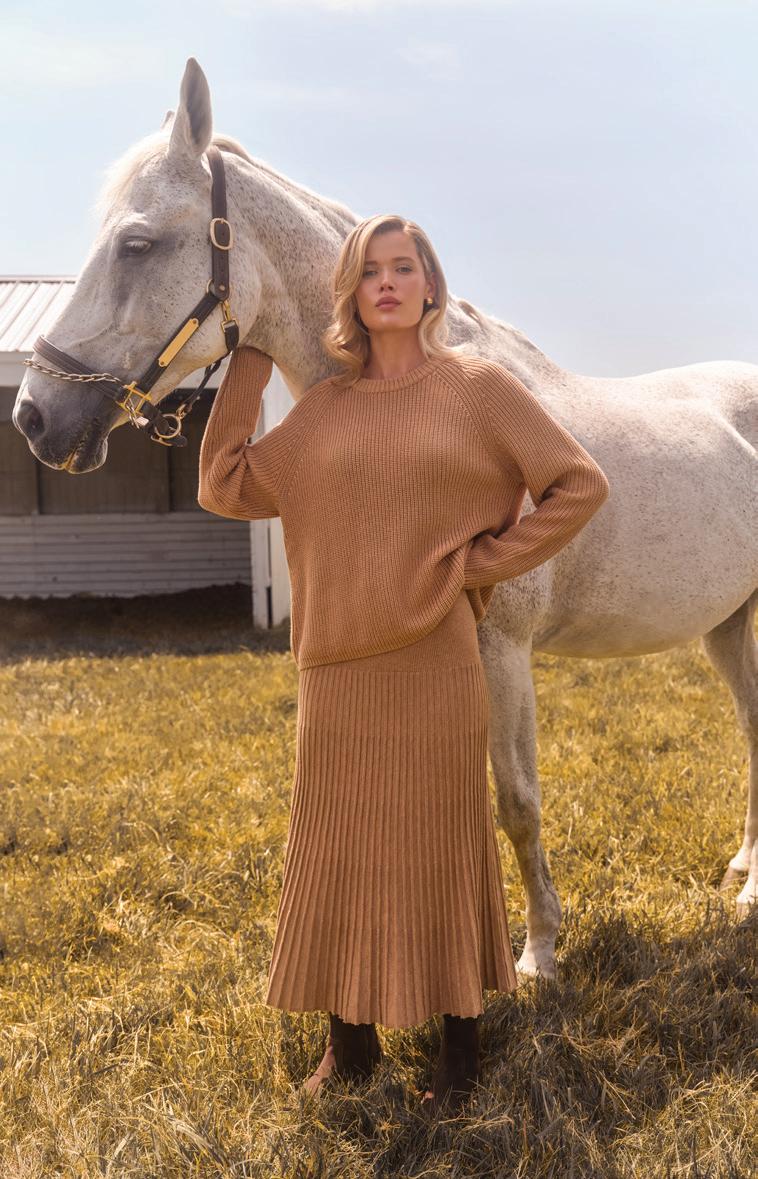









It’s an inventive bridge between generations and sensibilities: an invitation to rediscover joy in the familiar.
The Luxury Pet Collection: Matching Knits for You and Your Best Friend
As the holidays approach, 525 America continues to weave connections into every thread—this time through the launch of its first-ever Luxury Pet Collection, debuting in early November.
The new capsule introduces a heartwarming concept: matching sweaters for dogs and their owners, designed with the same quality craftsmanship and refined comfort that define the brand’s women’s collections. The result is a coordinated expression of warmth and companionship—a nod to the way pets have become not just part of our lives, but also part of our personal style.

It’s a project that perfectly encapsulates the emotional core of 525 America: stylish yet soulful, thoughtful yet joyful.
It’s a project that perfectly encapsulates the emotional core of 525 America: stylish yet soulful, thoughtful yet joyful.

40 Years of Craft, Connection and Care
40 Years of Craft, Connection and Care







longevity lies not in reinvention for



been built upon the last, guided by the same enduring principles: to craft

As 525 America celebrates more than 40 years in the industry, its secret to longevity lies not in reinvention for reinvention’s sake, but in authentic evolution. Each era of the brand has been built upon the last, guided by the same enduring principles: to craft beautiful knitwear that makes people feel something—comfort, confidence, nostalgia, joy.





In an age when fashion often moves at lightning speed, 525 America continues to remind us of the value of slowing down and appreciating the weight of quality, the touch of texture and the stories that live within our clothes.

to remind us of the value of slowing down and appreciating the weight of
From timeless fall staples to innovative collaborations that spark delight, the brand’s vision remains clear: to knit together the emotional and the everyday, one piece at a time.
As Huang reflects, “Forty years in, we’re still finding new ways to express what knitwear means, not just as fashion, but as connection. That’s what has always driven us, and that’s what will continue to inspire our next chapters.”
Four decades strong, 525 America remains an icon of American design—grounded in heritage, alive with imagination and forever cozy.
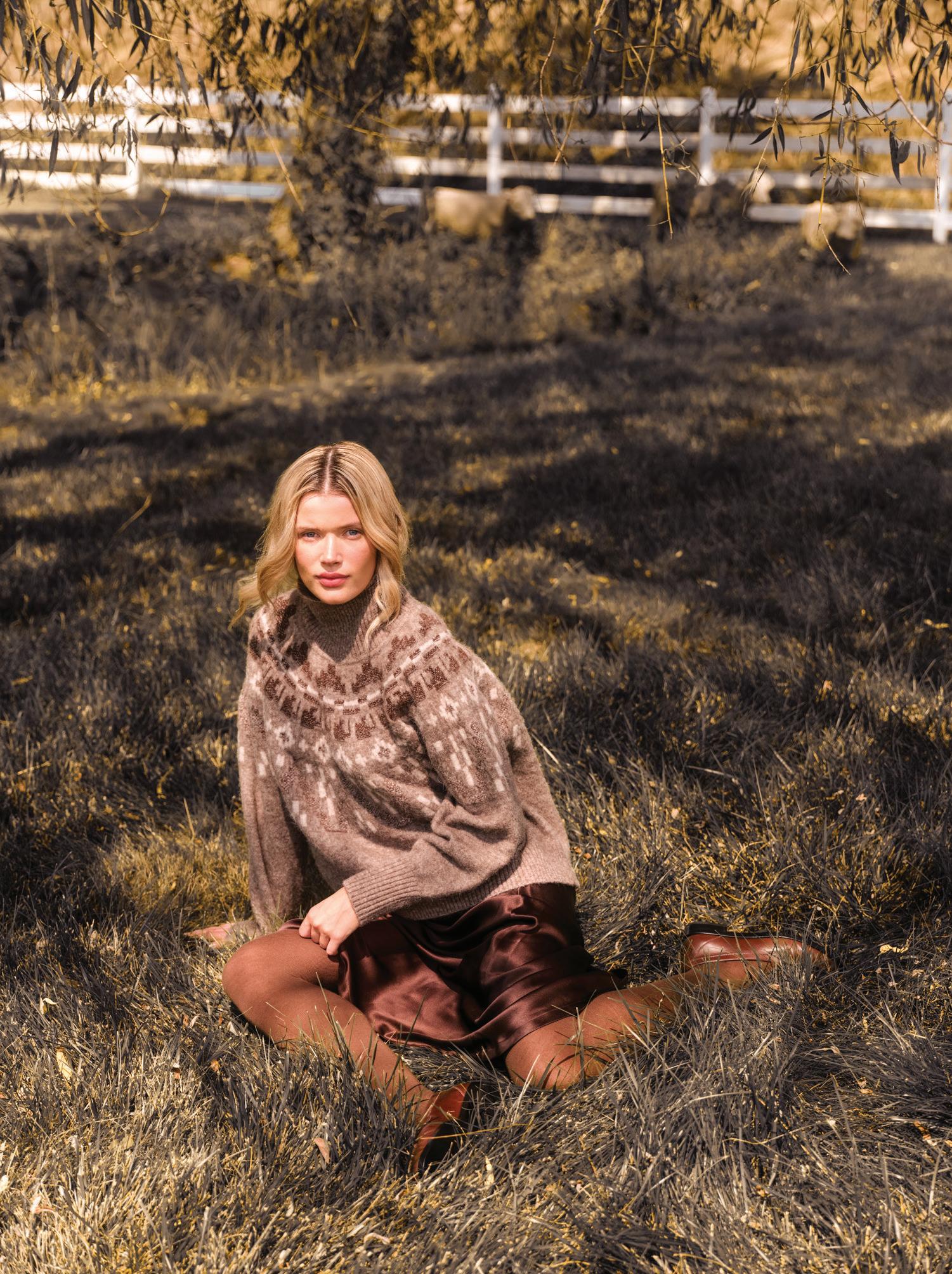

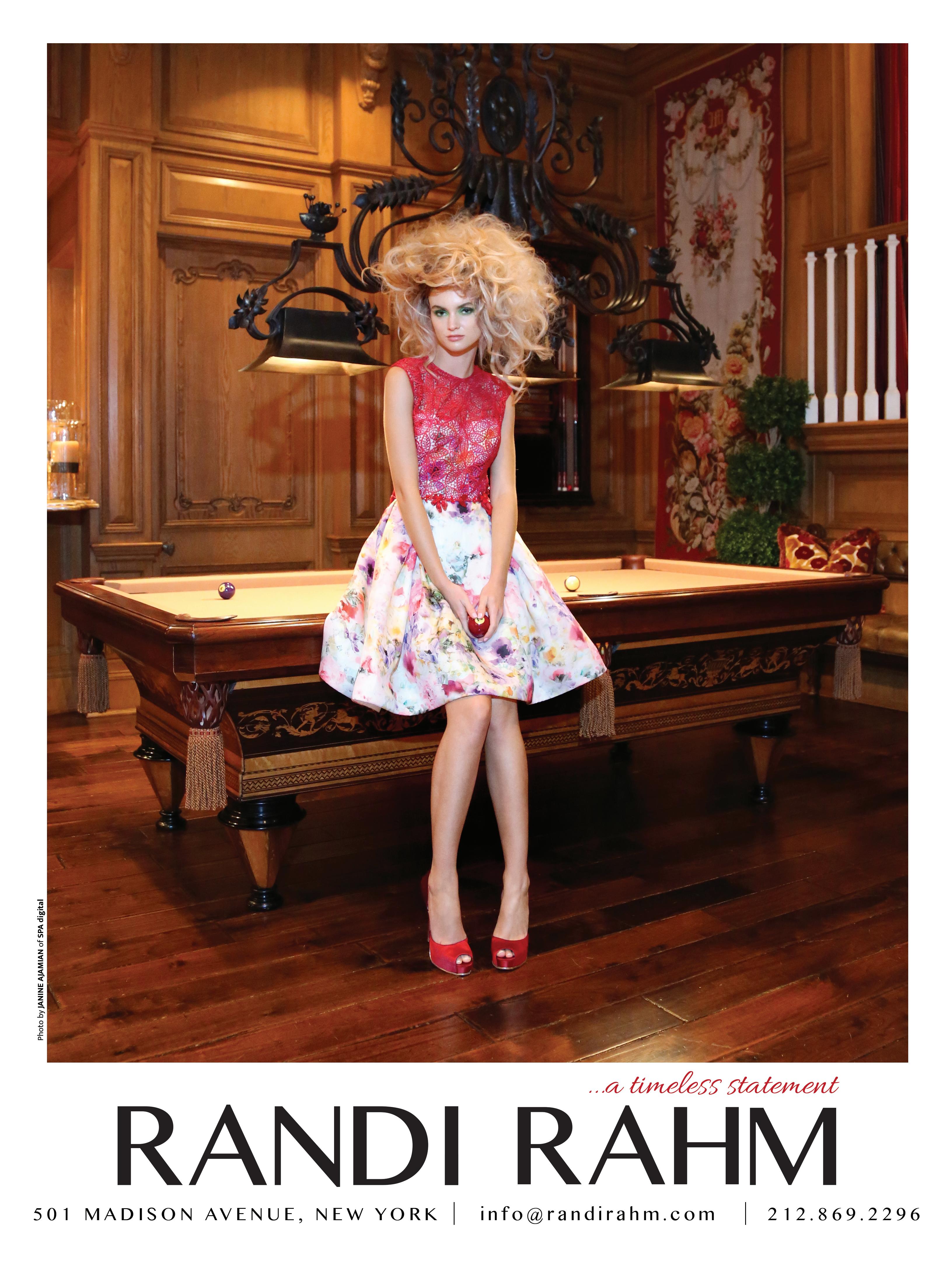















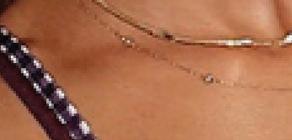







How Stefana Avara Built Liaison the Label Into a Community-Driven Activewear Brand
After years of building a loyal audience online, Stefana Avara decided to turn her influence into impact. Enter Liaison the Label, a community-focused activewear brand that effortlessly combines movement and style with timeless, functional pieces.
“Building Liaison was a slow, hands-on process,” said Avara. “Those early years taught me everything about the kind of brand I wanted to build: one rooted in persistence, intention and a real understanding of what women want to wear every day.”
Liaison’s mission extends far beyond just the workout. For Avara, it was about creating pieces that actually fit into women’s lives, not just their next Pilates class. “We focus on refined design, thoughtful details and lasting quality so every piece feels functional and flattering,” said Avara. Long term, Avara hopes to continue redefining the women’s activewear space by building a brand that lasts beyond trends. “We want people to associate the brand name with quality, authenticity and community, not just cute clothes,” she said.
Avara draws inspiration from a wide range of sources, many of which are designs unrelated to activewear. From runway shows to archival collections, Avara finds that outside inspiration helps her approach her designs more creatively. She specifically finds herself drawn to legacy designers focused on craftsmanship and timeless silhouettes—a level of attention to detail she aims to carry into her own designs.
and Liaison. This year, Liaison has more than doubled last year’s revenue, with its biggest seasons—Black Friday and holiday campaigns—still ahead. Moving into 2025, the brand is projecting even more growth as it continues to scale and reach more women globally.
Liaison pieces were recently featured throughout this season of “Dancing with the Stars,” a milestone Avara was particularly proud of. “These were not paid
At the heart of Liaison lies community, which Avara cultivates through events, live workouts and meaningful conversations on social media. “We listen, we ask questions and we create with them, not just for them. That’s what makes our customers loyal. The relationship we have with them is not transactional; it is personal,” she said.
From the beginning, Avara built Liaison around the idea that “community creates longevity,” whether she’s gathering feedback on designs or sending flowers to customers who message about recently getting married. “I want our customers to know that when they place an order, they are joining our family, a group of people that we deeply care about and go out of our way to nurture. They are our community—our girls—and the heartbeat of the brand,” she said.
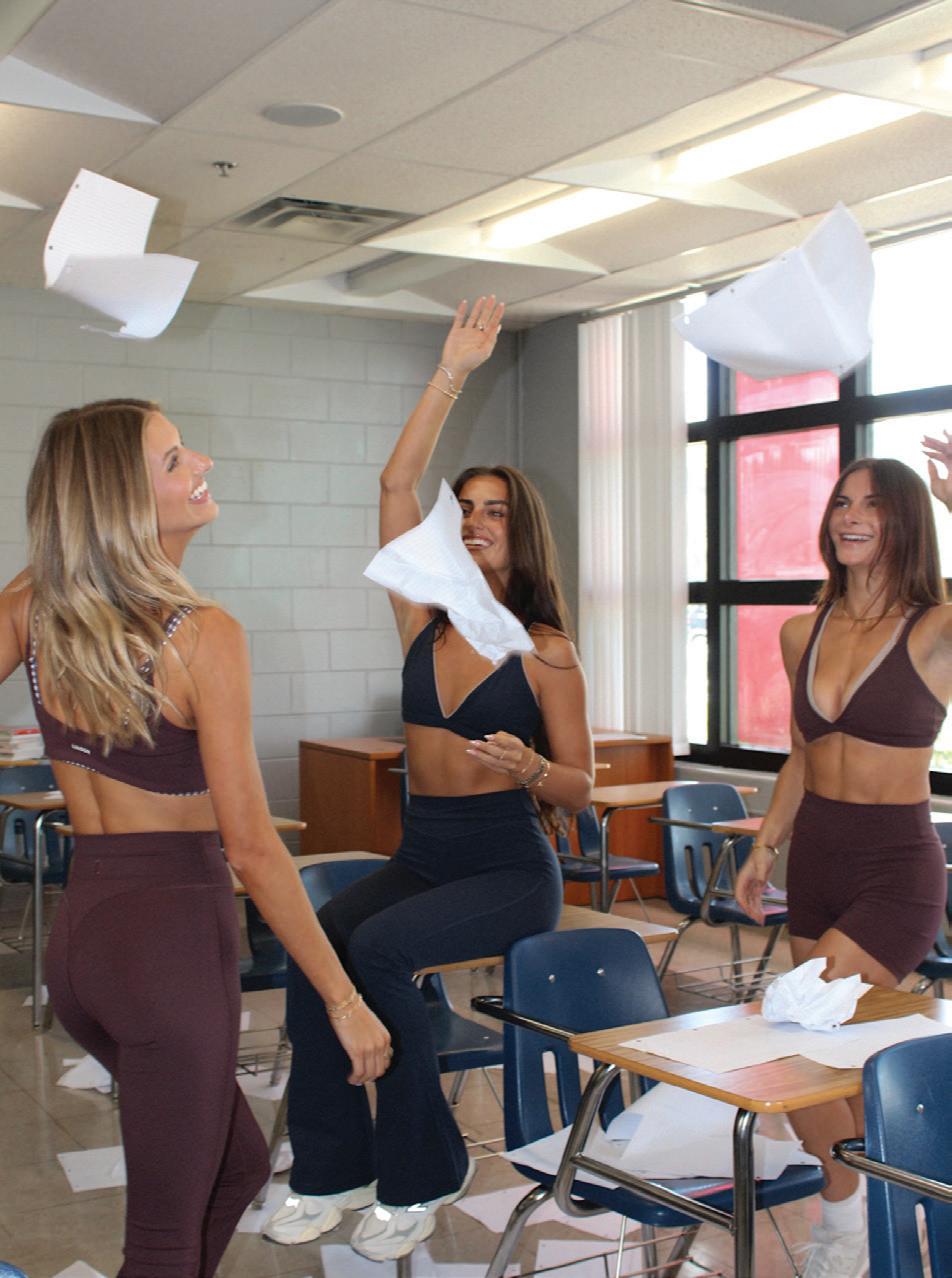
placements—the celebs are just organically wearing our products, which is incredible to see,” she said.
Transitioning from the influencer space to the entrepreneurial space has been an incredibly rewarding process for Avara. “Girls used to come up to me and say, ‘I love your content.’ Now they come up and say, ‘I love Liaison.’ That shift has been one of the most meaningful parts of this journey,” she said.
Things are just getting started for Avara
When designing one of Liaison’s recent collections, “After Class,” Avara pulled inspiration from the nostalgic feeling of going back to school. Since many of Liaison’s customers have closed that chapter of their lives, she wanted to create a campaign that captured that sense of nostalgia in a more relatable way. The collection features a variety of timeless and versatile pieces, with a photoshoot capturing the vintage, back-toschool feel Avara aspired for.
Avara recently got engaged herself, and once she told her close friends and family, she direct messaged over 20 of her top customers before posting the news online. After building relationships with her customers for years, it felt natural for Avara to include them in this special moment. “It’s little things like that that remind me why I love what I do; it is a real connection, not just a brand-customer relationship,” she said.
As the year wraps up, Avara is especially excited about an upcoming collaboration with “The Bachelor” alum Kelsey Anderson. “We’ve been working closely with her over the past eight months to bring her collection to life,” she shared. “It’s been such a fun process seeing her style and vision come together through the Liaison lens.”
Looking ahead to 2026, Avara will be opening a new Liaison office in Tampa, Florida, and already has in-person activations and events planned in the community, which she credits as a core part of the brand’s growth. “It is going to be an exciting new chapter for the brand,” she said.
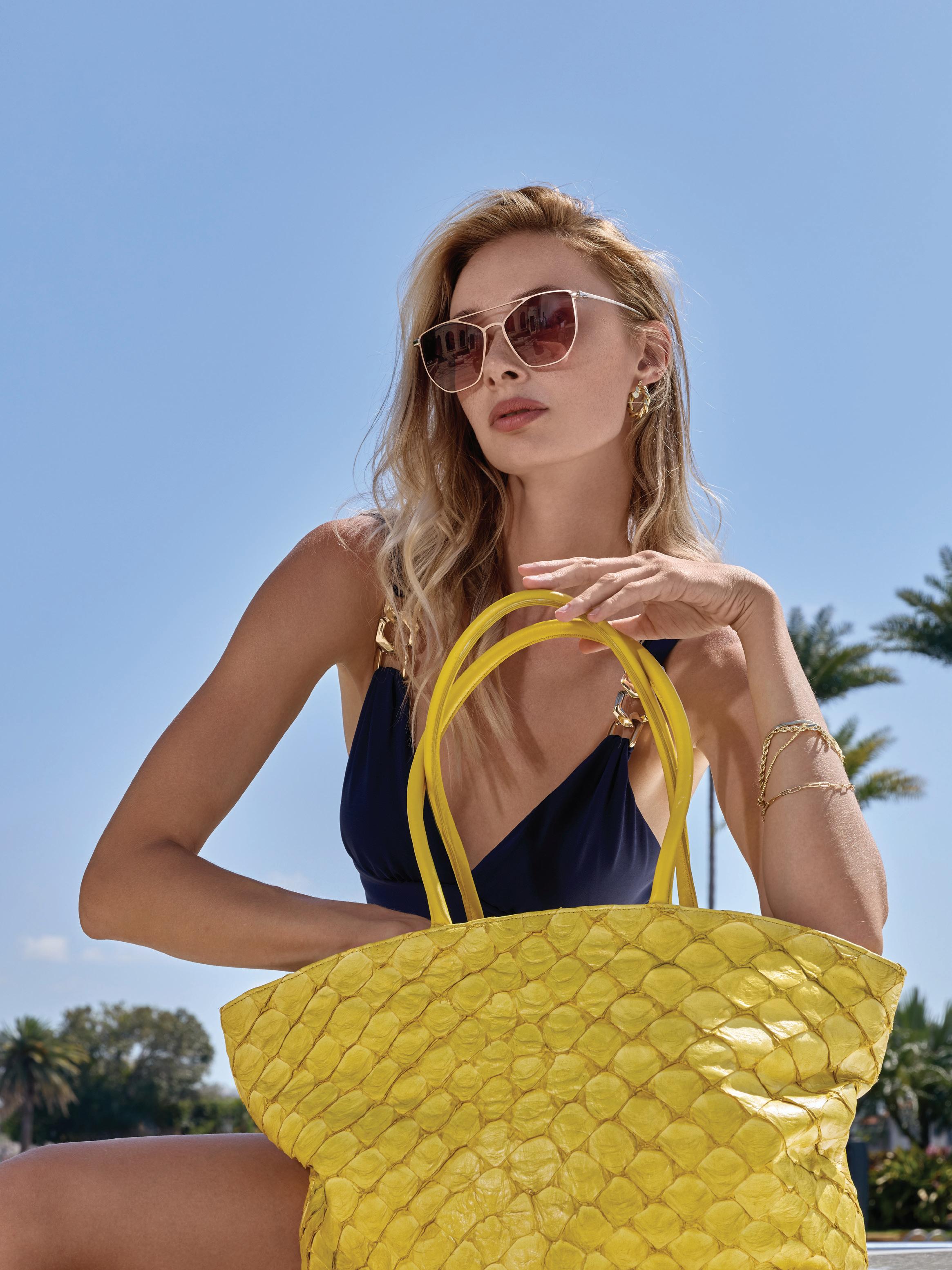
Pick up a Piper & Skye bag and you’ll understand the appeal immediately. The leather has weight yet still yields when pressed, the texture shifts subtly in the light, and every aspect of the design feels deliberate. It’s understated, but it commands attention.
The brand celebrates its 10th anniversary this year, marking a full decade since Joanna MacDonald decided to build a company that views luxury as something earned through respect, not excess. In 2015, she was working in human resources for an agricultural manufacturing company—not in fashion. That experience taught her about supply chains, waste reduction, process improvement, operational efficiency, the true cost of goods and the importance of prioritizing quality.
Later, while studying at the London College of Fashion, she began to think about how those lessons could transform the way we create beautiful things. “I wanted to make something people would love,” she said, “but only if it could be done responsibly.”
Piper & Skye’s first collection featured small, simple silhouettes in muted tones, but the reaction was immediate. Editors noticed the texture; customers noticed the feel. There was a sense of discovery in the way the leather caught the light, feeling both refined and natural. That became the signature: luxury that whispers, tactile materials that bring a smile to the wearer and materials that stand out.
Her initial solution was unconventional: pirarucu leather, made from the skin of a massive Amazonian fish that serves as a staple in South America. The meat is eaten; the hides become waste. Through a long-standing partnership with Nova Kaeru—a tannery known for its plant-based process— those hides became supple, durable leather with a quiet, water-like sheen. Each hide is traceable and certified by the Brazilian Institute of Environment and Renewable Natural Resources (IBAMA) and the Convention on International Trade in Endangered Species of Wild Fauna and Flora (CITES), ensuring that every bag supports the communities catching the fish and protects their ecosystem.
The bags are currently handmade by artisans at the brand’s New Jersey workshop, with plans to expand production to a second facility on Long Island. Craftspeople cut and stitch by hand, and production runs remain intentionally small to reduce waste. Colors range from soft neutrals such as clay white, “Piper Pink” and cognac brown to richer shades, such as cobalt blue, lipstick red and canary orange. Each bag is designed to last and age gracefully, passed down through generations the way fine leather should be.
Over the years, MacDonald has built an internal network of craftspeople, tanneries and suppliers who understand the brand’s slower rhythm. Some have been with her since those first prototypes. The collaboration between designer and maker is deeply personal, built on mutual respect rather than scale. “Every person in our process matters. That’s how the product gets its soul,” she said. It’s no wonder the brand’s tagline reads, “We Love What We’re Made Of.”
Piper & Skye now works with other responsible materials, including wild American alligator and even invasive species like the Florida python. MacDonald calls it “designing with respect.” Her goal isn’t to chase novelty, but to keep finding innovative ways to use what the planet already gives us.
The company’s ethics reach beyond its studio. Piper & Skye’s commitment to responsible design has earned the brand the Butterfly Mark from Positive Luxury—a certification awarded only to companies that meet the highest standards
for environmental and social impact. That same philosophy of care and accountability extends beyond materials into community, inspiring MacDonald to create Safe Transitions, a nonprofit helping women and children—many leaving shelters after violence or trafficking—move into permanent homes.
If you ask MacDonald what matters most, she talks about endurance and values. Ten years in, the company is still growing slowly, relying on word of mouth and repeat customers who appreciate that its values are as solid as its stitching. Hold one of the bags, and it makes sense: respect, responsibility and community.
The surface of each Piper & Skye handbag features subtle irregularities that feel human—the kind you only get from craft, not mass production. “We are all perfectly imperfect,” MacDonald said. “We honor the beauty marks of nature.” There’s no heavy branding, no performative minimalism— just clarity.
Looking ahead, MacDonald plans to strengthen partnerships with her Amazonian suppliers, expand the brand’s philanthropic efforts and continue exploring the ongoing evolution of innovative materials. “The world doesn’t need more things,” she said. “It needs better ones.”
Piper & Skye isn’t chasing scale or speed. Its success has come from patience—from a belief that integrity can be just as magnetic as status. Ten years in, the brand’s promise remains simple: create with care, mean more and let quality do the talking.





Bringing you the latest breakthroughs in software, I.T. and fashion technology. From creative solutions to insights from experts, we are the source for all things fashion tech.

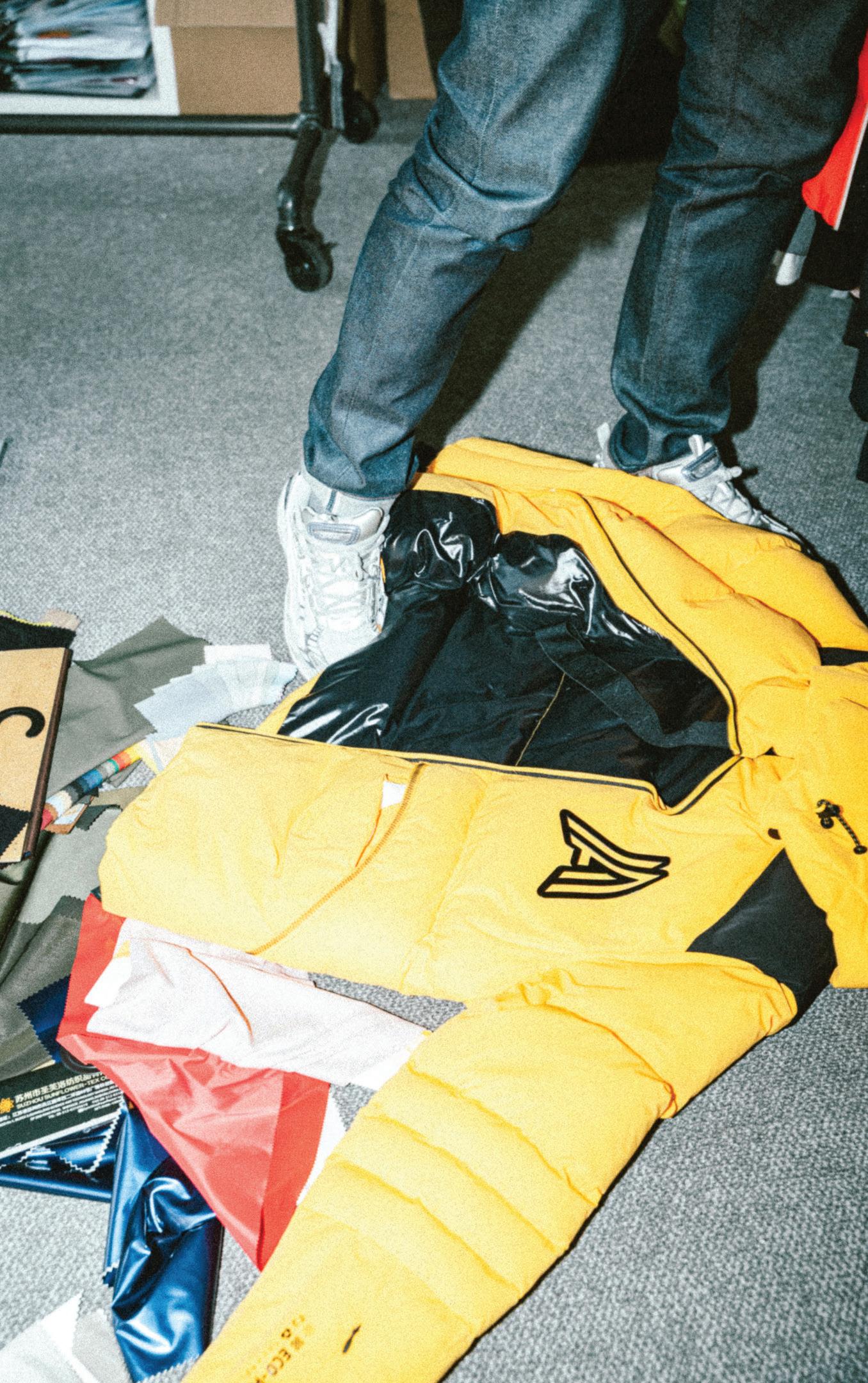
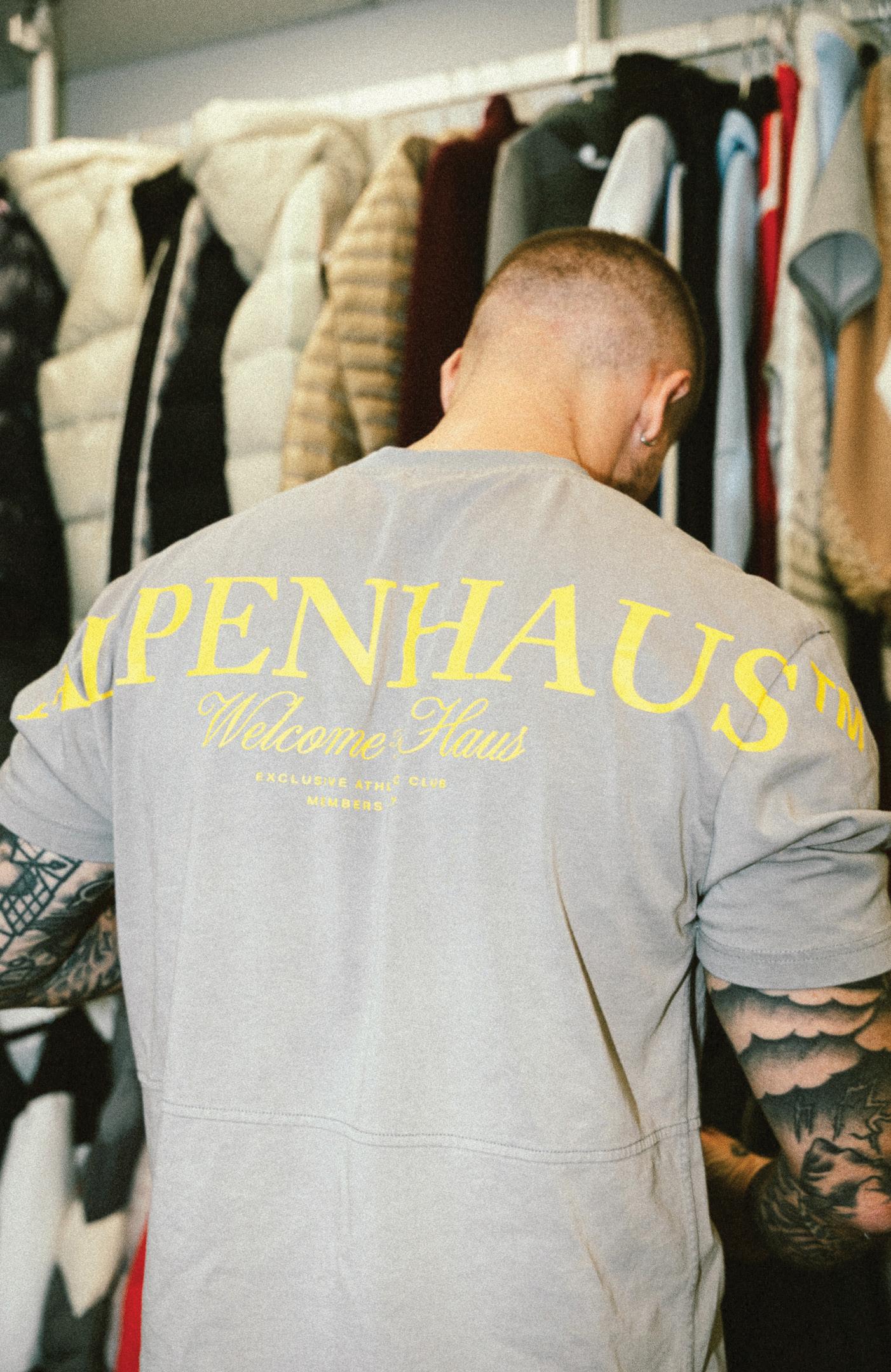







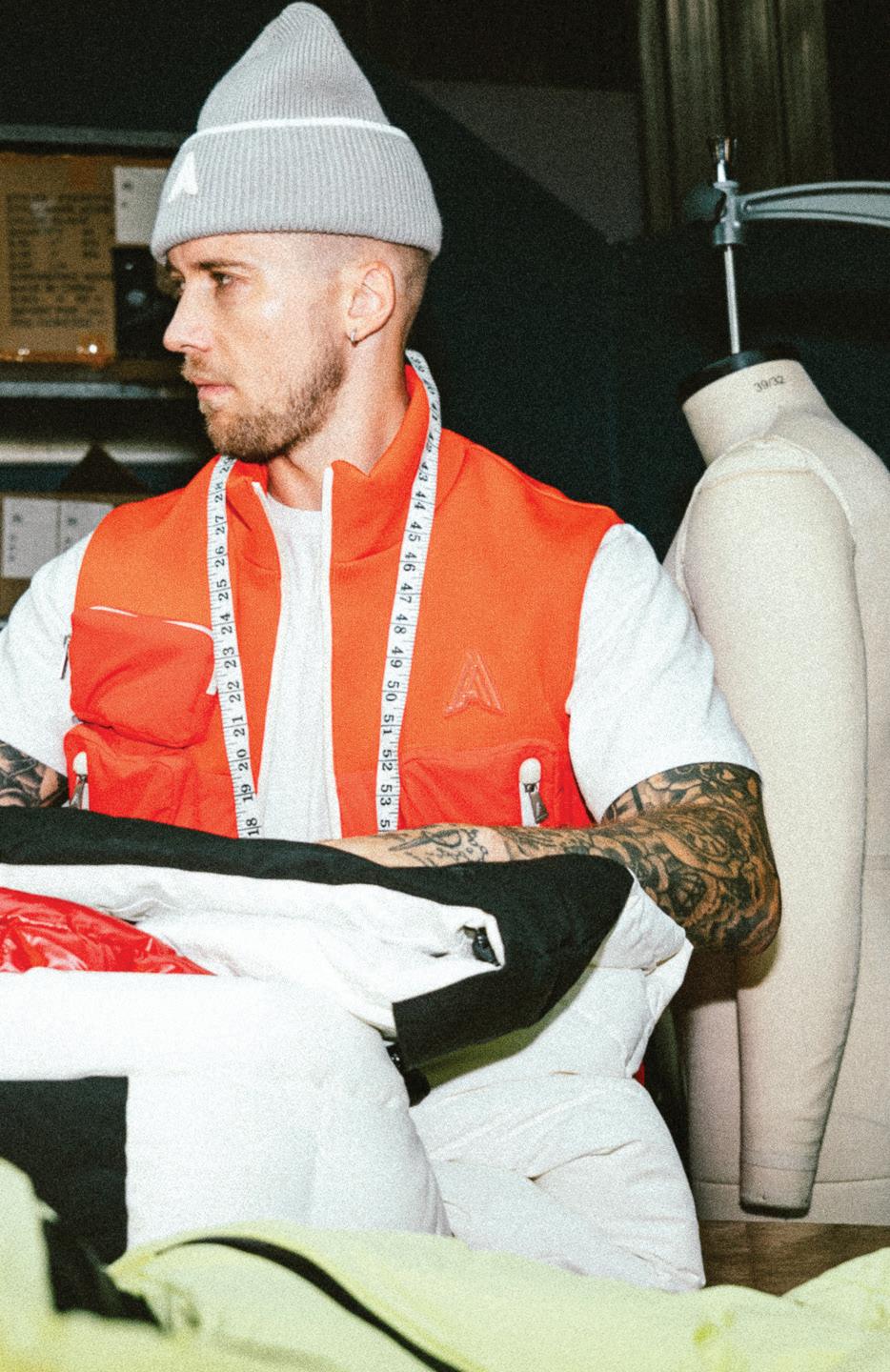

A newcomer to the industry, Alpenhaus is fast establishing itself as a name to know. As part of the Thread Collective family, home to powerhouse labels like Psycho Bunny, Hunter and Scotch & Soda, the brand sits in good company. Though just over a year old, Alpenhaus seamlessly blends fashion and function, creating smart luxury apparel and accessories at accessible price points.
At the helm is founder and creative director Alan Pivovar, whose vision defines the brand’s ethos of precision, performance and style. Growing up near the German Alps and trained in engineering, Pivovar infuses each design with meticulous attention to detail and functionality. His instinct for what’s next drives every aspect of Alpenhaus—from product development to creative direction and brand storytelling. Few are doing what he’s doing, and certainly not with this level of sophistication.
While outerwear was Alpenhaus’ entry point into fashion, the brand is rapidly expanding into a full-fledged lifestyle label. Its latest Fall/Winter ’25 collection showcases innovative outerwear and convertible designs that merge adaptability with elevated aesthetics. Alpenhaus rivals legacy outerwear brands in both quality and design yet is offered at a more compelling price point. Each piece reflects the brand’s core values of sustainability and longevity.

For Alpenhaus, sustainability isn’t just a buzzword; it’s a commitment. The brand avoids all animal-derived materials, instead pioneering eco-puff insulation, a sustainable, down-alternative fill that mimics the warmth and softness of real down using recycled and partially recycled materials. Every product is made to perform, endure and minimize environmental impact. In addition to this, the brand utilizes a personalized thermal experience index to guide customers in selecting the right apparel and accessories for their environment and activity.
Alpenhaus’ design philosophy is about quiet performance, where innovation never overshadows elegance. Every piece is infused with functionality, from water-repellent shells and breathable membranes to thermal protection (garments that protect from 0°C down to -30°C) and technical features like integrated powder-ski skirts, hidden straps or a lens wipe cloth for the slopes. The performance is there—fully integrated yet discreet—built to serve the wearer without defining the look. It’s this balance of purpose and poise that sets Alpenhaus apart.


Though still young, Alpenhaus is already making remarkable progress. With eyes set on North American expansion and global visibility, goals initially slated for 2028 are already in motion for 2026, proof that this brand isn’t just keeping pace—it’s setting it.

Sportswear brand Hoka recently collaborated with Haven, a Canadian-based technical apparel label known for its elevated utility design and commitment to functional innovation. Together, the two brands unveiled a bold reinterpretation of the Stinson Evo. This is the first time the silhouette features Gore-Tex, marking a milestone moment that blends performance and lifestyle in a new and exciting way.
“We wanted to create something that lives naturally between the outdoors and the city,” said Arthur Chmielewski, Haven co-founder and creative director. “We set out to create a design that reflects our lifestyle and environment— refined yet rooted in technical capability and craftsmanship. It performs in the toughest conditions while remaining elevated and versatile in any setting.”
The Haven x Hoka Stinson Evo GTX stays true to Haven’s modern utilitarian approach, featuring clean lines, tonal color palettes and a mix of premium technical materials. Nubuck and suede textures are paired with durable ripstop, bonded overlays and a waterproof yet breathable GoreTex membrane. Hoka’s signature cushioning and zero gravity midsole with adaptive tuning offer lightweight comfort and stability for both daily wear and outdoor movement.
“Collaborating with the Haven has been a true masterclass in fusing contemporary craftsmanship and technical innovation,” said Thomas Cykana, senior director of global collaborations at Hoka. “The team’s uncompromising vision and inimitable taste is undeniable. This project reflects our shared obsession of intentional objects and refined design rooted in modern application.”
The result is a product that goes beyond performance. The Stinson Evo GTX offers a design-forward solution for cold, wet and unpredictable conditions. It was created with commuters, travelers and everyday explorers in mind—people who value comfort and durability without compromising style.

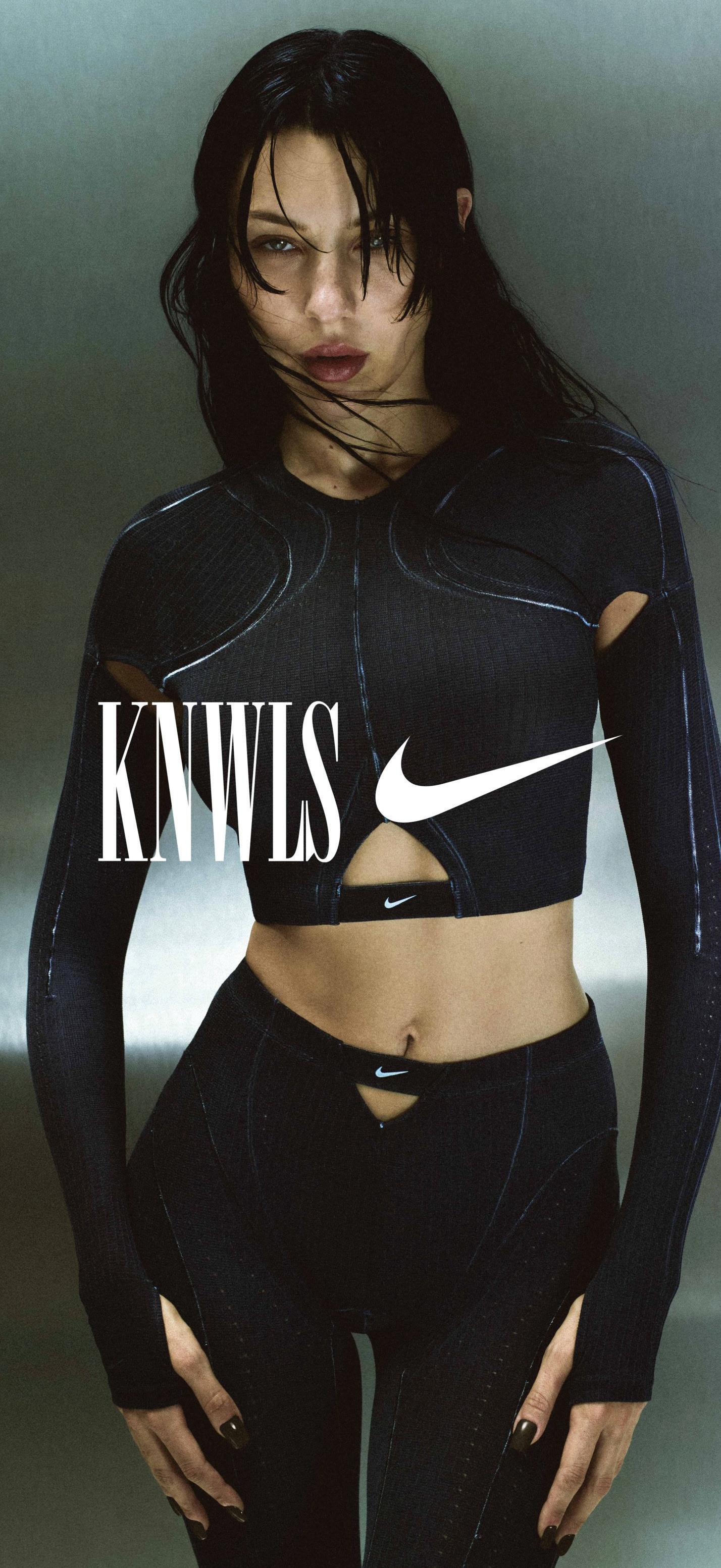
Whether on the track or the street, at the club or the gym, the new KNWLS x Nike collection embraces and enhances the female athlete’s every move.
The eight-piece KNWLS Nike collection is a complete wardrobe offering for women, infusing athleticism, elegance and avant-garde fashion into a suit of high-femme armor that celebrates grace, power and fearless sensuality.
“To me, and I think to most women, sportswear is so transitional. I want to go play badminton wearing something practical and comfortable for the sport but also feel attractive and reflective of my style,” said Charlotte Knowles, co-founder, KNWLS. “The idea that you could even wear these pieces to the club after a run, that’s where we were coming from when designing the collection.”
At the heart of the collection is the Scythe corset, inspired by the Nike Fe/Nom Flyknit sports bra and constructed using the same yarns as Nike Flyknit footwear, marking the fi rst such use of the iconic technology. With an exaggerated dip at the hem, adjustable hook-and-eye closures, laceup detailing and a back zipper for ease, the corset represents the collection’s central ethos: elevating time-honored craft with technical innovation and athletic elegance.
“For this collection, we wanted to use Nike innovations in new ways to create timeless, appealing sportswear for women,” said Knowles. “We used Flyknit sneaker technology to create a structured corset and developed fully-fashioned knitwear tops and leggings. And for the Air Max Muse, we created a bespoke molded TPU [thermoplastic polyurethane] toe reminiscent of our Raptor boots, resulting in a completely new trainer silhouette.”
The KNWLS x Nike collection includes a corset, twinset, tops, pant and bag alongside an exclusive expression of the futuristic Nike Air Max Muse.
The collection comes to life through a campaign featuring Nike athlete Imani-Lara Lansiquot, model Soo Joo Park, contortionist-dancer Evgenia Nirka, and artists Crystallmess and VTSS— each embodying the diversity and prowess of the KNWLS x Nike heroine.












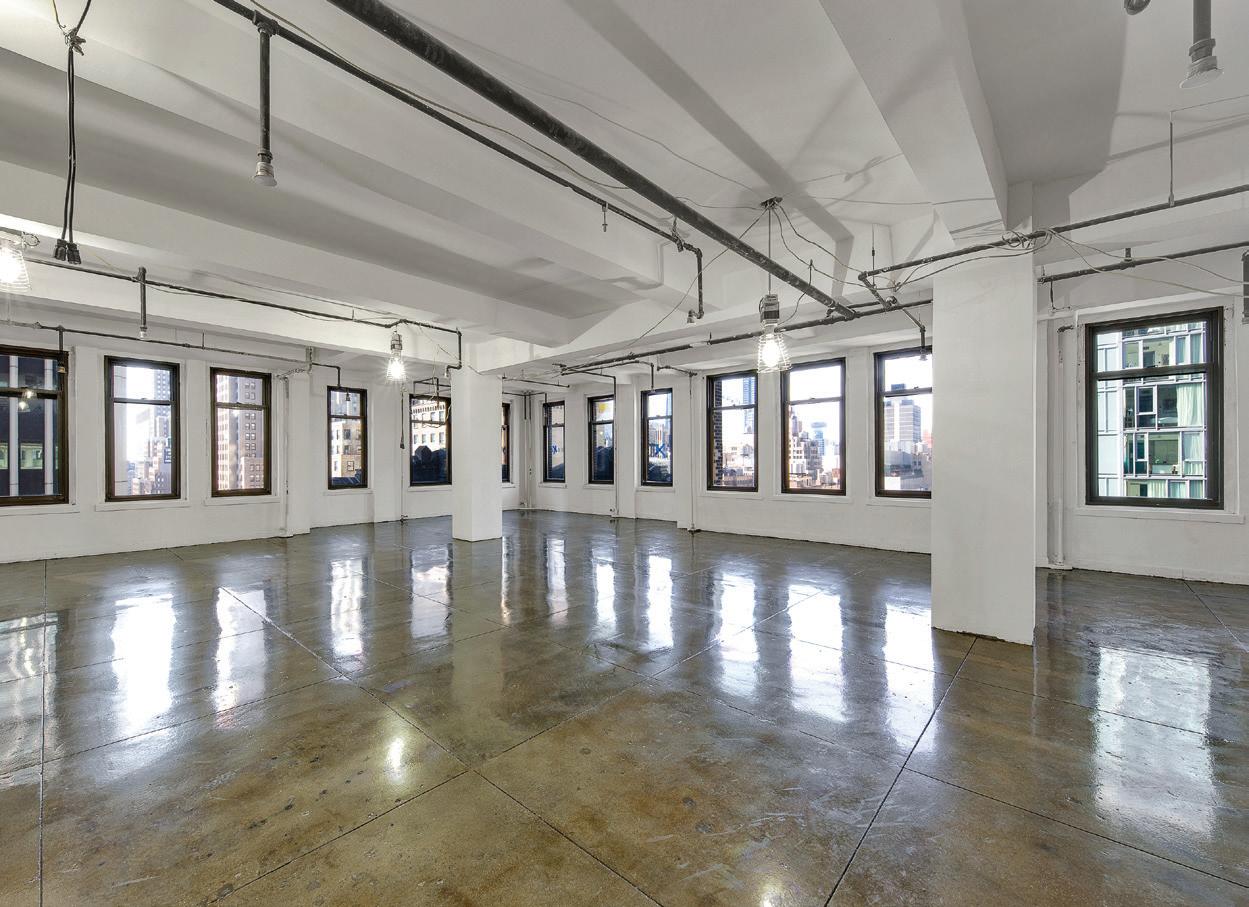

Debra Hazel Communications
North Las Vegas, Nevada 201-618-5247
They’re here—whichever holiday you celebrate at year-end, now is the time to visit some of the new stores, restaurants and more around town. Have a happy, healthy and profitable holiday, and see you in 2026.
All About Apparel and Accessories
In a move to expand its direct-to-consumer business, womenswear brand Rebecca Taylor has opened a flagship boutique at 123 Watts St. in Tribeca. The New Zealand-born designer, known for a romantic style, also has boutiques in Japan. Alice + Olivia has expanded and reopened its store at 755 Madison Ave. Retrofête has reopened its recently redesigned flagship at 99 Spring St. and debuted a shop at 115 NE 41st St. in Miami’s Design District.
To Your Health and Beauty
Five Iron Golf will make its Brooklyn debut, signing a lease for more than 15,856 square feet at 25 Kent Ave. in Williamsburg. Expected to open fall 2026, the flagship venue will feature 13 Trackman simulators powered by Five Iron’s multicamera technology, an expansive bar and kitchen, a 7,000-square-foot gym, and luxury locker and shower facilities. Joining Five Iron Golf at the building will be skincare brand Glowbar, with a nearly 2,300-square-foot studio.
Subaru of America unveiled the Subaru Connection Hub, the automaker’s first full redesign of its national retailer network since 2007. The new concept reimagines the automotive retail experience,
By Debra Hazel
transforming dealerships into immersive, hospitalitydriven spaces that strengthen customer relationships and community connections. Drawing inspiration from parks, pavilions and great plazas, the new Subaru Connection Hub concept reimagines the automotive retail experience, transforming dealerships into immersive, hospitality-driven spaces that strengthen customer relationships and community connections. The exterior architectural language creates a new expression that welcomes everyone into the showroom.
On the Jersey Side
Chase and Chipotle are coming to Prism Capital Partners’ ON3 in Clifton. Fronting Route 3, the bank branch and fast-casual restaurant mark the second and third retail tenants at the mixed-use campus (formerly the Hoffmann-La Roche North American headquarters), joining Starbucks, which opened in late 2024. In Teaneck, mixed-use development River Commons has completed its retail leasing with agreements with Déjà vu Bakery, children’s soccer franchise KidsUnited and healthcare provider Top Notch Performance Club. The leases total 8,361 square feet, bringing the retail portion of the project at 764 New Bridge Road to full occupancy, announced JLL.
Home Sweet Home
Ikea has acquired Nike’s former flagship at 529 Broadway to create a 53,000-square-foot mixeduse property with 25,000 square feet of retail on the first and second floors, topped by office space. Luxury appliance brand Fisher & Paykel reopened its New York Experience Center following a strategic design renovation. Located within The Architects & Designers Building at 150 E. 58th St. in Manhattan, the Experience Center allows visitors to explore an extensive selection of appliances showcased in a kitchen design that sits at the intersection of cuttingedge technology and performance.
RH announced the opening of RH Manhasset, The Gallery at Americana, a three-level, 19,000-squarefoot immersive retail experience that integrates luxury home furnishings collections with rare art, antiques and artifacts from across the globe. Conceptualized as a transparent, multilevel contemporary structure filled with fresh air and natural light, the gallery features a parchment-cream limestone exterior with bronze columns punctuated by sparking crystal lanterns. The Great Room’s 14foot ceilings are defined by rift European white oak beams and anchored by a grand fireplace in Venetian
plaster. Along the periphery, a classical arrangement of rooms presents RH Interiors, which pays homage to refined designs across the ages, and RH Modern, a tribute to 20th-century modernism.
Cousins Maine Lobster (CML), the fast-casual lobster roll brand, is expanding its California footprint with the launch of a new truck in at 440 N. Moorpark Road in Thousand Oaks. Nordstrom Local, the concept that provides services, pickups and returns, has come to Northern California with a location at 1919 Fillmore Street in San Francisco.
One Beverly Hills, the 17.5-acre urban oasis developed by Cain International, previewed its upcoming retail and dining partners, including Dolce & Gabbana, Casa Tua Cucina and Los Mochis. They mark the debut of the project’s 200,000-square-foot curated retail offering that will bring fashion, beauty, wellness and dining together in a singular destination. Italian jeweler Pomellato’s new flagship at 445 Rodeo Drive offers a stunning new façade to complement the gems within.
Southeast supermarket giant Publix is inching its way northward, planning a 50,000-square-foot store at Ashland Square in Northern Virginia’s Manassas. Sweetgreen, the mission-driven restaurant brand focused on healthy food at scale opened its first Arizona location at Scottsdale Quarter, located at 15323 N. Scottsdale Road near Phoenix. The Original Pancake House, a beloved family-owned dining destination, recently opened its newest Chicago location at 1124 W. Washington Boulevard, on the ground floor of the Hyatt House Chicago/ West Loop-Fulton Market.
Fitness International LLC announced the opening of its 15th Club Studio location— at Miami Worldcenter in downtown Miami. The 38,000-square-foot flagship facility brings together premium gym amenities, five boutique studio concepts and advanced recovery services. Construction documents have been completed, submitted and accepted for review by Salt River Pima-Maricopa Indian Community (in Arizona) for Pure Pickleball & Padel. The milestone marks the final step before construction begins on the 196,726-square-foot facility, which is expected to take about 15 months. The development seeks to claim the title of the largest indoor pickleball and padel facility in the world.

Founder and President
Dora L. International
By Dora Lau
Sustainability has been one of the most discussed topics in fashion for years, but in intimate apparel, it carries a unique significance. Our industry touches people on their skin, and it’s worn all day long. The fabrics, the fit and the feel of what we design impact comfort, confidence and even self-expression. The question we should all be asking is: Who drives sustainability, and how can we make a difference?
True progress happens when global sourcing and design companies take a leadership role. We need to believe that being part of this movement means bringing forward-thinking, earth-friendly solutions that check every box: quality, price and service.
Inspiration From Expo 2025: Innovation Meets Imagination
My recent trip to Japan for Expo 2025 reinforced just how limitless innovation can be when technology and sustainability work hand in hand. The event brought together companies and creators from around the world to showcase their visions of the future. The Japan Pavilion was especially inspiring, spotlighting new uses for algae-based materials that can replace plastics and textiles in imaginative ways. One exhibit featured nets made from algae to wrap gifts, while another displayed stools and furniture made entirely from 3D-printed algae compounds. Both were functional and beautiful.
I was particularly intrigued by bonded fabrics that could later be unbonded, allowing the textile to be reused. The concept redefines circular design, giving fabric a second life rather than an end point. Kimonos were also showcased as part of this reimagined craftsmanship, connecting Japan’s tradition of precision with sustainability and future technology.
The Italian Pavilion offered a fascinating cultural perspective on collaboration, showcasing the longstanding relationship between Italy and Japan that dates back to the 16th century, when a Japanese delegation visited Rome in 1585. The message was clear: innovation thrives on the exchange of ideas, materials and values. Seeing these examples made me think about the future of our industry and how we can merge ancient artistry with modern science.
Imagine a world where a woman’s body can be scanned, and a custom bra is created using a 3D printer, optimized for comfort, fit and sustainability.
In intimate apparel, sustainability begins with materials. The industry continues to make incredible strides with fabrics that are both functional and eco-friendly. What once sounded futuristic, like bras made from bamboo, recycled lace or organic cotton, is now a reality. Even bra cups can be lined with recycled spacer or double-knit materials that maintain structure and softness without sacrificing comfort. Some of the most exciting innovations come from unexpected sources, such as Umorfil, a collagen-infused fi ber made from fi sh scales that’s gentle on the skin and fully biodegradable, or biobased synthetics derived from natural ingredients that reduce reliance on petroleum.
Technology is also redefining how we design. One of the most transformative tools is 3D virtual sampling, which has evolved into a powerful sustainability solution by reducing waste and speeding up development. By allowing designers to visualize garments digitally, we eliminate much of the trial and error that once required multiple prototypes. This reduces water use, chemical dyes and material waste before a single physical sample is made. It’s a prime example of how innovation doesn’t just help the planet—it helps businesses operate smarter and faster.
Traditionally, sustainability has been defined by three pillars: people, planet and profit. But as I saw at Expo 2025, it’s time to add a fourth: research and development (R&D). Continuous R&D keeps sustainability dynamic, not static. It drives the search for new materials, new ways of manufacturing and new approaches to reduce waste without compromising quality.
Ultimately, sustainability is both a strategic advantage and a shared responsibility. According to Global Growth Insights, 40% of lingerie sales now happen through social media, where transparency and brand values matter deeply. Consumers want to align with companies that stand for something meaningful. For sourcing and design professionals, that means embedding sustainability into every stage of our work from fiber to finish. When we merge technical expertise, creative passion and deep respect for the planet, we create intimate apparel that truly feels good—inside and out.










Capital One® Commercial Banking offers you the financial services your business needs to succeed. You get customized solutions designed by a dedicated team of Consumer Products bankers with a combined track record of more than 75 years in the apparel, footwear, accessories and beauty sectors—and they’re backed by the full-services capabilities of a top 10 U.S. bank.*
Let us create a solution that matches your vision
capital.one/commercial


Hub International
frank.delucia@hubinternational.com 212-338-2395

By Frank Delucia
For decades, employee benefi ts have been treated as a fixed cost of doing business. Beyond regulatory changes, little has shifted in how most organizations design or communicate their programs. But today’s workforce demands a more thoughtful, humancentered approach—one that aligns with how employees actually live, work and make decisions.
Enter Hub’s workforce persona analysis, an approach rooted in marketing intelligence but repurposed to meet a far greater need: understanding people. By applying proven marketing strategies to workforce planning, organizations can uncover actionable insights that elevate the employee experience, strengthen engagement and make benefits spending more impactful.
In marketing, persona analysis helps brands craft personalized experiences for different customer groups. Hub has taken that same principle and applied it to employees, revealing what different segments of your workforce value most—and why. This shift toward personalization isn’t just “nice to have.” It can drive measurable outcomes: research shows that customized approaches can yield a 5% to 8% higher return on investment (ROI) than traditional, one-size-fits-all strategies.
If marketers use personas to deepen customer loyalty, why shouldn’t HR leaders use them to enhance employee relationships? Understanding the distinct needs of your workforce and acting on those insights informs smarter benefits design, stronger leadership connections, higher performance and lower turnover.
A workforce persona represents a group of employees with shared characteristics, goals and challenges. Personas might include new hires navigating their first benefits experience, single parents balancing competing priorities or emerging leaders stepping into management roles.
These personas come to life through data, both quantitative (age, tenure, job level) and qualitative (feedback from pulse surveys, focus groups or one-on-one discussions). Over time, the insights gained reveal how each group evolves throughout the employee life cycle, what they value most, and where employers can improve communication and support.
While demographics provide the snapshot, analytics provide the story. By layering data such as compensation trends, promotion history, or even access to healthy food or affordable housing, organizations gain a clearer view of what their employees experience every day. Hub’s approach goes beyond spreadsheets; we see people, not just patterns.
Consider three common workforce personas:
• The “Fresh Face” (ages 20-25): New to the workforce, often still on a parent’s health plan, and more focused on financial wellness tools or lifestyle benefits than on deductibles or copays
• The “Technical Hire” (ages 26-34): Career builders balancing early family life with increasing financial responsibility, seeking flexibility, childcare support and comprehensive coverage
• The “Late-Stage Hire” (ages 50 and up): Highly engaged, experienced employees who prioritize ease, stability and benefits that support long-term well-being and retirement readiness
Each group views benefits differently, and each requires a tailored strategy to feel seen, valued and supported.
Workforce persona analysis empowers organizations to design benefits programs that meet employees where they are and where they’re headed. When benefits feel relevant and responsive, engagement, productivity and retention naturally follow.
And thanks to advancements in analytics, employers no longer need the computing power of tech giants to make it happen. Today, the right data tools and expert guidance can help any organization design a benefits experience that reflects its people’s realities, from financial fragility to career ambitions.
The takeaway is clear: understanding your workforce isn’t a project, it’s a competitive advantage. Personalized, data-informed benefits don’t just improve employee experience; they position your organization as an employer of choice. At Hub International, our employee benefits specialists help employers of all sizes apply workforce persona insights to build programs that drive connection, loyalty and lasting success.
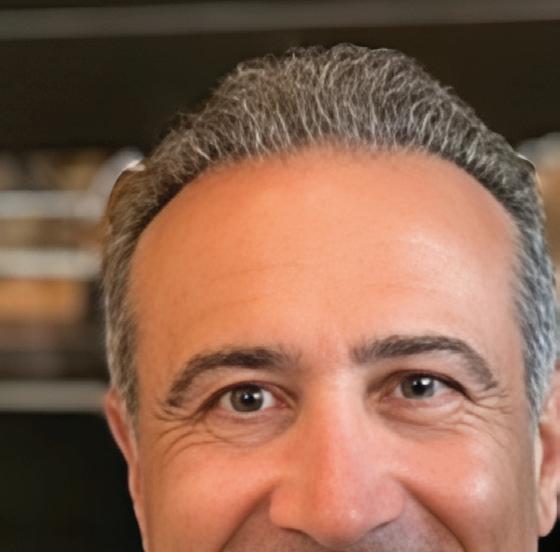


DAVID HAROUCHE
Founder, Chief Executive Officer, Chief Technology Officer, Multimedia Plus
By David Harouche
I recently joined the retail advisory board at the University of South Carolina, and it’s been eyeopening. Across the country, several universities are dedicating resources to educating the next generation of retail leaders, yet many in the industry remain unaware of the talent pipelines these programs create. In an industry constantly challenged with attracting and retaining talent, overlooking this pool is a missed opportunity.
Several schools have developed strong reputations for preparing students for retail careers. Programs at the University of Arizona, the University of Houston, Purdue University, Syracuse University and the Fashion Institute of Technology (FIT) offer specialized undergraduate degrees in retailing and consumer sciences. In New York, NYU Stern’s luxury and retail MBA, as well as programs at LIM College and Parsons School of Design, blend business, fashion and merchandising to prepare students for leadership roles.
These programs don’t just produce business majors who find themselves in retail. They graduate students who intentionally chose retail as a career path. They’re already immersed in the language of merchandising, consumer behavior, digital commerce, analytics and brand strategy. They understand the evolving retail landscape and are passionate about growing within it. That commitment makes them highly valuable to companies struggling to find employees who see retail as a long-term career.
The University of South Carolina (USC) stands out in this landscape. The USC College of Hospitality, Retail and Sport Management houses one of the most comprehensive four-year retail programs in the U.S. Students can pursue a Bachelor of Science in retailing, with specializations in fashion merchandising and digital innovations or retail management. The program combines a broad industry foundation with focused skill development based on career goals.
What truly sets USC apart is its integration of academic learning with real-world experience. Students are expected to complete internships and engage with industry through partnerships. The faculty includes both academic experts and industry professionals, and the curriculum benefits from ongoing input from the retail advisory board, which
I serve on alongside other industry leaders. This structure ensures that students graduate with skills that are current and immediately applicable.
USC’s program also benefits from being part of a college that includes hospitality and sport management. This interdisciplinary environment reinforces the importance of customer experience, which is a critical focus in today’s retail landscape. Selling products is no longer enough. Creating memorable, high-touch experiences is what drives loyalty. USC graduates enter the workforce with this mindset already ingrained.
Despite the strength of USC and other similar programs, many retailers still recruit mainly from general business schools or depend on traditional entry-level pipelines. This limits their ability to attract candidates who are already invested in retail. Partnering with schools like USC, FIT, LIM, Purdue, Arizona, Houston, Syracuse and NYU Stern opens the door to a motivated talent pool that brings energy, creativity and commitment at a time when retail needs all three.
My experience with USC has convinced me that more retailers should actively engage with university programs focused on retail. The investment these schools make in preparing students for the realities of the industry is impressive. Their graduates are ready to step into roles in buying, planning, merchandising, digital and operations with a level of preparation that’s rare among undergraduates.
Building a Smarter, Stronger Pipeline
Retail has always been about people. At a time when the industry is grappling with talent shortages, retention issues and the need to adapt quickly, we must take a more strategic approach to attracting talent. Collaborating with universities that specialize in retail is one of the smartest ways to do that. It allows companies to build relationships early, offer mentorship and create brand affinity among students already dedicated to the field.
USC may not be the first school that comes to mind for retail recruiting, but it should be. Its program is large, comprehensive and deeply connected to industry realities. By engaging with schools like USC and others across the country, retailers can build a sustainable talent pipeline. These students are not only prepared for the challenges ahead but passionate about solving them.
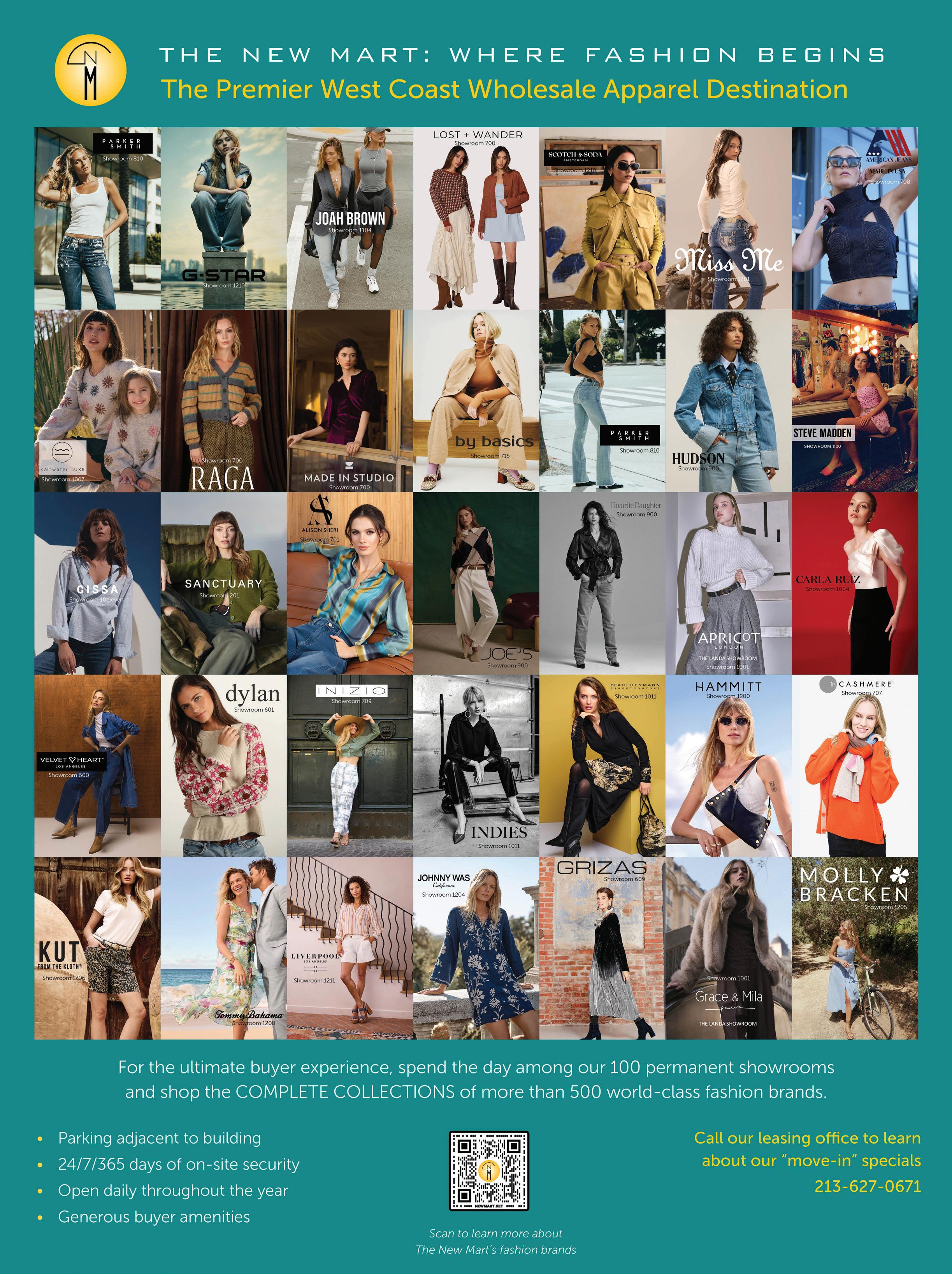


Davidoff Hutcher & Citron LLP
ck@dhclegal.com
646-428-3240
Like much in life, both the big picture and details matter in fashion contracts. But many fashion companies and designers pay too little attention to important details in negotiating fashion contracts. There are many reasons for that fact, including misplaced frugality, impatience and, at times, just plain laziness.
I write both to share a story about how I bailed a client out of a mistake made by their former lawyer and to pay tribute to that client.
Tricots St. Raphael Inc. was a successful sweater company known for its understated, elegant men’s products that would enhance any wardrobe. When I began to represent that company many years ago, it sold sweaters under the Tricots St. Raphael brand to Bloomingdale’s and other luxury retailers, and also through a licensee under the diffusion brand TSR to mid-tier retailers such as JCPenney.
The founder, head designer, president and driving force of Tricots St. Raphael was a wonderful woman named Cecile Platovsky. Cecile was super smart and had an infectious laugh, which I got to hear often. She was a pleasure to work with. Cecile taught me the importance of in-person communication. My office was then, as now, on Third Avenue between 39th and 40th streets. Cecile’s office was on 55th Street just east of Sixth Avenue. I preferred to talk about legal matters on the phone. Cecile would not have that if
By Charles Klein
an important issue required our attention. She always insisted that I come to her office. So off I would go in a taxi across 42nd Street and up Sixth Avenue. Cecile was absolutely right. The in-person meetings produced results that would not have happened on the phone, or today on a Zoom call.
This is what happened with the TSR business. Cecile decided, before I represented her company, to license the TSR brand and trademark to a respected wholesaler of men’s shirts and other apparel products under many well-known licensed brands. The idea was for the licensee to sell a collection of TSR apparel products, not just sweaters, to mid-tier retailers. Tricots gave the licensee many business and personnel assets to make this happen: a book of millions of dollars of TSR orders and its TSR designer and sales director. What a great deal for the licensee! The licensee only needed to pay customary earned royalties on sales and minimum royalties.
The TSR business went very poorly under the licensee despite the great launching pad it received. In fact, in less than a year, the licensee ran the TSR business into the ground. Fifty-eight percent of its sales went to offprice retailers at deep discounts. I have never forgotten that number.
The licensee had large minimum royalties to pay and very small sales to support those payments. What to do?
The licensee could have asked Cecile for some monetary relief. But they were an arrogant lot and didn’t do that.
Instead, the licensee told my client that it would not pay the minimum royalties owed and would only pay the royalties owed on actual sales of TSR products. They claimed that my client had sold products to their customers in breach of a provision in the license agreement that barred my client from selling products that were “competitive on the basis of price” with the licensee’s TSR products.
My client’s prior lawyer dropped the ball—it was unclear what “competitive” meant. Did that mean a 10% difference, a 20% difference or some other standard? And could my client’s end-of-season closeout prices for the main brand be compared to
the regular TSR prices? And could you compare my client’s prices for some totally unrelated brand to the TSR prices? The license agreement made none of this clear. Had I negotiated the license agreement I would have made this all clear.
I learned that my client had, in fact, used leftover yarn to make small quantities of end-of-season sweaters under a totally different brand, which it sold to some of the licensee’s retail customers at prices that were not far off from its regular TSR prices. As a result of the lack of clarity in the license agreement, the licensee was able to argue that these sales were a breach of the agreement on my client’s part.
Here is what I did. I put the licensee in default for not paying their minimum royalties. When they didn’t pay the quarterly minimum royalty due, I accelerated all the minimum royalties due, as the license agreement permitted me to do, and sued the licensee for $600,000 plus interest and attorneys’ fees.
I argued that the licensee could not pick and choose to pay the royalties on sales but not the minimum royalties. We found a case that said exactly that. The licensee’s proper path, were there a serious, material breach of the agreement, was to terminate it. They didn’t choose to go down that road, probably because the breach they asserted was, at best, a minor one.
The court agreed with my position and granted my client summary judgment, without the need of a trial, for the $600,000 of minimum royalties we sought, plus interest and attorneys’ fees, and terminated the license agreement due to the licensee’s breach. A huge victory. I called Cecile. She was overjoyed.
Details mattered!
I also got a new client as a result of this victory. My client’s former TSR designer had become the designer for another sweater company. When they needed legal help, he told them to call me—he said everyone was afraid of me in the fashion industry. It was amusing to hear that. I went on to work with that other sweater company for many years.
A great result for my client and me.

Managing Partner and EVP, Beauty, Health and Wellness, 5WPR
The intersection of fashion, beauty and technology is no longer a distant future. It is a present-day reality transforming how brands connect with consumers and how consumers discover products and trends. At the center of this seismic shift is the rise of generative engine optimization (GEO), a strategy designed to ensure content visibility in the age of AI-driven discovery tools. As platforms like ChatGPT, Perplexity and Google’s Search Generative Experience (SGE) shape how people receive information, fashion and beauty marketers must adapt their strategies to thrive in this new landscape.
Why Traditional SEO Is No Longer Enough Traditional search engine optimization (SEO), built around keywords and backlinks, is giving way to a new set of priorities. GEO focuses on structuring content so that AI systems can easily parse, synthesize and recommend it in response to natural language queries. This shift has significant implications for fashion and beauty brands that rely heavily on visual appeal, influencer marketing and trend cycles. In today’s marketing environment, visibility in AI-generated results is just as important as a billboard in Times Square or a coveted mention in Vogue.
Strategic Brand Examples Leading the Charge Brands that succeed in this era will be those that invest in deeply informative, structured and contextrich content. Fenty Beauty offers a compelling example. From its 2017 launch with 40 foundation shades (now 50), Fenty disrupted norms by prioritizing
By Ilisa Wirgin
inclusivity and formulated content that resonated with diverse audiences. Its digital content, ranging from educational shadematching tools to social media tutorials, delivers authoritative, consumerfocused information that aligns with what AI systems value in recommendations. Fenty’s launch became the largest beauty brand debut in YouTube history, and within its first month, the brand achieved $72 million in earned media and over 132 million YouTube views.
Another example is the luxury fashion brand Gucci, which has embraced digital innovation not only in its campaigns but also in how it structures online content. Gucci’s virtual tryon and immersive digital experiences have made the brand highly discoverable on AIled platforms. Since March 2020, Gucci’s “Gucci Sneaker Garage” has allowed shoppers to virtually try on its Virtual 25 sneakers using augmented reality (AR) in the Gucci app and on platforms like Roblox and VRChat. Vogue Business highlights that luxury brands like Gucci are using AR for virtual styling and garment care education, signaling how structured AR content increases visibility and consumer engagement. Furthermore, according to L2, Gucci leads its luxury peers in search visibility for both branded and nonbranded terms due to its strategic content and ecommerce integration, resulting in unparalleled organic search rank and discovery potential. The integration of SEO and GEO principles into cohesive digital and content strategy offers a blueprint for modern fashion marketing rooted in structured, AIfriendly brand storytelling.
A PR Agency’s Perspective on GEO Strategy
PR professionals must now think of content as multifunctional. It must inspire journalists, engage consumers and inform AI systems. Teams must integrate GEO into client strategies across beauty and fashion verticals and align traditional media relations with AI-focused content development. It is key to work with clients to anticipate the questions their consumers are asking and to build narratives that answer them comprehensively. Whether it’s a skincare brand explaining the difference between AHAs and BHAs or a fashion label detailing its sustainable sourcing practices, the goal is the same: create content that is valuable, verifiable and AI-compatible.
This evolution in discovery is not limited to search engines alone. Platforms like TikTok and Instagram
are becoming hybrid search engines where users type queries like “best serum for dry skin” or “summer wedding guest outfit ideas.” AI models behind these platforms are increasingly determining which posts get shown. Brands that structure captions, alttext and video descriptions thoughtfully are more likely to surface in these micromoments of intentdriven discovery. The convergence of GEO with social content strategy is where the next competitive advantage lies.
We are also seeing a rise in AI-generated shopping experiences. Amazon and Shopify are experimenting with chat-based shopping assistants, where users describe what they want and receive curated results. If a fashion or beauty brand’s content is not structured in a way that these AI systems can interpret, that brand risks being left out of the conversation entirely. GEO ensures your content becomes part of the product recommendation engine that increasingly drives purchasing decisions.
To succeed in this AI-led future, brands must prioritize the quality and clarity of their content. This means investing in high-quality visuals that are properly tagged, descriptive copy that clearly answers consumer questions and backend structures that follow SEO best practices. GEO is not a replacement for good storytelling, but an enhancement that ensures your story reaches its full potential audience.
Marketers and communicators who embrace this new paradigm will not only help their brands stay visible but also build lasting trust and authority. The brands that understand how to shape their presence for both human and machine discovery are the ones that will lead the next era of fashion and beauty PR and marketing.
As the media landscape shifts, PR and marketing professionals have a unique opportunity to guide their clients through this transition. It is not just about being seen. It is about being surfaced by the right systems, at the right time, in the right context. GEO is more than a technical tool. It is a strategic imperative for the fashion and beauty industries as we enter the age of AI-led discovery.













CEO and Founder of 7thonline
By Max Ma
Retail is at an inflection point. The reign of the “one-size-fits-all” retail strategy is almost over. After decades of top-down merchandising and uniform planning cycles, consumer expectations and data capabilities have outgrown many planning, inventory and allocation models.
For too long, the industry has operated with an approach that relies on generalized data, blanket decisions backed by gut instinct, cumbersome Excel spreadsheets and blind hope that past mistakes won’t repeat. This model isn’t sustainable in a world of hyperfragmented consumer choices, volatile demand and expensive misallocation. Retailers are experiencing huge markdowns and wasted inventory, but that’s all changing.
The conventional retail buying cycle is fundamentally broken. Oftentimes, the exact bulky winter coats offered in blizzard-expecting Boston are available in sunny Los Angeles. This is the industry’s most critical blind spot.
Old-school reporting tools can show you big picture trends, but they often miss regional patterns. While algorithms and AI models are setting a new standard for data accuracy, the real success in fashion merchandising comes from combining creativity and industry expertise with nuanced AI insights. When retailers understand local markets and customers, they are able to anticipate trends, adjust and connect with shoppers wherever they are. AI enhances this art by analyzing data at scale and providing performance-based recommendations tailored to each stock-keeping unit (SKU), store and channel.
Artificial intelligence is reshaping retail by enabling levels of precision and personalization previously unattainable through purely manual efforts. By analyzing a wide range of real-time internal and external signals from performance metrics and weather, AI is enabling retailers to operate more like thousands of microbusinesses—scaling precision. This level of insight enables retailers to anticipate shifts in customer behavior at a micro level, empowering planners to fine-tune their strategies to reflect the specific preferences, behaviors and seasonal trends of local consumers.
By leveraging real-time data and predictive analytics,
retailers can shift from broad strategies to highly targeted, demand-driven operations that optimize turnover, minimize markdowns and protect profit margins. This tailored strategy ensures that retailers respond effectively to specific consumer demand and each market’s unique trends and seasonality with dynamic open-to-buy budgets and agile allocation strategies. Shift from static forecasting models to adaptive approaches that ensure relevance; the future of retail inventory management lies in precision mixed with human instinct.
The Art and Science: Turning AI Insight Into Localized Assortment
As retailers plan for 2026, the focus isn’t simply on managing inventory through a more targeted and accurate assortment—the technology exists to provide the precision needed to match products to demand at the store level. The impact is measurable.
Real success isn’t about replacing the human planner’s creative instinct, because it’s that intangibility that creates success, creativity and an exciting shopping experience. Better results come from enhancing that expertise with data. AI manages the complexity, giving planners and regional managers prescriptive, actionable insights. The data tells them what they should do next. Merchandisers, the experts who hold the brand’s DNA and deeply understand their community, apply their intuition to fine-tune assortments, ensuring they connect not just with a data profile, but with the specific needs of the local shopper.
As 2025 comes to a close, there’s a unique opportunity to move from a generic, centralized strategy to an efficient, demand-driven and datafocused way of working. This new strategy thrives by managing complexity at scale, seamlessly combining algorithmic speed with the nuanced interpretation of human planners.
Retailers need to stop viewing technology as a niche project for the IT team. It is now the essential tool for operational efficiency and survival in a volatile market. The future belongs to those who embrace the market’s complexity and manage their entire enterprise as a finely tuned network of thousands of responsive, demand-centric microbusinesses. It’s time to invest in the next generation of AI planning tools. That’s how we ensure every decision is made intelligently and profitably.

Chanukah is the Jewish eight-day, wintertime “festival of lights,” celebrated with a nightly menorah lighting, special prayers and fried foods. Chanukah begins Sunday evening, Dec. 14, 2025, and continues through Monday, Dec. 22, 2025.
What Is Chanukah?
The Hebrew word Chanukah means “dedication,” and is thus named because it celebrates the rededication of the Holy Temple.
In the second century BCE, the Holy Land was ruled by the Seleucids (Syrian-Greeks), who tried to force the people of Israel to accept Greek culture and beliefs instead of mitzvah observance and belief in G-d. Against all odds, a small band of faithful but poorly armed Jews, led by Judah the Maccabee, defeated one of the mightiest armies on earth, drove the Greeks from the land, reclaimed the Holy Temple in Jerusalem and rededicated it to the service of G-d.
When they sought to light the temple’s menorah, they found only a single cruse of olive oil that had escaped contamination by the Greeks. Miraculously, they lit the menorah, and the one-day supply of oil lasted for eight days, until new oil could be prepared under conditions of ritual purity.
To commemorate and publicize these miracles, the sages instituted the festival of Chanukah.
How Chanukah Is Observed
We light the menorah, adding an additional candle each night with the assistance of the shamash candle. On the first night, we light just one flame. On the second night, an additional flame is lit. By the eighth night of Chanukah, all eight lights are kindled.
By Rabbi David Laine
On Friday afternoon, care must be taken to light the menorah before Shabbat candles are lit, and the following evening they are to be kindled only after Shabbat has ended. Special blessings are recited.
A menorah is lit in every household and placed in a doorway or window. The menorah is also lit in synagogues and other public places. In recent years, thousands of jumbo menorahs have appeared in front of city halls and legislative buildings, as well as in malls and parks, all over the world.
Chanukah Foods
Since the Chanukah miracle involved oil, it is customary to eat foods that have been fried in oil, like latkes or donuts.
Chanukah Gelt
In today’s consumer-driven society, people tend to place great importance on giving Chanukah gifts. The tradition is to give Chanukah gelt—gifts of money—to children. The cash gifts teach them the importance of giving charity.
Dreidel: The Chanukah Game
On Chanukah, it is customary to play with a “dreidel,” a four-sided spinning top bearing the Hebrew letters nun, gimmel, hei and shin, an acronym for “nes gadol hayah sham,” which translates to “a great miracle happened there.” The game is usually played for a pot of coins, nuts or other stuff, which are won or lost based on which letter the dreidel lands when it is spun.
Chanukah’s Meaning for Us Today
Noting that one should spend time in close proximity to the Chanukah lights, the Previous Rebbe would say, “We must listen carefully to what the candles are saying.” So, what are the flickering flames telling us? Here are some messages:
1. Never be afraid to stand up for what’s right. Judah Maccabee and his band faced daunting odds, but that didn’t stop them. With a prayer on their lips and faith in their hearts, they entered the battle of their lives—and won. We can do the same.
2. Always increase in matters of goodness and Torah observance. Sure, a single flame was good enough for yesterday, but today needs to be even better.
3. A little light goes a long way. The Chanukah candles are lit as dusk is falling. Perched in
the doorway, they serve as a beacon for the darkening streets. No matter how dark it is outside, a candle of G - dly goodness can transform the darkness itself into light.
4. Take it to the streets. Chanukah is unique in that its primary mitzvah is observed in public. It’s not enough to be a Jew at heart, or even at home. Chanukah teaches us to shine outward into our surroundings with the G-dly glow of mitzvahs.
5. Don’t be ashamed to perform mitzvahs, or good deeds, even if you will feel different. Rather, be like a menorah, proudly proclaiming its radiant uniqueness for all to see.
Potato Latke Recipe
Ingredients:
• Half an onion
• 2 tablespoons oil
• 3 teaspoons kosher salt, divided
• 1.5 pounds Yukon Gold potatoes
• 2 eggs
• 1/4 cup flour
• Oil for frying
Yields 16 latkes
Directions:
1. Dice the onion and sauté it in 2 tablespoons of oil and 1 teaspoon of salt until golden.
2. Grate the potatoes by hand or in a food processor. Immediately transfer the grated potatoes to a bowl of cold water.
3. Place the eggs, flour, fried onion and 2 teaspoons of salt in a separate bowl. Drain the grated potato thoroughly, then add it to the remaining ingredients and mix immediately.
4. Heat 2-4 tablespoons of oil in a frying pan over medium heat. Test the oil by dropping a tiny bit of the mixture into the pan. When the oil sizzles upon contact, it is ready.
5. For uniform latkes, use either a 1/4 cup or 1/8 cup measuring cup to scoop the batter and gently drop it into the hot oil. Press down gently with the back of the measuring cup to flatten the mixture. Fry for 2-3 minutes, until golden, then flip the latkes and fry for an additional 1-2 minutes on the second side.
6. Repeat until all the mixture has been fried. (You will need to add more oil to the pan every couple of batches.)



















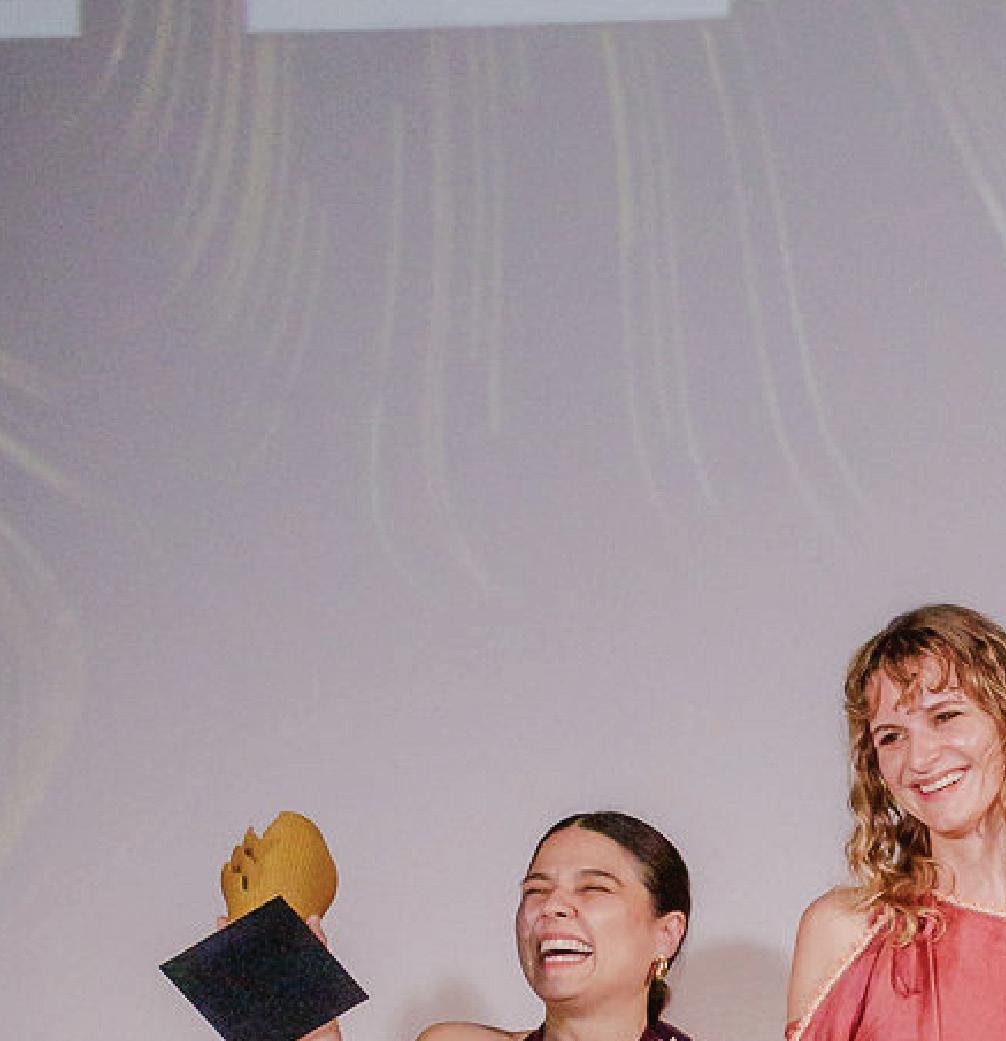
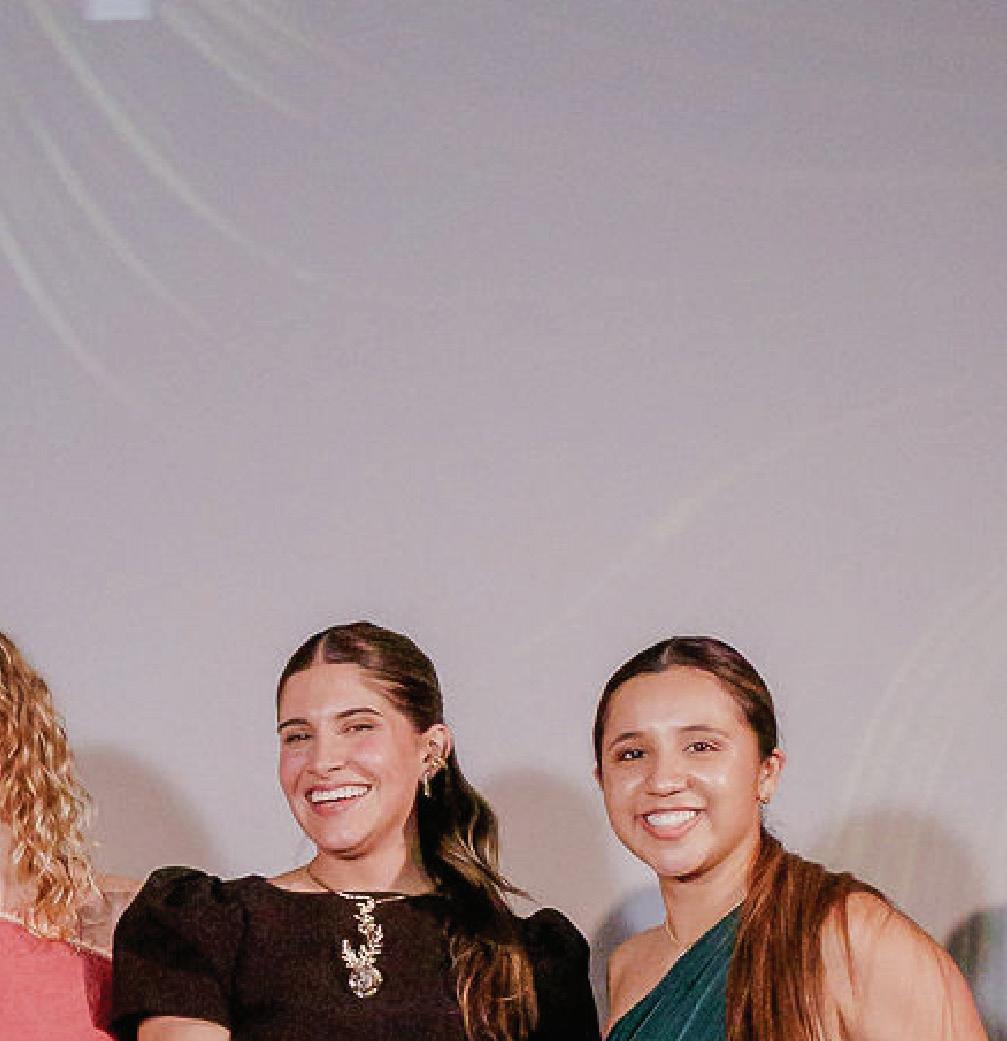
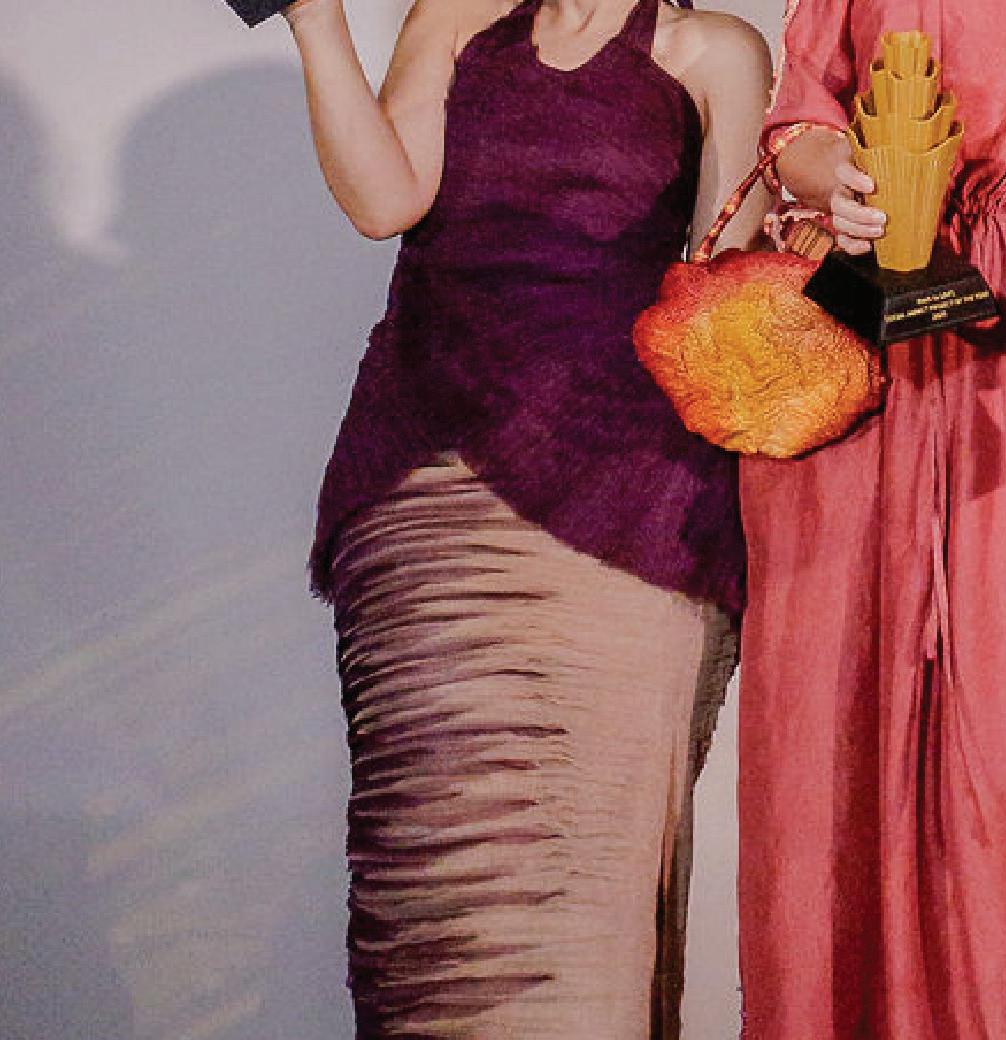

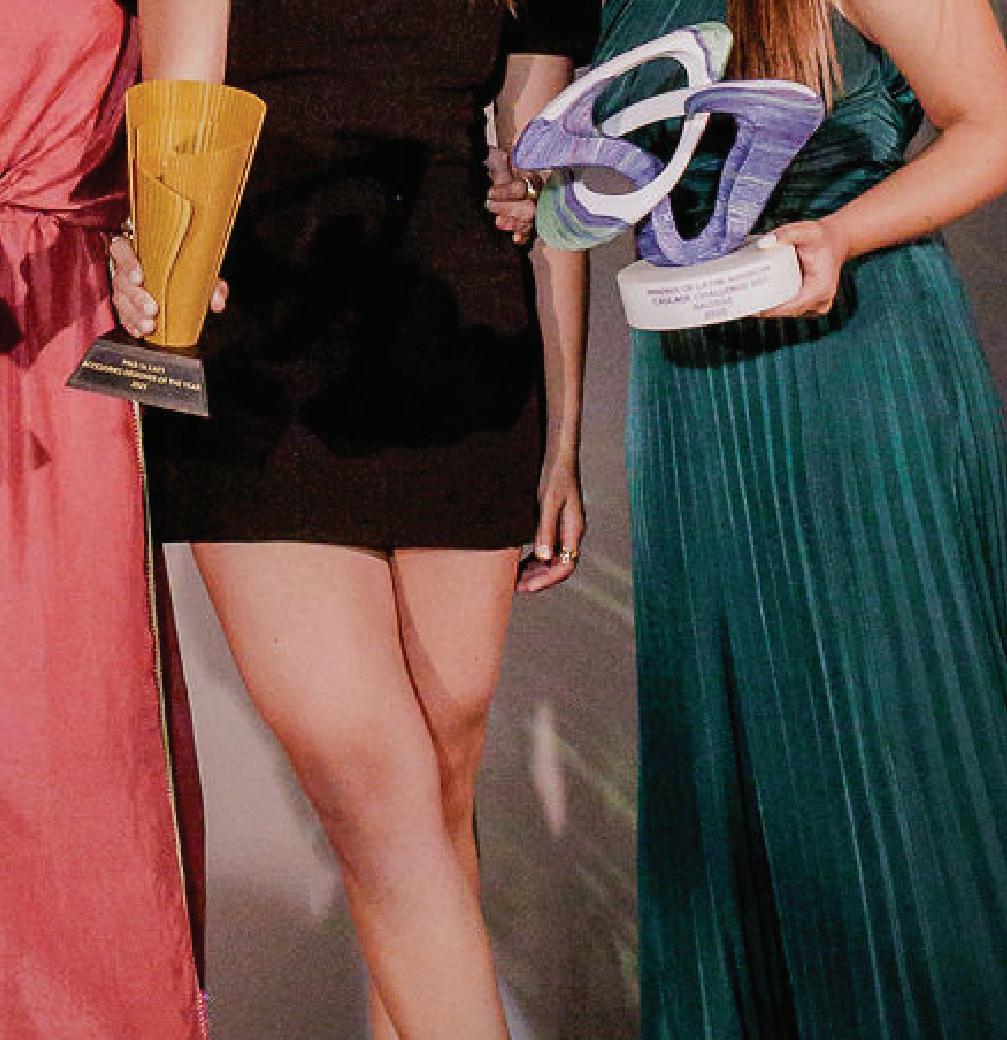

Latin American Fashion Summit (LAFS), the global platform committed to elevating Latin American fashion and design, returned to the Miami Design District for its most dynamic edition to date. Founded by Estefanía Lacayo and Samantha Tams, the summit once again took place at The Moore, convening influential retailers, editors, investors, founders and emerging designers from around the world.
This year’s program examined the forces shaping the future of fashion—from cross-border retail and artificial intelligence to sustainability, wellness and modern brand storytelling. Executives and partners from Moda Operandi, Shopbop, Revolve, Nordstrom,
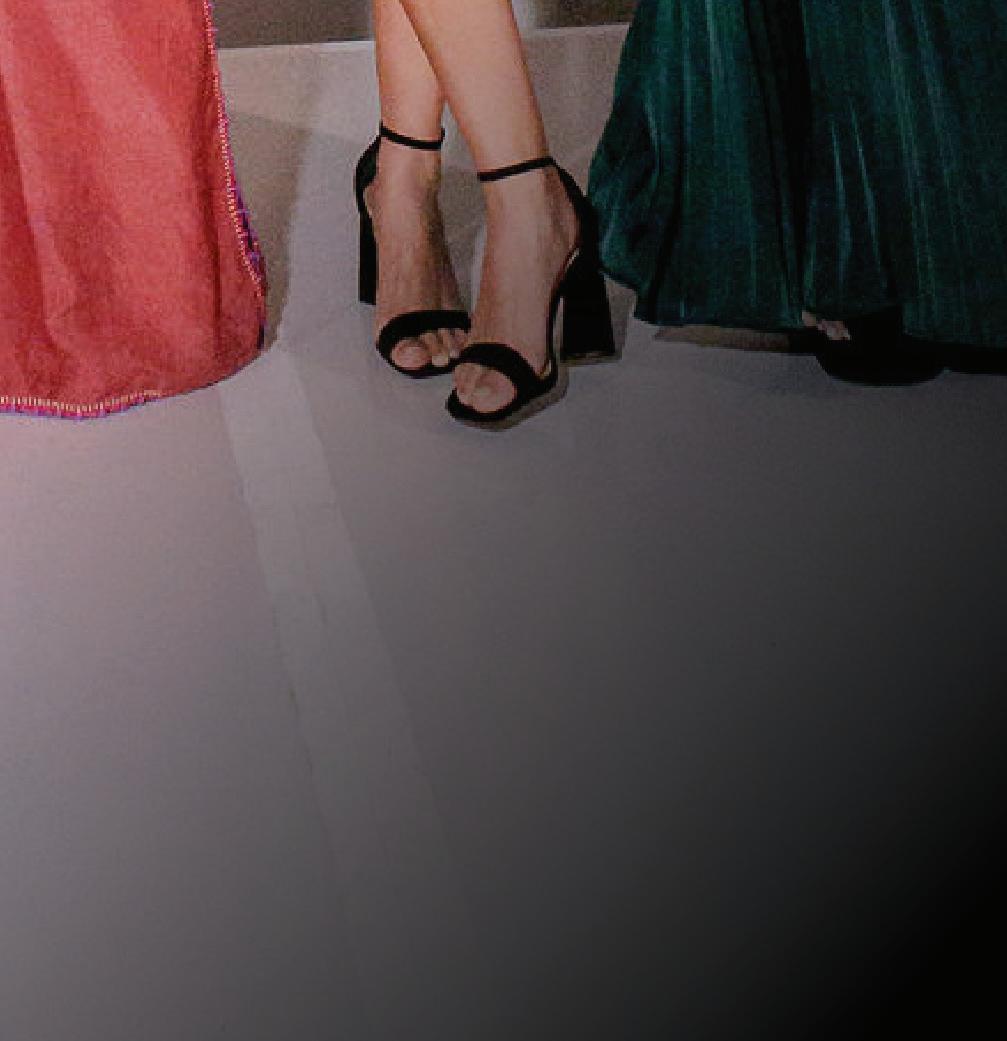

The Webster and Kering joined leading voices from across Latin America for three days of high-level programming, workshops and curated experiences.
Disney expanded its creative partnership with LAFS through a dedicated panel on storytelling in Latin America, a student meet-and-greet designed to inspire new talent and a museumstyle exhibition showcasing its legacy of creativity and cultural impact. Zacapa Rum also joined as an official partner throughout the summit, reinforcing its support of Latin American talent and strengthening the platform’s blend of luxury, culture and community.

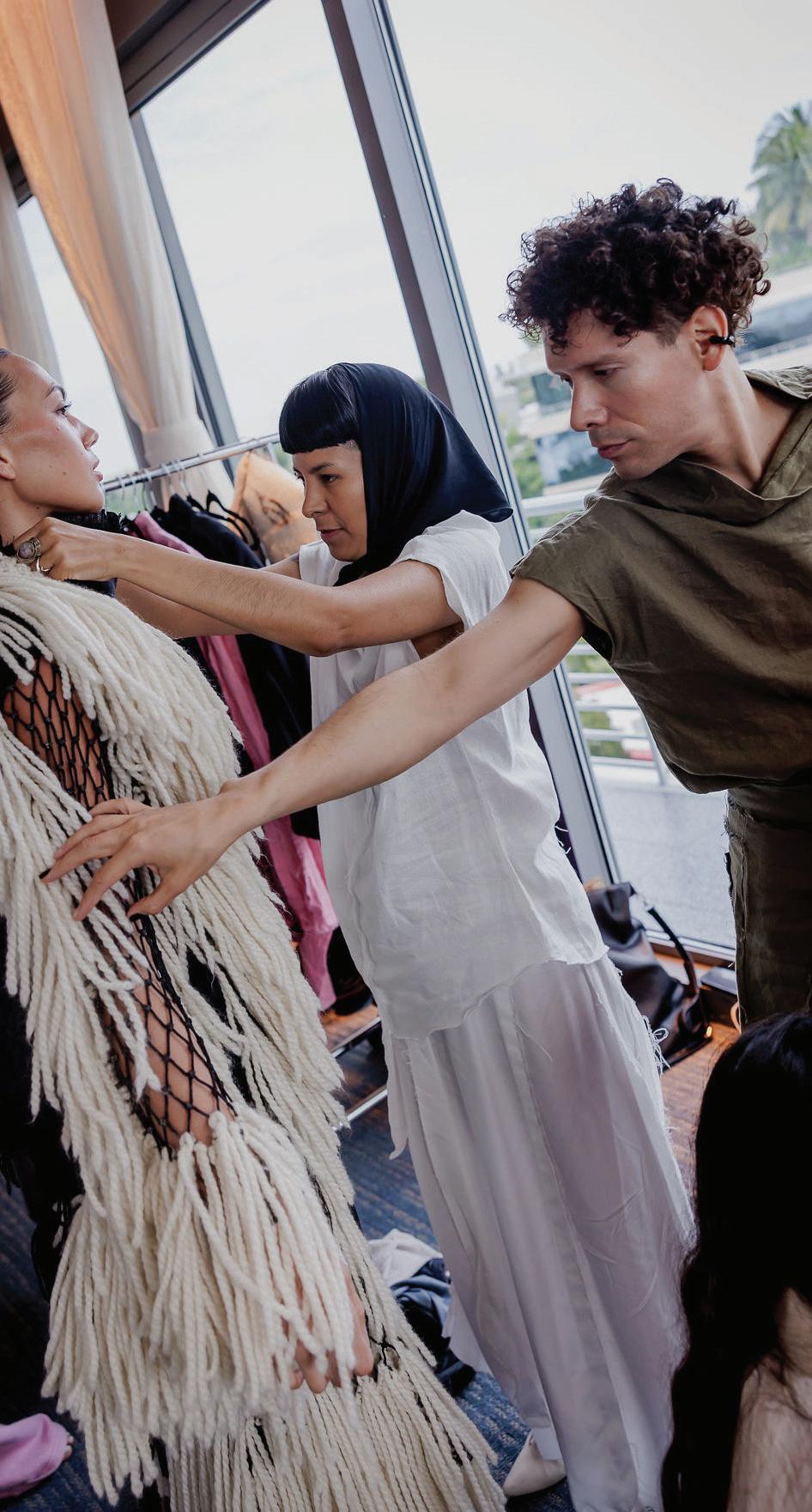
Natura Bissé, one of the summit’s leading sponsors, brought a robust wellness presence to the programming with exclusive master classes, bespoke treatments and conversations centered on longevity and beauty—cementing LAFS as an event that integrates fashion, well-being and innovation.
“LAFS Miami 2025 exceeded all of our expectations,” said Tams. “The energy, creativity and sense of community that filled every space was inspiring. It’s a privilege to witness how Latin American talent continues to shape global conversations in fashion, business and culture.”
A cornerstone of the summit, “Pitch to LAFS” once again served as a launchpad for emerging designers across Latin America. The competition, which includes mentorship, industry access and a prestige $10,000 grant along with a booth at Coterie, awarded three winners in the categories of Designer of the Year, Accessories Designer of the Year and Social Impact Project of the Year:
• Designer of the Year: Weise (Bolivia)
• Accessories Designer of the Year: La Torres (Argentina)
• Social Impact Project of the Year: Supernaturae (Mexico)


“I am incredibly proud of what we achieved with LAFS 2025,” shared Lacayo. “This year showed the power of community—what happens when we bring people together with intention. From the workshops and breakout sessions to the pop-up and panels, you could feel the collaboration and generosity everywhere. LAFS has always been about building bridges and expanding opportunities, and this edition was a beautiful reminder of that.”
The summit also introduced additional recognitions, including the Cascade Challenge—presented in partnership with Isabella Espinoza of Baobab—which honored Alquimia (Colombia); and the Visionary Award of the Year, awarded by Zacapa Rum to Patricia Bonaldi, founder and creative director of PatBo.
Open to the public, the LAFS pop-up showcased over 35 brands, offering designers valuable exposure to consumers, buyers, press and industry tastemakers. Participants included Hijas de Puka, Port de Bras, Pierinna Feoli, Curatoria, Studio Conchita, Supernaturae, La Torres, Weise, Renata Lozano, Casa Azucena, Pampa, Granado and more, representing a rich cross section of Latin American craftsmanship and contemporary design.
LAFS opened with a ribbon-cutting ceremony at Paradise Plaza, led by Lacayo and Tams alongside LAFS ambassadors. Day 1 programming emphasized wellness, innovation and business strategy, featuring sessions on longevity, the future consumer, aesthetic trends, AI creativity and wholesale strategy. A standout fireside chat with Shopbop’s buying team provided valuable insight into retail partnerships and brand positioning. The day concluded with a lively pop-up happy hour with Lalo Tequila, Maison Perrier and Bacan Guaro.
Day 2 expanded the conversation to storytelling, creativity and the evolving Latin American fashion landscape. Panels included Disney’s “Telling Stories Through Fashion,” the “Ask the Buyers” conversation with Moda Operandi and Nordstrom, and a forward-looking dialogue featuring Craig Robins of Dacra and multidisciplinary artist Harmony Korine. Granado Rio de Janeiro hosted a private media luncheon, Ser held a tastemaker lunch for key retailers and Foundrae offered an invite-only shopping experience at its boutique located in The Moore. The evening culminated in Natura Bissé’s rooftop cocktail celebration, featuring immersive beauty activations.
The final day centered around “Pitch to LAFS” at Mr. C Coconut Grove, followed by programming at The Moore, which featured forward-thinking conversations on creator culture, brand strategy and long-term creative vision. Speakers included Naeem Khan, Hassan Pierre, Tiffany Lopinsky of ShopMy, John Howard of Croissant and April Henning of Moda Operandi.
The summit closed with a celebratory ceremony at Temple House Miami Beach, where “Pitch to LAFS” winners and special honorees were formally recognized.
Continuing its mission to elevate Miami’s fashion industry onto the global stage, Mana Fashion Services announced its debut at Paris Fashion Week, spotlighting a curated selection of designers from its Biscayne Showroom.
Following the successful launch of its business-tobusiness Biscayne Showroom in Downtown Miami, Mana Fashion expanded its vision internationally by bringing several of its resident brands— including Ancora, Ania, Faith Connexion, Fortuna, Laura Escobar, Milo, Palmiers, Tathos and Touché—to Paris Fashion Week. Each brand embodies the spirit of creativity, craftsmanship and cross-cultural collaboration that defines Mana Fashion’s growing global platform.
Through this international showcase, Mana Fashion aimed to amplify brand visibility by connecting emerging and established designers with international buyers, media and tastemakers during one of the world’s most influential fashion moments. The initiative also reinforces Mana Fashion’s commitment to bridging the gap between Latin American, European and North American fashion markets.
“Being in Paris during such a pivotal fashion moment gave us a unique opportunity to connect with industry leaders and build relationships that will only strengthen over time. It was both exciting and humbling to see firsthand how our offering is wanted and valued on a global stage. The key takeaway from the week is that this is just the beginning—one of many activations to come,” said Matilda Kalaveshi, head of fashion at Mana Fashion Services. “This experience underscores Mana Fashion’s ability to elevate Biscayne Showroom brands and position Miami as a serious player in the global fashion ecosystem.”
From luxury resort wear to sustainable ready-to-wear and artisanal design, the participating brands offered a diverse and elevated perspective on contemporary fashion. The Paris debut highlighted the unique convergence of artistry, innovation and cultural storytelling nurtured within Mana Fashion’s ecosystem.
This milestone marks another major stride in Mana Fashion’s ongoing mission to connect creative talent across continents, offering opportunities for exposure, collaboration and global growth.
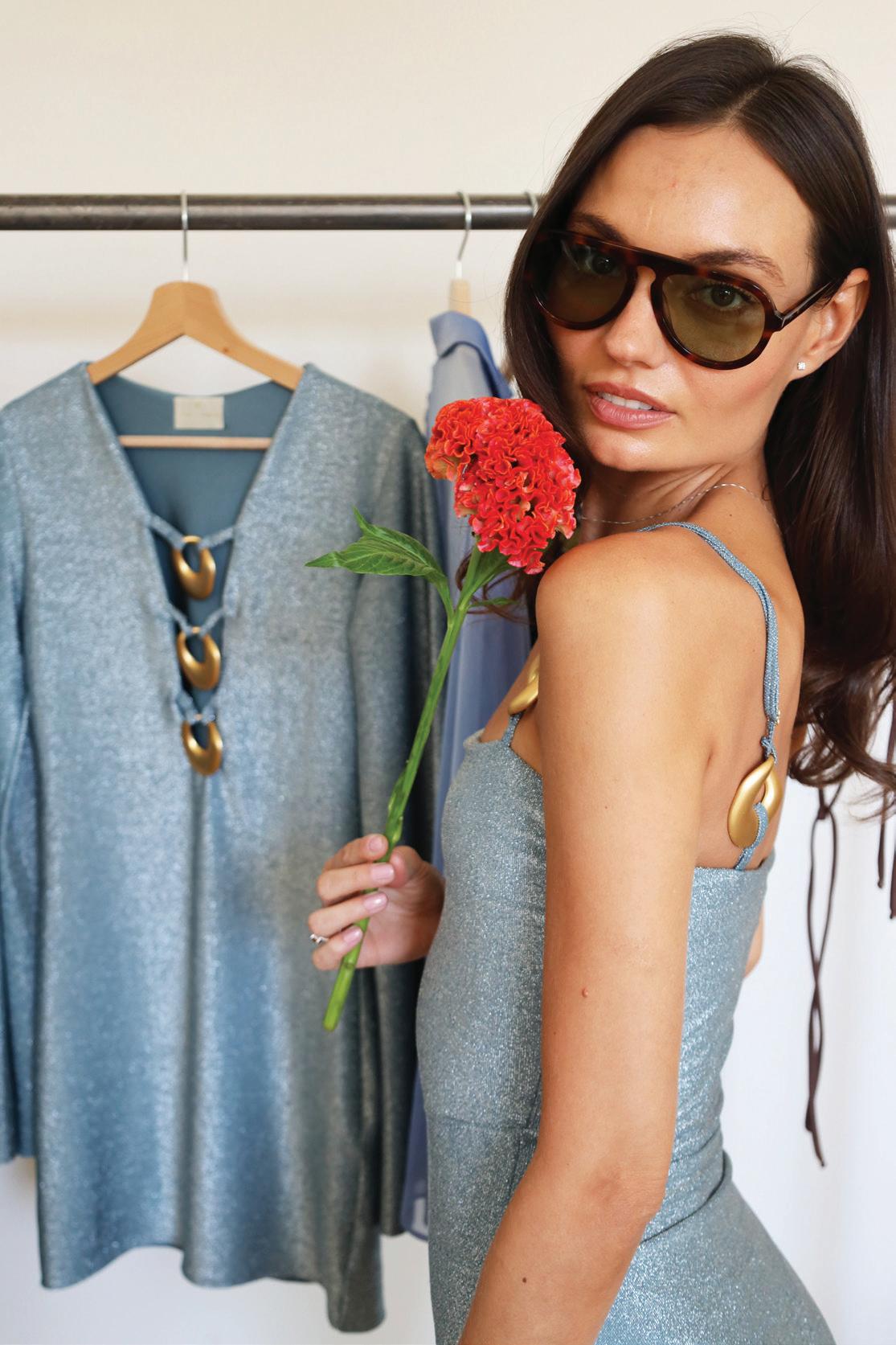

Ancora (Barranquilla, Colombia)
A celebration of timeless femininity and effortless sophistication, Ancora’s mix of swim and resort wear brings refined elegance to modern dressing. The brand’s attention to luxurious fabrics and delicate detailing makes each piece a testament to understated glamour.
Ania (Miami, Florida)
Merging contemporary design with artisanal craftsmanship, Ania represents the essence of modern luxury. Known for clean silhouettes and architectural forms, the brand bridges minimalism with emotional storytelling.
Faith Connexion (Paris, France)
A renowned sustainable fashion leader, Faith Connexion fuses rebellious fashion with artisanal craftsmanship and zero-waste values. Its “Circle of Faith” empowers emerging designers, while its boundary-pushing aesthetic fuels a global movement of style, freedom and sustainability.
Fortuna (Lima, Peru)
Inspired by Mediterranean ease and Latin warmth, Fortuna redefines modern resort wear through relaxed tailoring and flowing silhouettes. Each collection evokes a sense of optimism, rooted in natural textures and soft color palettes.
Laura Escobar (Bogota, Colombia)
Representing the contemporary Latin American woman, Laura Escobar’s designs are defined by sophistication, sensuality and strength. Each piece embodies a fusion of elegance and practicality, crafted with impeccable detail.
Milo (Punta del Este, Uruguay)
Founded in 2017 in Punta del Este, Uruguay, Milo blends fashion with sustainability through chic swimwear and knitwear. The brand’s eco-friendly approach includes fullfashion knitting and recycled materials. Produced ethically in Brazil, Milo offers stylish, trend-forward designs for confident wearers.
Palmiers Eyewear (Miami, Florida)
Effortlessly chic and eternally inspired by the tropics, Palmiers captures the vibrant energy of coastal living. The brand’s collections blend resort-ready silhouettes with a modern European sensibility.
Tatho (Sao Paulo, Brazil)
With a focus on contemporary tailoring and sleek design, Tathos stands at the intersection of fashion and art. Its minimalist approach highlights craftsmanship and quality, redefining understated luxury.
Touché (Medellin, Colombia)
A pioneer in Colombian swim and resort wear, Touché embodies sophistication and timeless allure. Each collection combines modern femininity with impeccable craftsmanship, offering pieces that move seamlessly from beach to city.
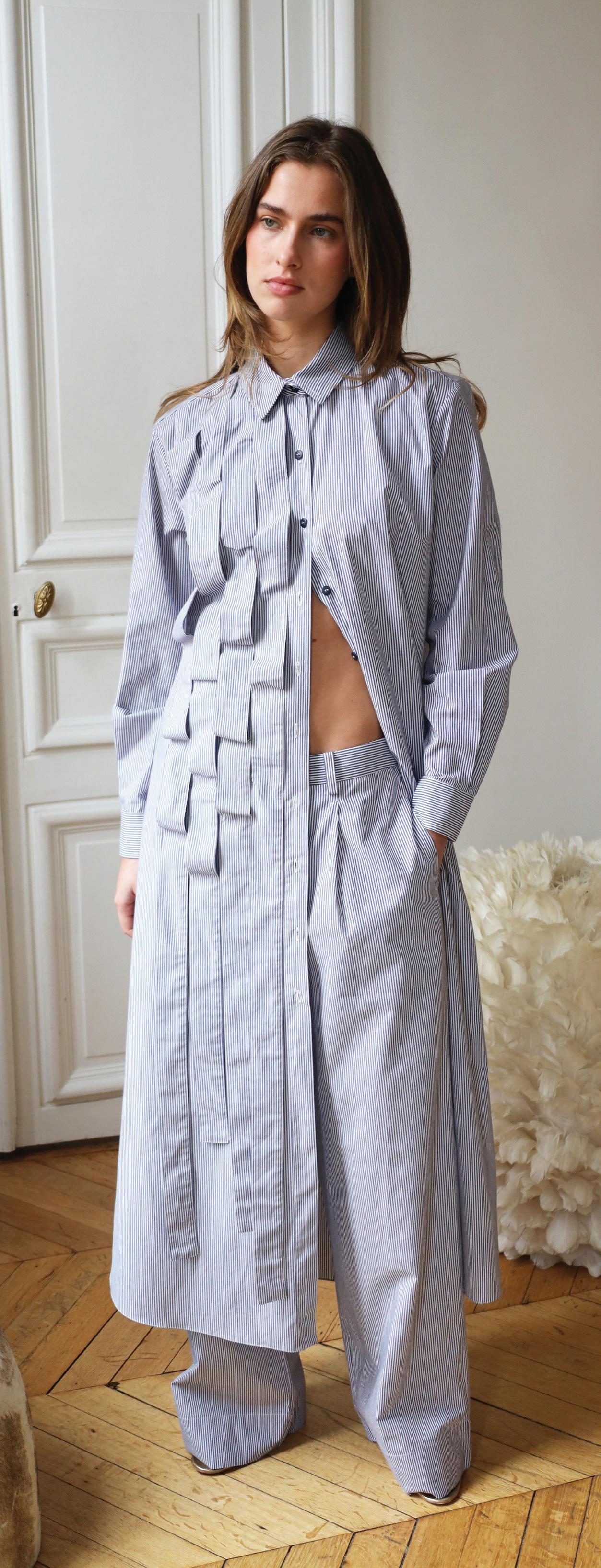
Through its participation in Paris Fashion Week, Mana Fashion Services not only showcased its Biscayne Showroom brands but also reinforced Miami’s growing reputation as a cultural and creative hub with global reach, creating pathways for global visibility, collaboration and creative exchange.

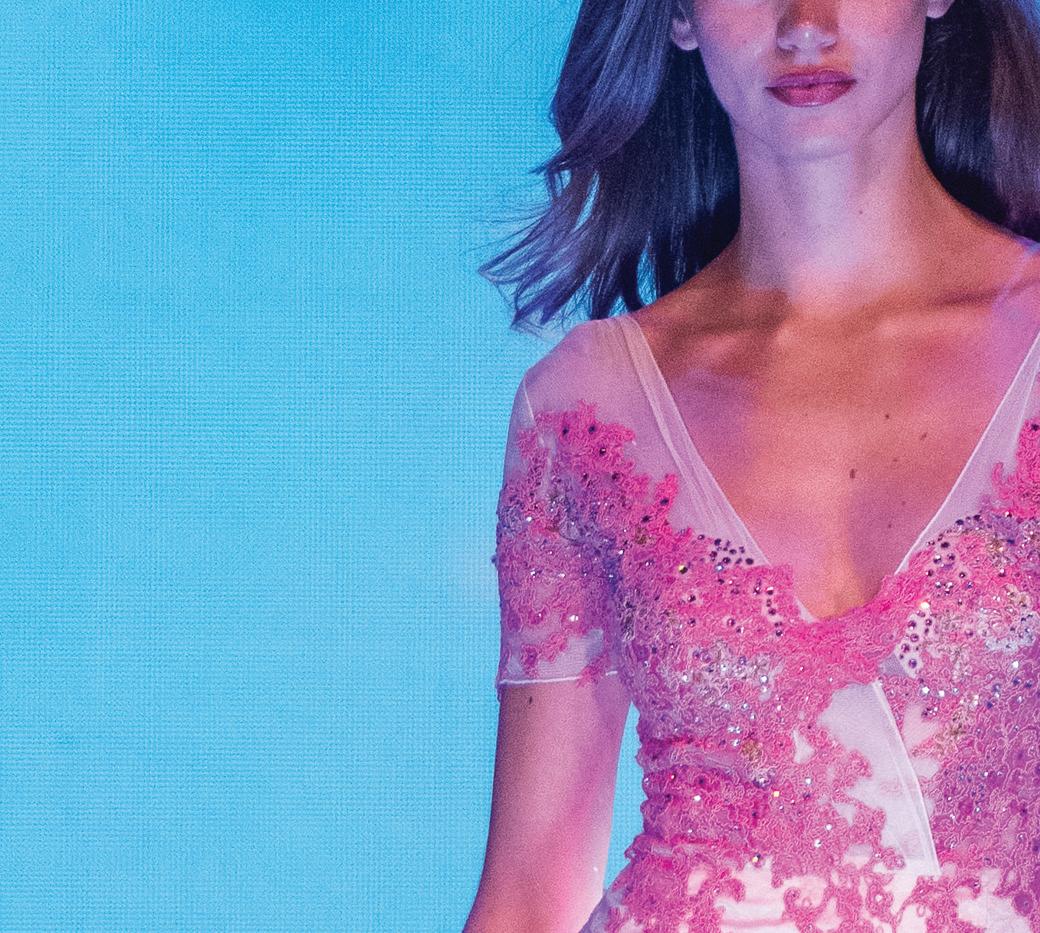









FASHION INNOVATION SHINES AT WOODBURY

UNIVERSITY’S ANNUAL RUNWAY BENEFIT



The University of Redlands and Woodbury University came together to celebrate fashion innovation and student creativity at this year’s fashion runway benefit, a dazzling showcase of emerging design talent and craftsmanship. The event marks the culmination of students’ studies in Woodbury’s renowned fashion design program, featuring imaginative, technically ambitious and personally inspired collections that demonstrate both artistry and precision.
Blending technical skills with artistic exploration, the fashion design program offers a Bachelor of Fine Arts degree that provides students with an immersive education grounded in hands-on studio experiences. From design principles and textiles to advanced draping, tailoring and patternmaking, students develop their creative voices while mastering the skills needed to thrive in a competitive and evolving industry.
Signature projects, such as the junior and senior collections, challenge designers to transform ideas into complete garments, resulting in polished portfolios that refl ect both innovation and professionalism.
“Woodbury’s fashion program is a vital part of our legacy and future,” said Krista Newkirk, president of the University of Redlands, which is in the process of integrating Woodbury through a strategic merger. “It prepares students with the technical skills they need, and the vision, confi dence and creativity to be a leader in a rapidly evolving industry. As Woodbury and the University of Redlands merge as one, we are proud to carry this legacy forward and expand opportunities for future generations of designers.”
Now in its 60th year, the annual fashion runway benefit offers students a professional showcase experience that extends beyond the runway. Participants gain handson experience in every aspect of production, from garment preparation and model coordination to event management and presentation.
This year’s milestone show, themed “La Rêverie” (“The Daydream”), featured collections inspired by cultural identity, memory and craft traditions. Senior designers presented capstone projects that expressed both personal narratives and technical mastery, including Alexandra Garcia’s structured yet delicate “Porcelain Maison;”Grecia Salinas/Grace Bonds’ “Torito,” infused with heritage from Michoacán and Tijuana; Siara Perez’s whimsical “Rainbowtopia,” a joyful refl ection
on childhood; and Alexa Lopez’s “Laced Love,” an exploration of femininity.
The evening also featured three alumni—Donny White, Esther Chandra Wang and Mariam Mujahidah—who spotlighted how Woodbury’s fashion program prepares its students for professional careers grounded in artistry, purpose and sustainability. White showcased the collections he has built since graduating from Woodbury in 2022, focusing on creating capsule wardrobes for veterans transitioning into the workforce. During Woodbury’s 2024 fashion show, he earned the Emerging Fashion Designer of the Year award.
The fashion design department honored Mujahidah with the Trailblazer of the Year Award and Wang with the Fashion Entrepreneur of the Year Award. Mujahidah, founder of Mujahidah Denim, is known for transforming post-consumer denim into sculptural, wearable art. Through her brand, she aims to redefi ne the relationship between fashion and sustainability, proving that denim always has a future. Wang is the designer and founder of Chandra, a contemporary bridal brand based in Los Angeles. Through her designs, she focuses on craftsmanship and the belief that wedding gowns should resonate deeply with the bride and her journey.
The event also honored industry leaders whose creativity inspires the next generation of students. Los Angelesbased designer Adolfo Sanchez received the Creative Inspiration Award for his bold evening wear, menswear and couture bridal collections. “Creativity has always felt like second nature to me,” he said. “My love for fashion truly began as a teenager. … It feels like this was always the path I was meant to take.”
The fashion design program director, Anna Leiker, described this year’s event as “a testament to the passion and dedication of our students, who have poured their hearts into their collections, showcasing innovative designs that push the boundaries of fashion and storytelling.”
With access to Woodbury’s renowned Fashion Study Collection—an archive of more than 3,000 historic garments, textiles and accessories by designers like Oscar de la Renta and Elsa Schiaparelli—students ground their work in both history and innovation. The result is a holistic education that prepares students to successfully shape the future of fashion.


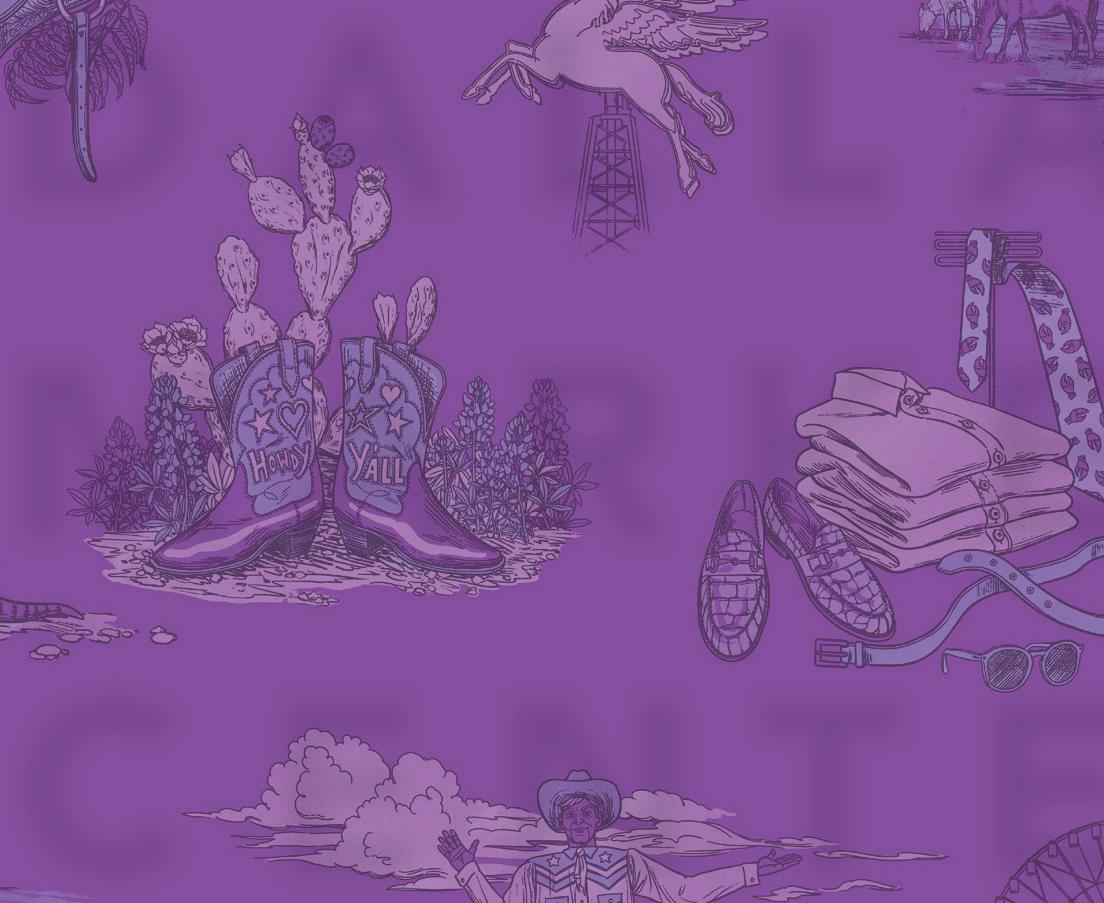



Pre-Register
Dallas Apparel & Accessories Market

OCTOBER 21-24, 2025 | JANUARY 20-23, 2026


EXCLUSIVE DETAILS FOR SHOWS IN:
• Dallas
• Denver
• Las Vegas
• Los Angeles
• Nashville
• Orlando
• New York

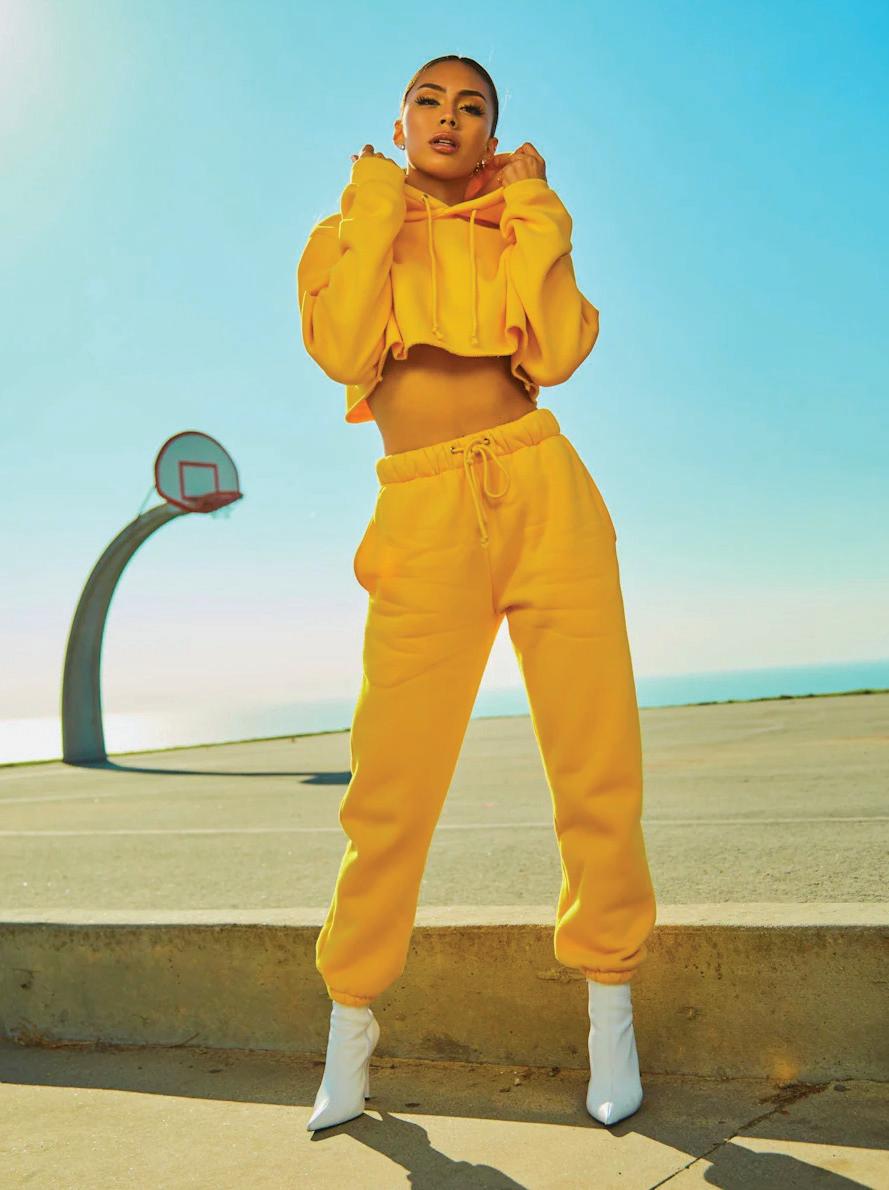
CONNECTING THE FASHION INDUSTRY WITH THE WORLD OF TRADESHOWS
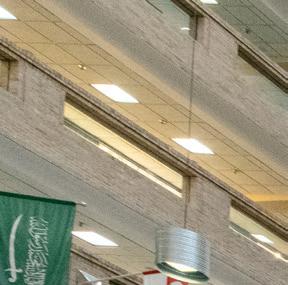


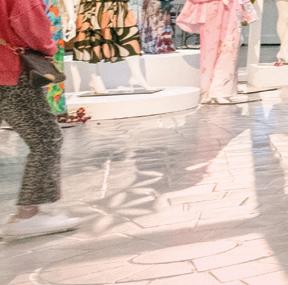



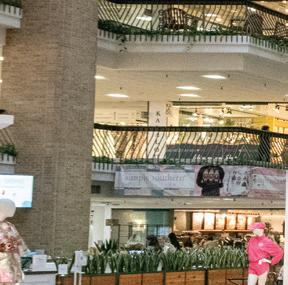
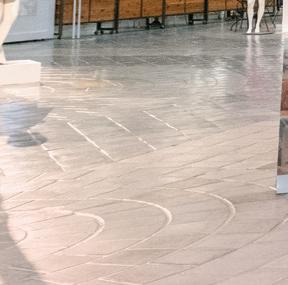





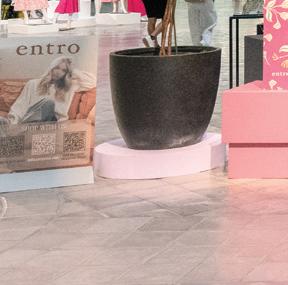








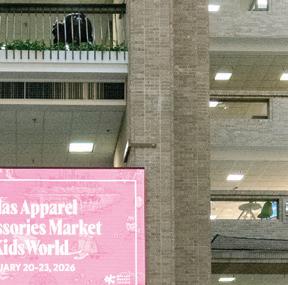





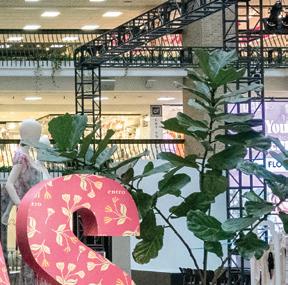
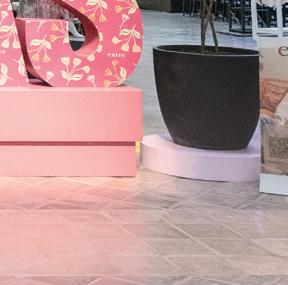








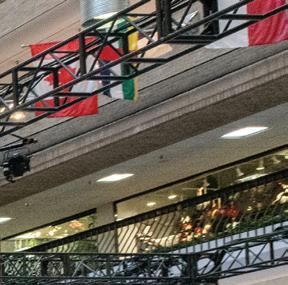
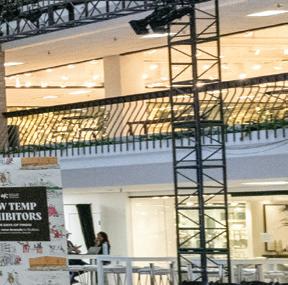
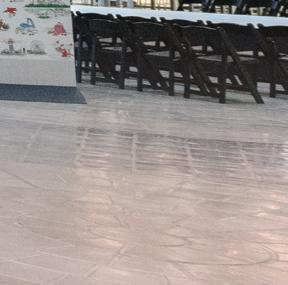





Dallas Market Center, the leading marketplace for apparel and accessories, celebrated a strong finish to the year with its final Apparel and Accessories Market, welcoming retailers from coast to coast to restock inventory, place early orders for new spring fashions and preview the trends that will return in 2026 for the Apparel and Accessories Market, taking place Jan. 20-23.
“This final market of the year once again demonstrates the strength and resilience of the fashion industry in Dallas,” said Cindy Morris, president and CEO of Dallas Market Center. “Retailers continue to choose Dallas for its unmatched mix of brands, categories and buying efficiency—alongside the energy and hospitality that make this marketplace truly unique.”
The hottest spring styles in apparel and accessories for 2026 took center stage at the Contemporary Trend Fashion Show, where five distinct color stories set the tone for spring styles: black and white, blue hues, sheer pastels, lines and drawings, and cheerful pinks. Styled by Karl Marshall, VP of creative design and events, the runway radiated joy and femininity, brought to life through light, flowy layers, organic strokes and large floral motifs that embodied a sense of ease and optimism.
Together, these looks celebrated color and confidence, creating feminine styles that felt both modern and natural. Accessories completed the story, with purses in bold brights and rich textures, oversized belts, statement jewelry and varying footwear silhouettes that tied each look together. The
result was a show that captured the spirit of spring: joyful, colorful and new.
“For this show, I wanted the styling to feel joyful and effortless,” said Marshall. “Each look plays with color, light and movement through flowy layers, soft lines and a feminine energy that feels both modern and romantic. The large floral motifs bring nature and life to the story.”
“We love coming to Dallas. We learn a lot of great things each time we attend market. Every time we visit, we find exhibitors we’ve never connected with before,” said buyer Kineta Sadler, owner of Beautifully You Boutique.
“This market has exceeded our expectations. We had a lot of returning customers, but we also open more new accounts every time we come to Dallas,” said Ricky Oh, 12th-floor exhibitor from Wish List.
The first Apparel and Accessories Market of the year will take place Jan. 20-23 during Dallas Fashion Week, offering buyers the opportunity to explore new product categories and discover what’s next in fashion. Happening alongside the market are several key industry events, including KidsWorld (Jan. 20-23), WESA’s International Western/English Apparel and Equipment Market (Jan. 21-24), the AETA International Trade Show (Jan. 21-24) and the Dallas Men’s Show Preview Day (Jan. 21-24).
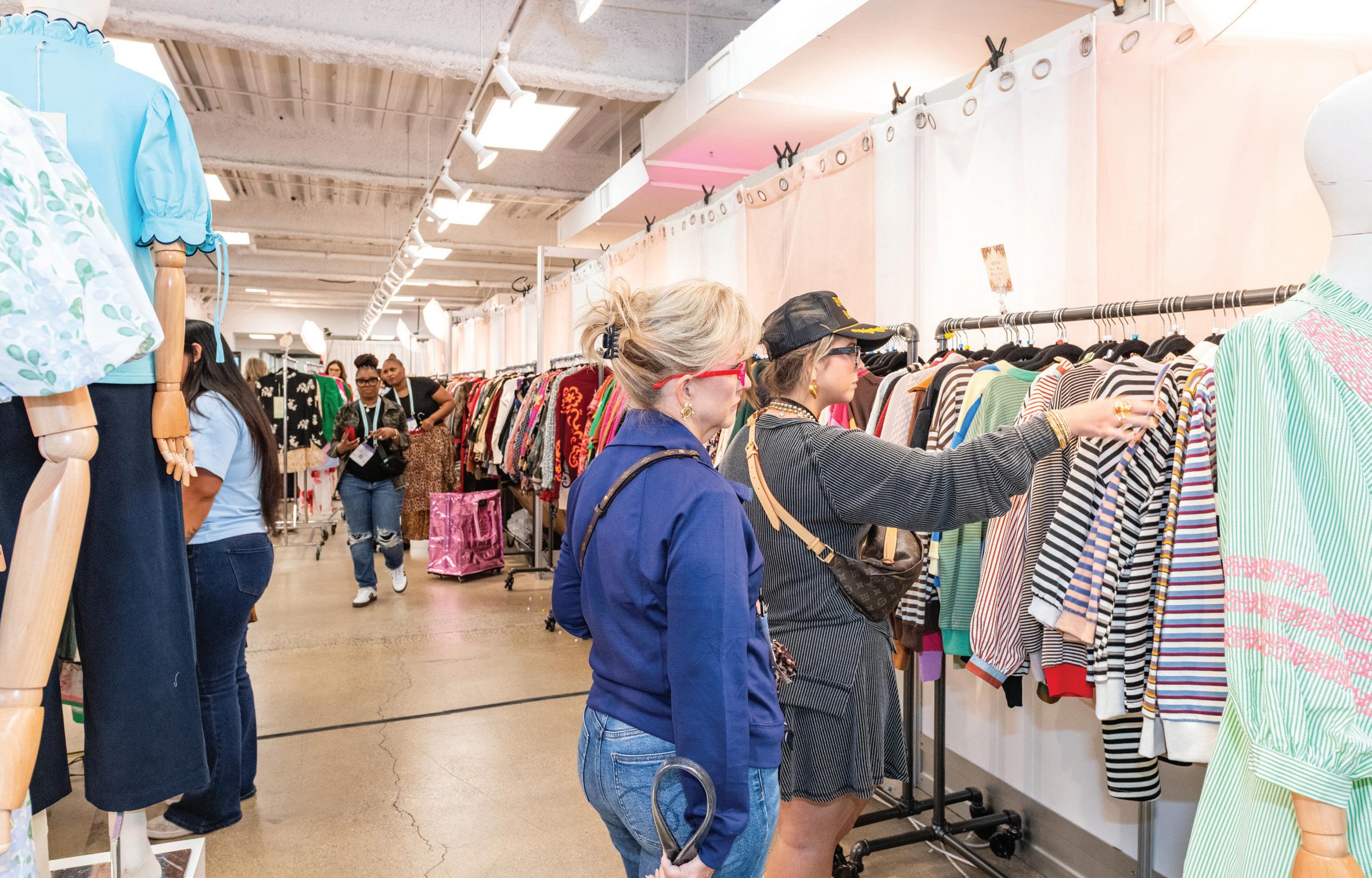



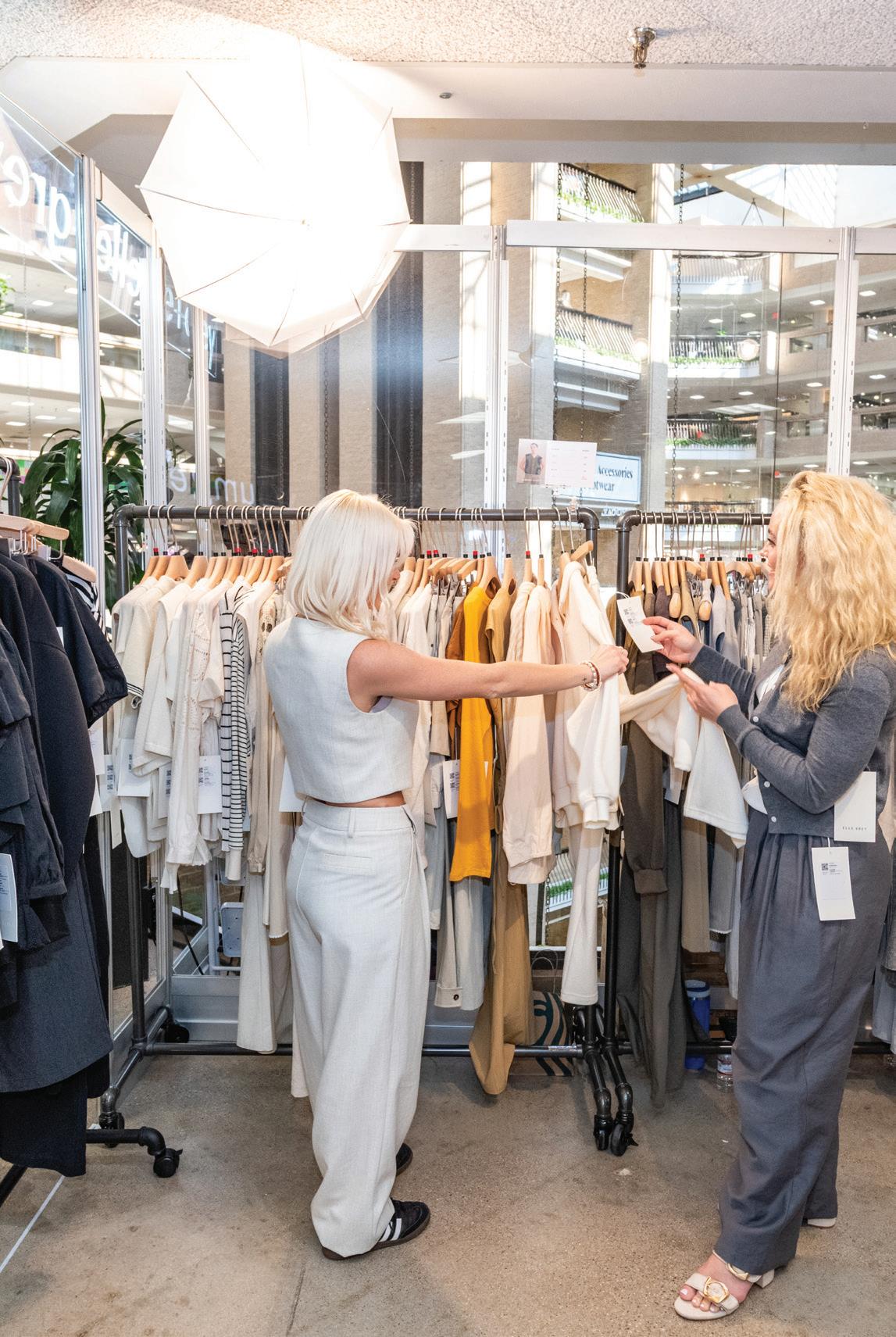
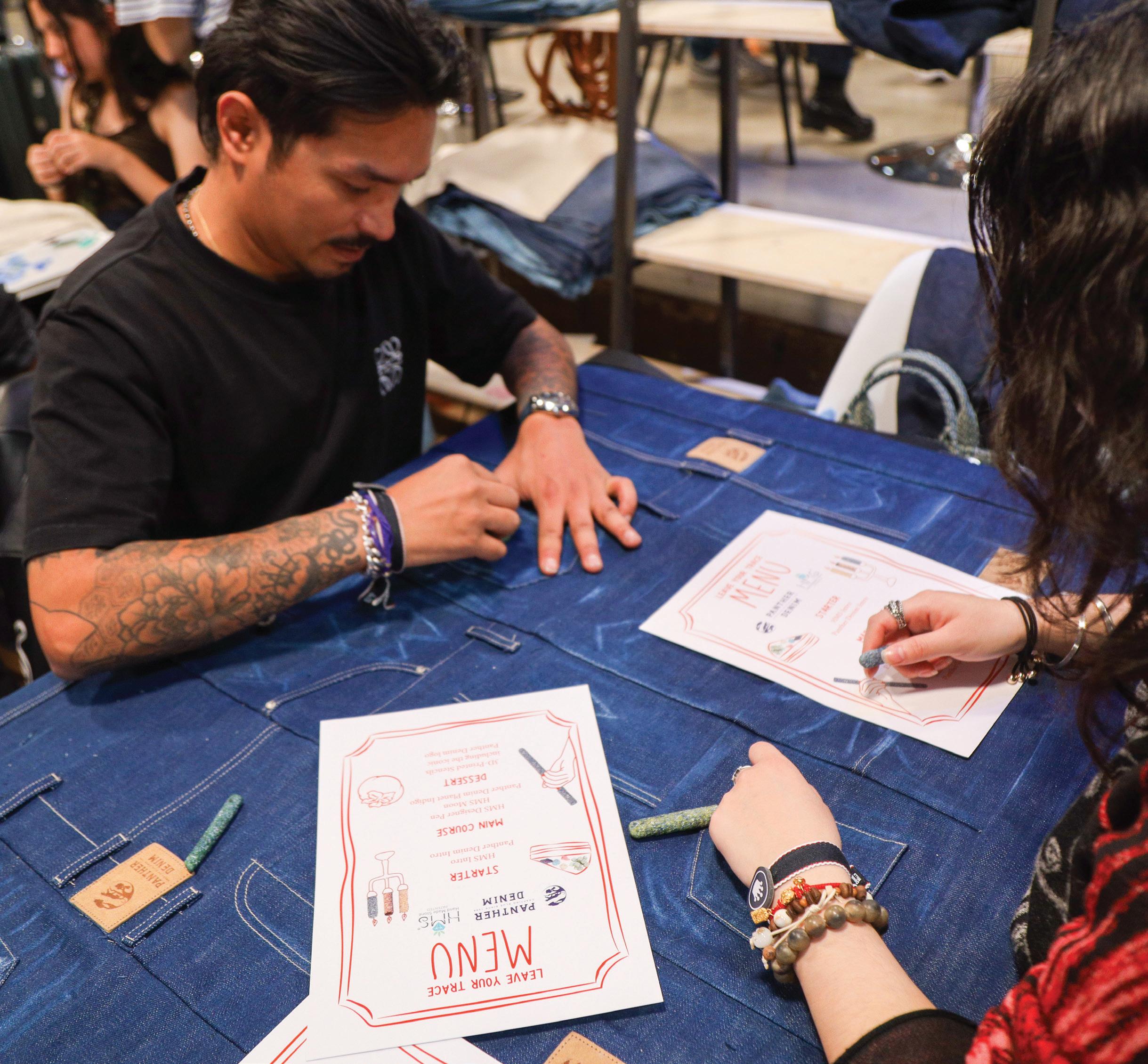
“When
I walked through the show floor, I didn’t just see exhibitors and visitors—I saw a community.”
—Kingpins CEO Vivian Wang.






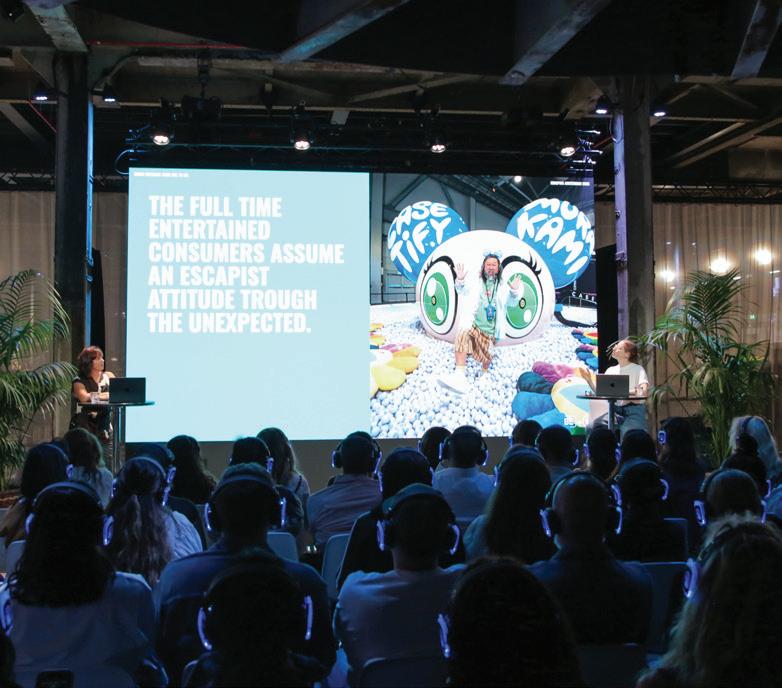
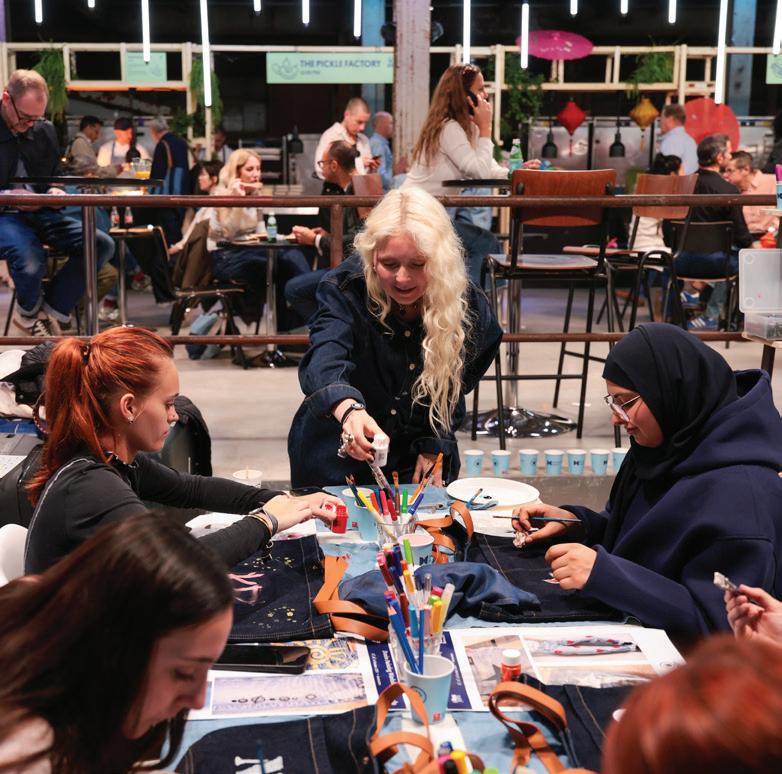

Kingpins Amsterdam drew more than 1,000 visitors from more than 500 companies, hailing from more than 40 countries— including representatives from Givenchy, Balenciaga, Max Mara, Veronica Beard, Hugo Boss, Karl Lagerfeld, Levi’s, G-Star, Armedangels, Calvin Klein, Tommy Hilfiger, Kuyichi and Kings of Indigo.
“When I walked through the show floor, I didn’t just see exhibitors and visitors—I saw a community,” said Kingpins CEO Vivian Wang. “People from different cultures, generations and perspectives came together with one shared purpose, to move our industry forward with honesty, creativity and heart. The world is changing fast, but this show reminded me that when we stand together, we don’t just adapt to the future— we shape it.”
Visitors to the show explored Made in España, the newest iteration of Kingpins’ “Made In...” initiative, which highlights innovations from a particular country or region.
Set up as an interactive museum installation, the focus was on Spanish innovation in textiles, design, technology and chemistry from Tejidos Royo, Pinter Group, Jeanologia, Asutex, Textil Santanderina, Recover and Tintes Egara. Several exhibitors collaborated on capsule collections, including Jeanologia x Textil Santanderina x Pinter Group and Asutex x Royo x Tintes Egara x Pinter Group.
“Our Made in España project demonstrated exactly that community spirit,” Wang said. “It was more than a showcase; it was a celebration of passion, craftsmanship and collaboration—proof that when we believe in something together, we can create something meaningful for everyone.”
“The Made In...” series debuted earlier this year with Made in Japan. This season brought
an expanded Made in Japan area, which featured more mills and manufacturers; “Story of the Blue,” a timeline of important events in Japanese denim history; and a look at rare archival denim pieces from several Japanese denim makers. Companies participating in Made in Japan included Doctor Denim, Ice, Ideablue, Japan Delivery Service, Kurabo, One-Any, Rainbow Textiles, Shinohara Textiles, Showa, Kaihara Denim, Kunosen, Kuwamura and NihonMenpu.
Another returning—and expanded—area of the show was the Jeanius Hub, Kingpins’ destination for innovation and discovery. Since launching last April, the Jeanius Hub has grown, demonstrating that the denim industry continues to propel forward, continually reinventing the raw materials and processes that go into making jeans. Exhibitors included Tejidos Royo, Pinter Group, FibreTrace, Chloris Biochem, Circulose, LaundRe UK, Care Applications, Lab Denim and Material Exchange.
Also new this season, The Gallery, Kingpins’ space highlighting the latest, directional fabrics and trims expanded to include new developments from denim factories, chemical suppliers and fiber producers.
Kingpins heads next to China for the Nov. 14-16 run of Kingpins Chengdu pop-up. Inspired by Chengdu’s thriving streetwear and music scene, the unique event will blend business-to-business and business-toconsumer activities, including workshops, retail and live podcasts.
“Now we take this energy to Chengdu,” Wang said. “I hope Kingpins can bring the spirit and love of denim to China in a way that connects people, inspires new ideas and builds the future together—as one community.”
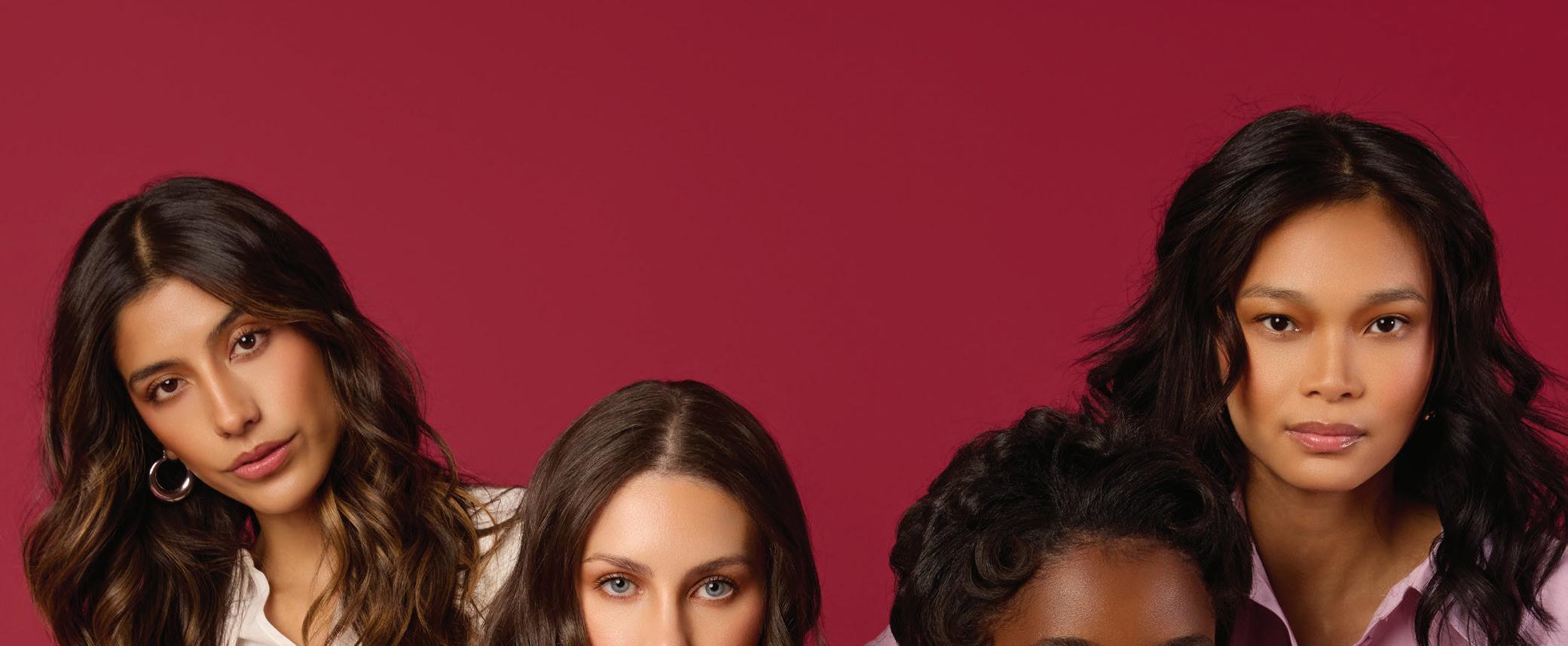

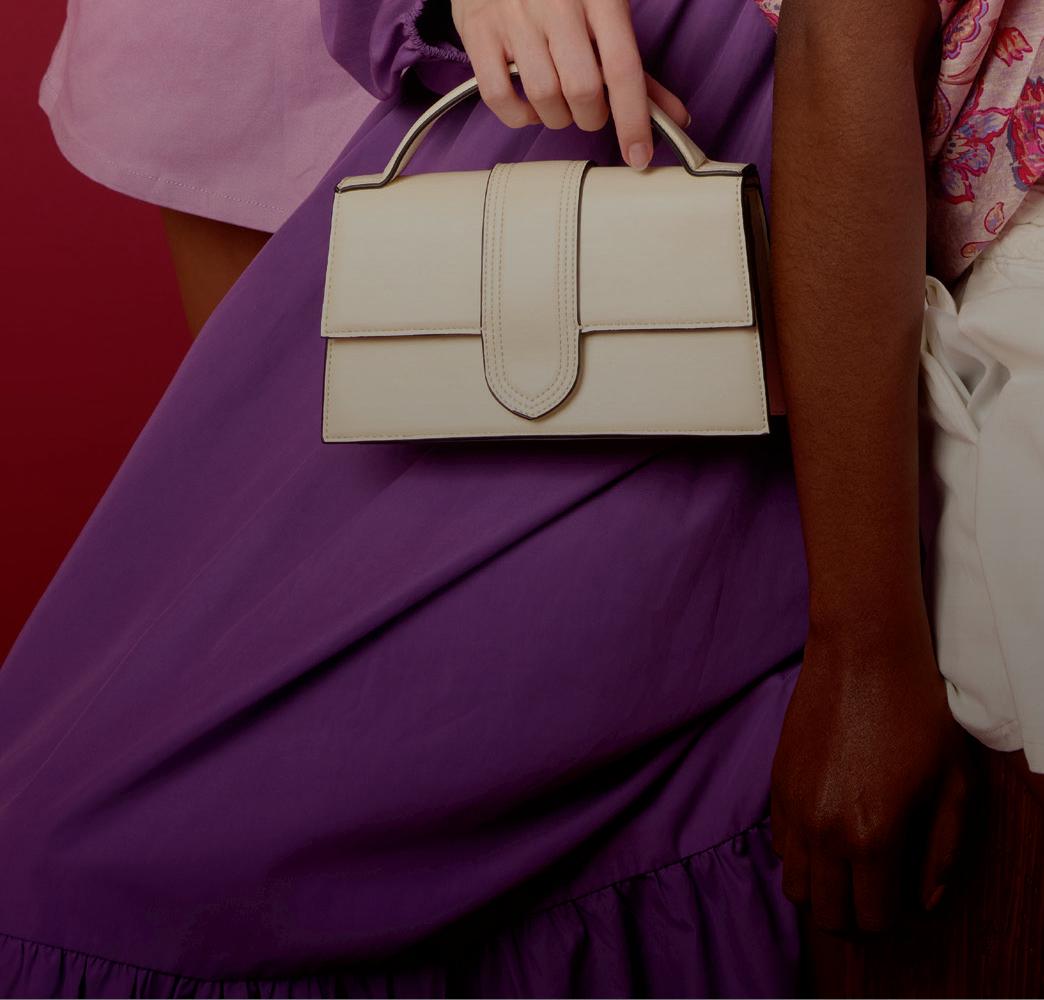


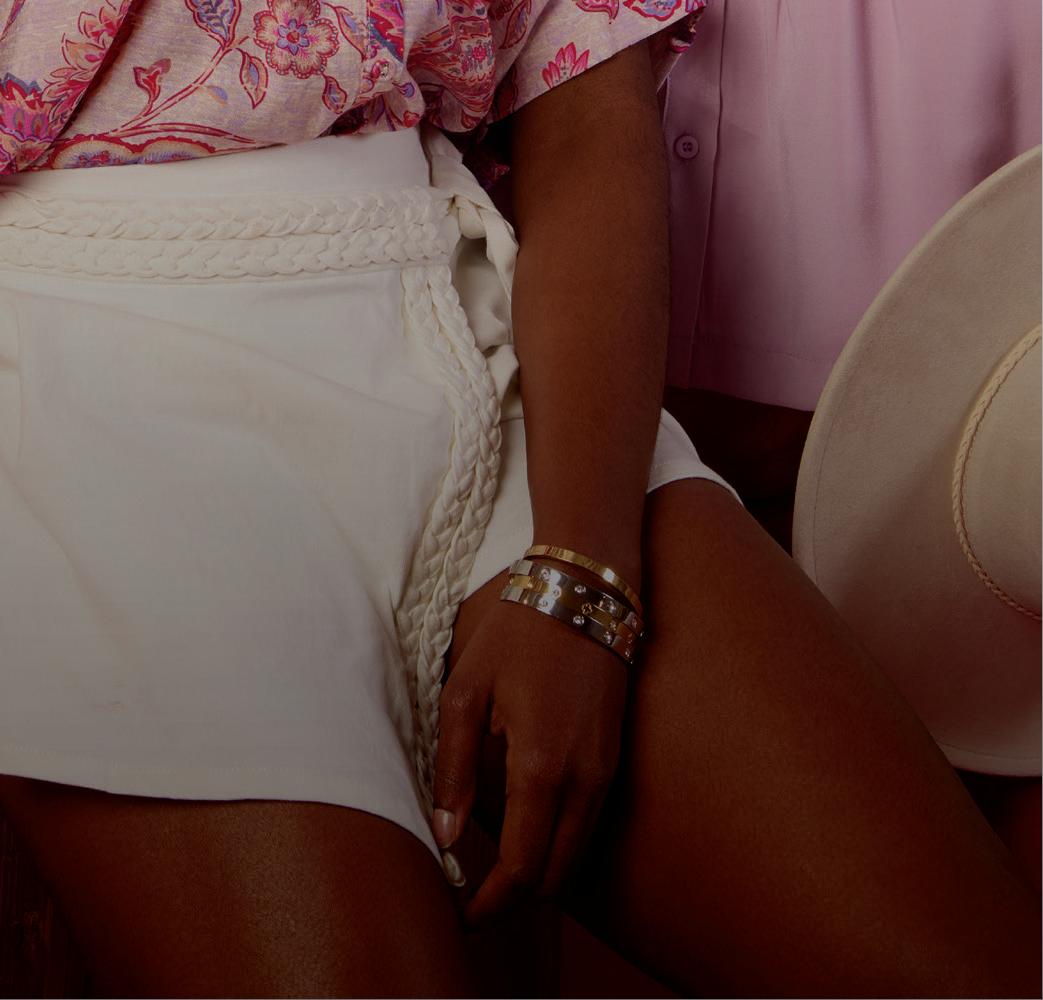
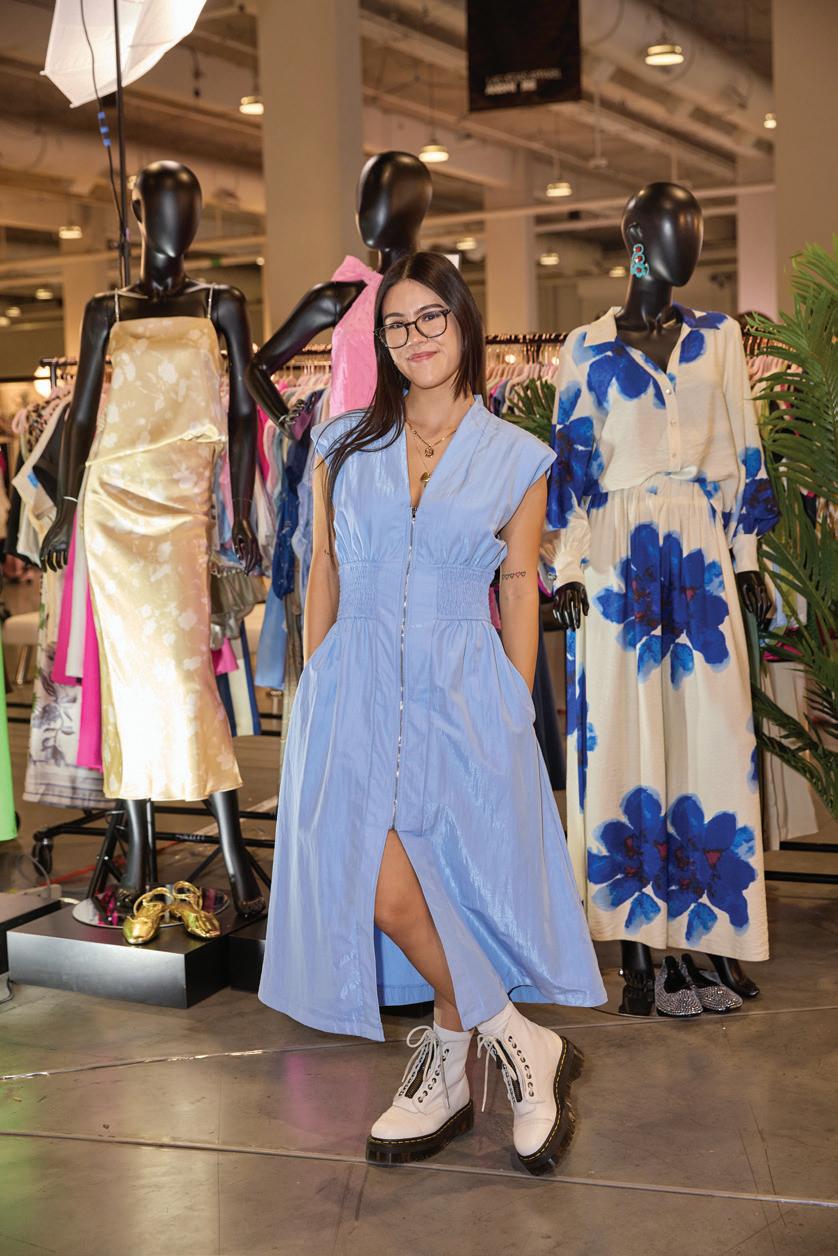















































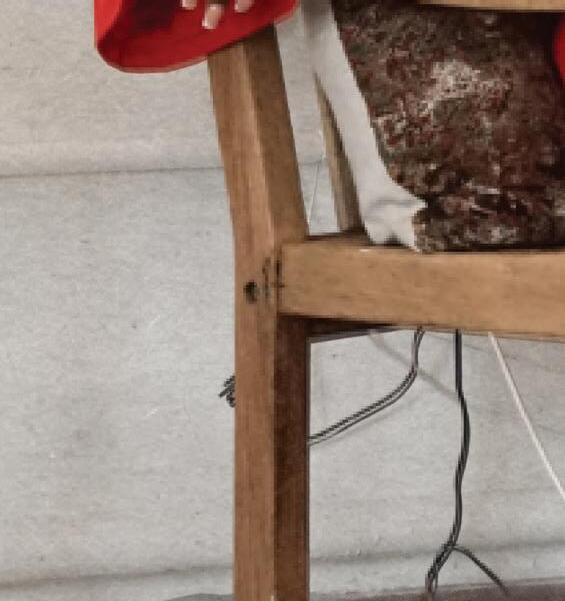

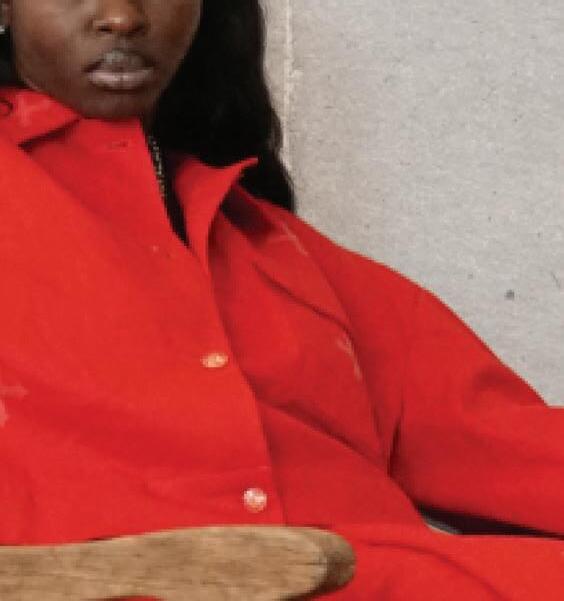
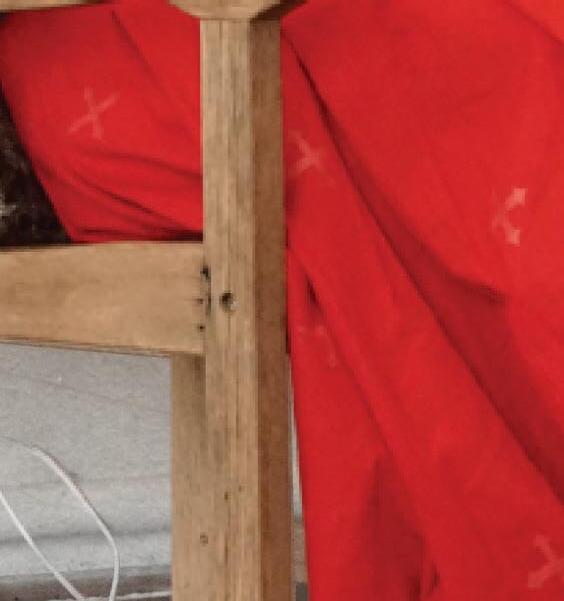





For designer Kasiah Harrison, fashion isn’t just about clothing; it’s about empowering individuality and celebrating artistry. Delirium Dreaming, their fashion (and soon-to-be home decor) brand, was built for those who think and express themselves outside the box.
Harrison had a creative, entrepreneurial spirit from a young age, launching multiple T-shirt and hoodie brands throughout high school and college. It wasn’t until watching the television series “Making the Cut” that they had a true moment of inspiration, seeing the possibilities of manufacturing and the freedom of design.


Delirium Dreaming had a slow metamorphosis into what it is today. Harrison invested $1,500 into a small run of pieces and samples, but they didn’t see true momentum until receiving a sample of the Omen pants and pitching the piece to up-and-coming musician Aries. Featuring a black-and-white printed design with barking Dobermans and Rottweilers—like the movie “The Omen”— these pants were the brand’s best sellers for an entire year, selling out in days, hours and minutes with each consecutive drop. “At first, I did not want to give up my only pair to Aries,” Harrison admitted. “But I went out on a limb and took a risk that I truly do not regret.”
For Harrison, Delirium Dreaming goes beyond aesthetic—it’s about creating art and offering an immersive experience. “My brand’s mission is to empower all the weirdos and style icons who dress and think differently,” they said. “You have to beat to a different drum to wear my pieces, and I want people to embrace it. I want to be the Gentle Monster of fashion.”
When it comes to inspiration, Harrison looks to those who defy the laws of fashion and pioneer personal expression through their designs—fashion visionaries like Virgil Abloh, André Leon Talley and Michèle Lamy, who never fit into a box.

present in the brand’s designs—whether as a vehicle for storytelling or as a representation of Harrison’s pure appreciation for fine art. They also collaborate with artists outside of fashion, including Korean artist @soft_ spine, who designed the brand’s logo and whom Harrison hopes to one day partner with for an installation.

Reflecting on the milestones that have shaped Delirium Dreaming, Harrison points to a few defining moments. “Being at New York Fashion Week in my first year of business, being stocked at Urban Outfitters—and all of my future projects.”

Delirium Dreaming’s latest collection, Project Mundane, began with a question: “What would crusaders and knights wear in the modern day on their day off?” The line draws inspiration from Catholicism, medieval motifs and the film “Conclave.” For Harrison, the collection photoshoot was all about bringing this vision to life. “The photo studio matched the aesthetic I was looking for, with oriental rugs and Middle Eastern music playing,” Harrison shared. “I chose my models to reflect Orientalist paintings. And Ty McColley, my photographer, executed the painterly aspect perfectly. We didn’t even need to edit the photos; the lighting and studio were perfect.”
In addition to designing for Delirium Dreaming, Harrison has always been passionate about elevating creative voices. In 2023, they launched Dreemz Magazine, where they feature up-and-coming artists in Philadelphia, London and Kyiv—many of whom Harrison discovered at fashion events and on social media. “When I admire someone’s passion, hard work and effort, I would like to give them any platform I can offer,” Harrison said. “I usually DM them asking if we could work together, and we tend to collaborate. The reason this is so important to me is because we all have a dream, so why not help each other make that dream a reality?”
Art history is another major influence for Delirium Dreaming. “The Baroque period speaks to my soul,” Harrison shared. “One of my most popular pieces, the Murked trenchcoat, features artwork by Artemisia Gentileschi, one of my favorite painters.” Art is always

Looking ahead, Harrison hopes to host an in-person pop-up in New York and create an immersive experience of their own. “I’m thinking of making it dream-themed,” they said. “But I will say nothing more—my lips are sealed.”






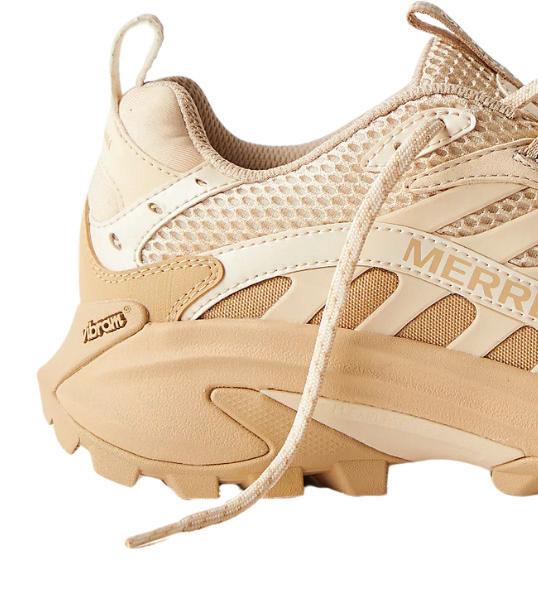
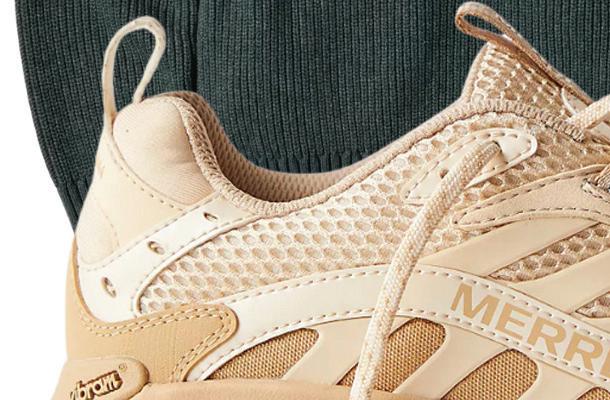



Merrell | Moab Speed 2 Vent Sneakers | $160 | merrell.com
Violette_FR | Lip Nectar | $29 | violetterfr.com
Moma Design Store | Acorn Vase | $45 | store.moma.org
Apparis | Esme Earmuffs | $98 | apparis.com
Desigual | Medium Shoulder Bag With Stitching | $139 | desigual.com
Kayali | Yum Pistachio Gelato 33 Body Spray | $45 | us.kayali.com
Ola Azul | Zella Flare One Piece | $185 | olaazulsw.com
Moma Design Store | Casio AQ230 Analog Digital Watch | $80 | store.moma.org
Glossier | Ginger Snap Balm Dotcom | $16 | glossier.com
Anthropologie | Mixed Metal Link Locket Bracelet | $44 | anthropologie.com
Reformation | Inez Ballet Flat | $268 | thereformation.com







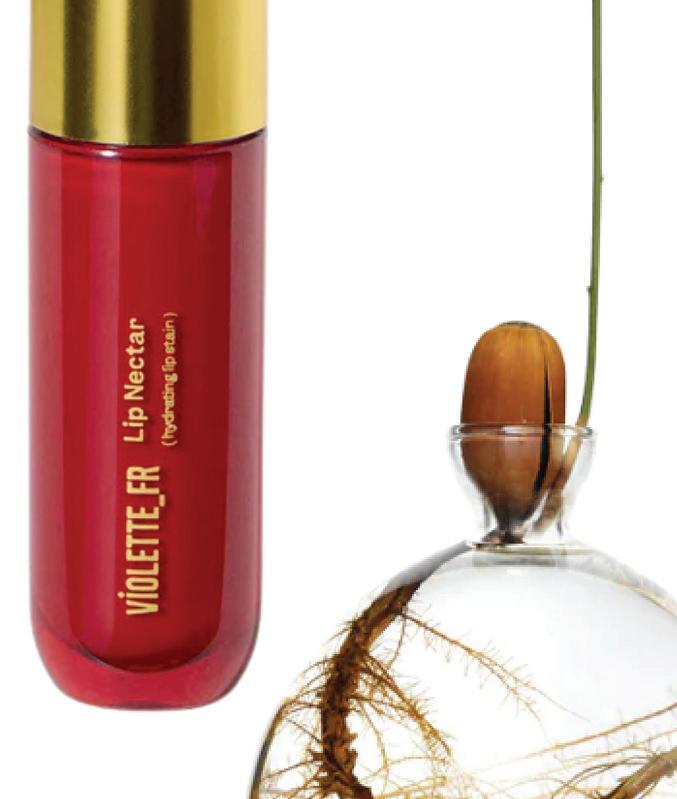
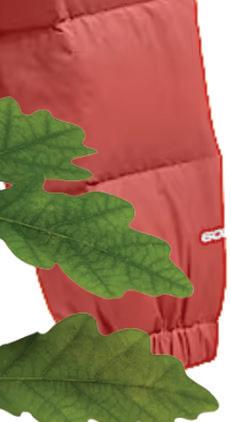





















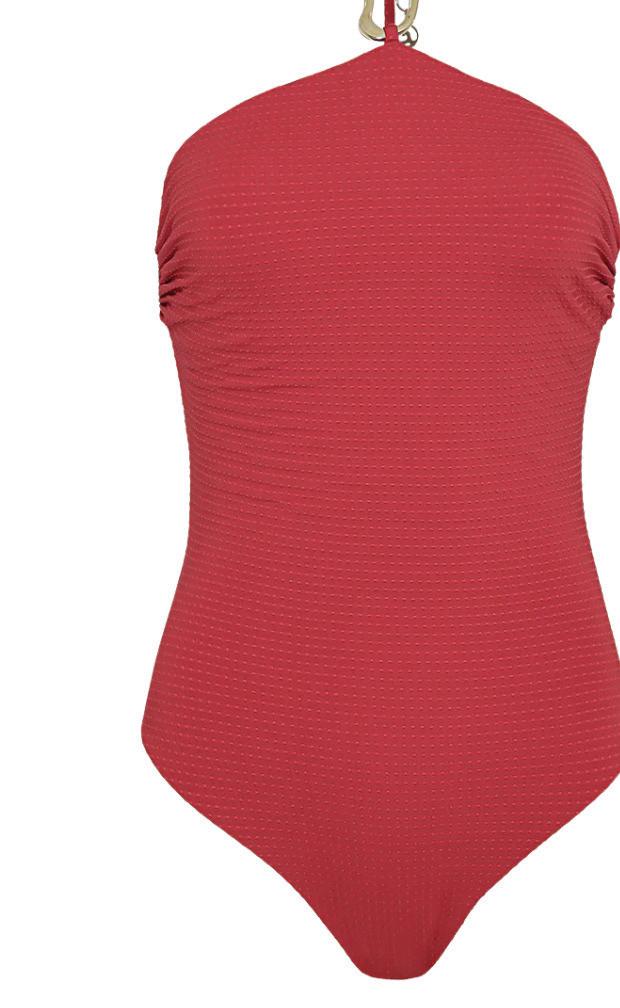



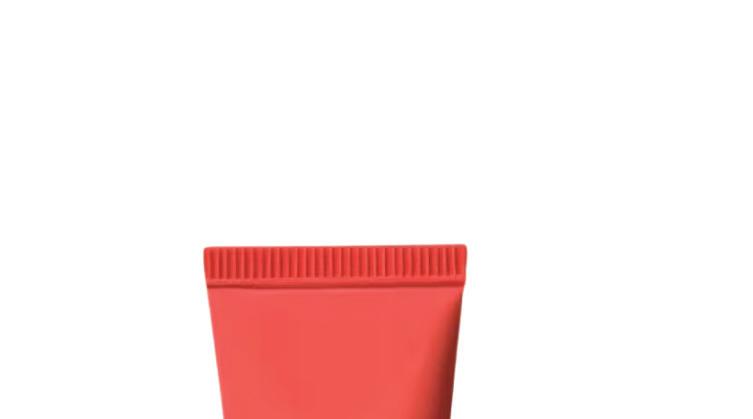














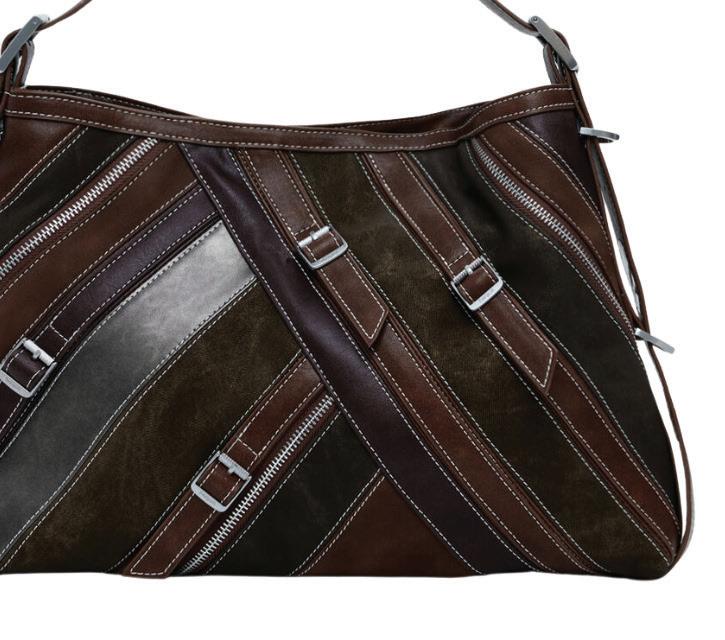

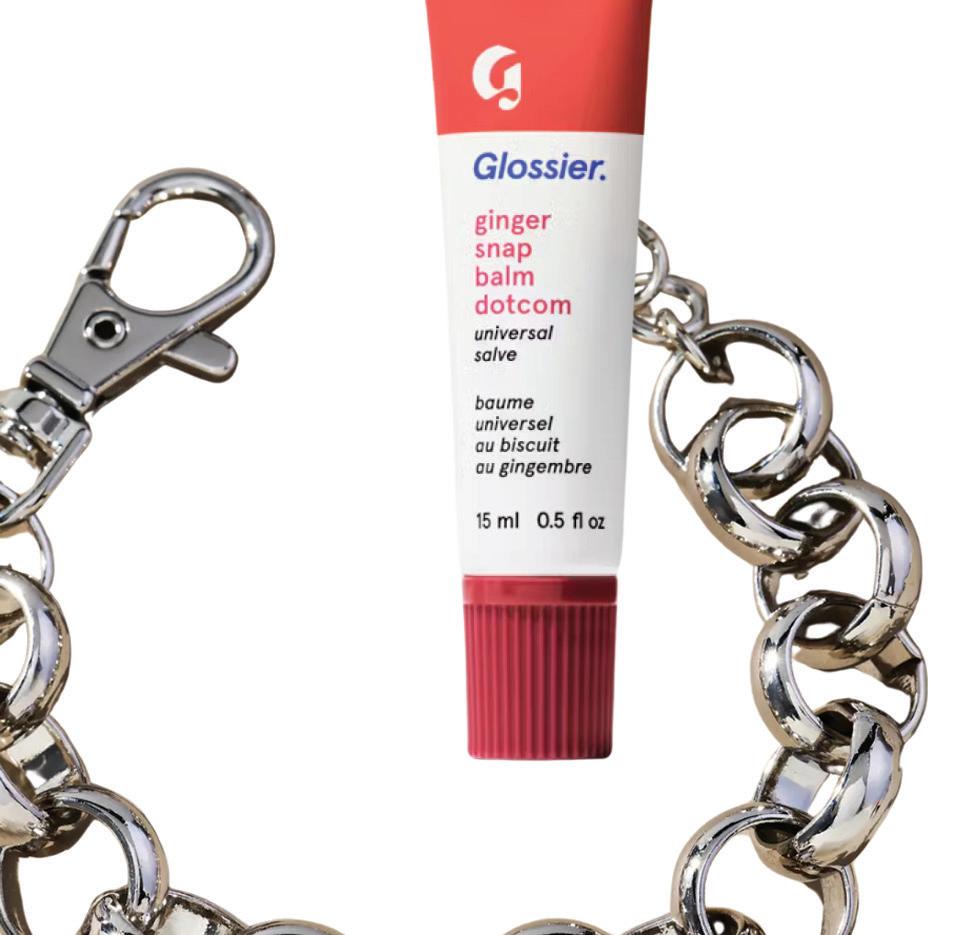






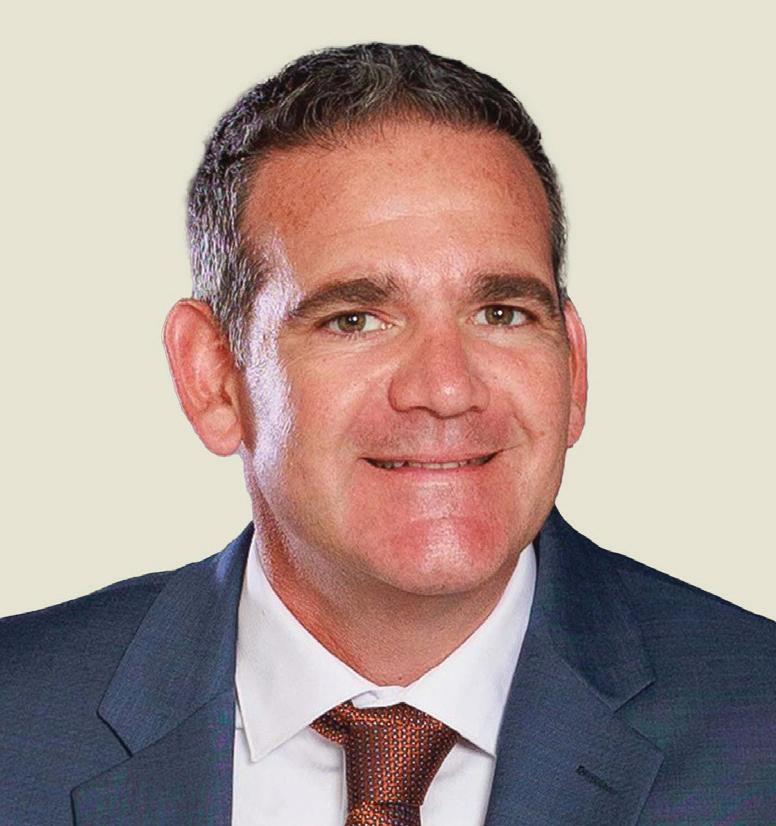




Dynamic’s latest online platform, DYNAMIC TMS, automates the tendering of a shipment to the preferred carrier based on your criteria. The system automates the routing, optimization, and real-time visibility of each transaction resulting in a more efficient cost saving solution.

Retailers are successfully using our new user-friendly technology and experiencing great results. Contact us today to learn how our new platform can improve your shipping experience.